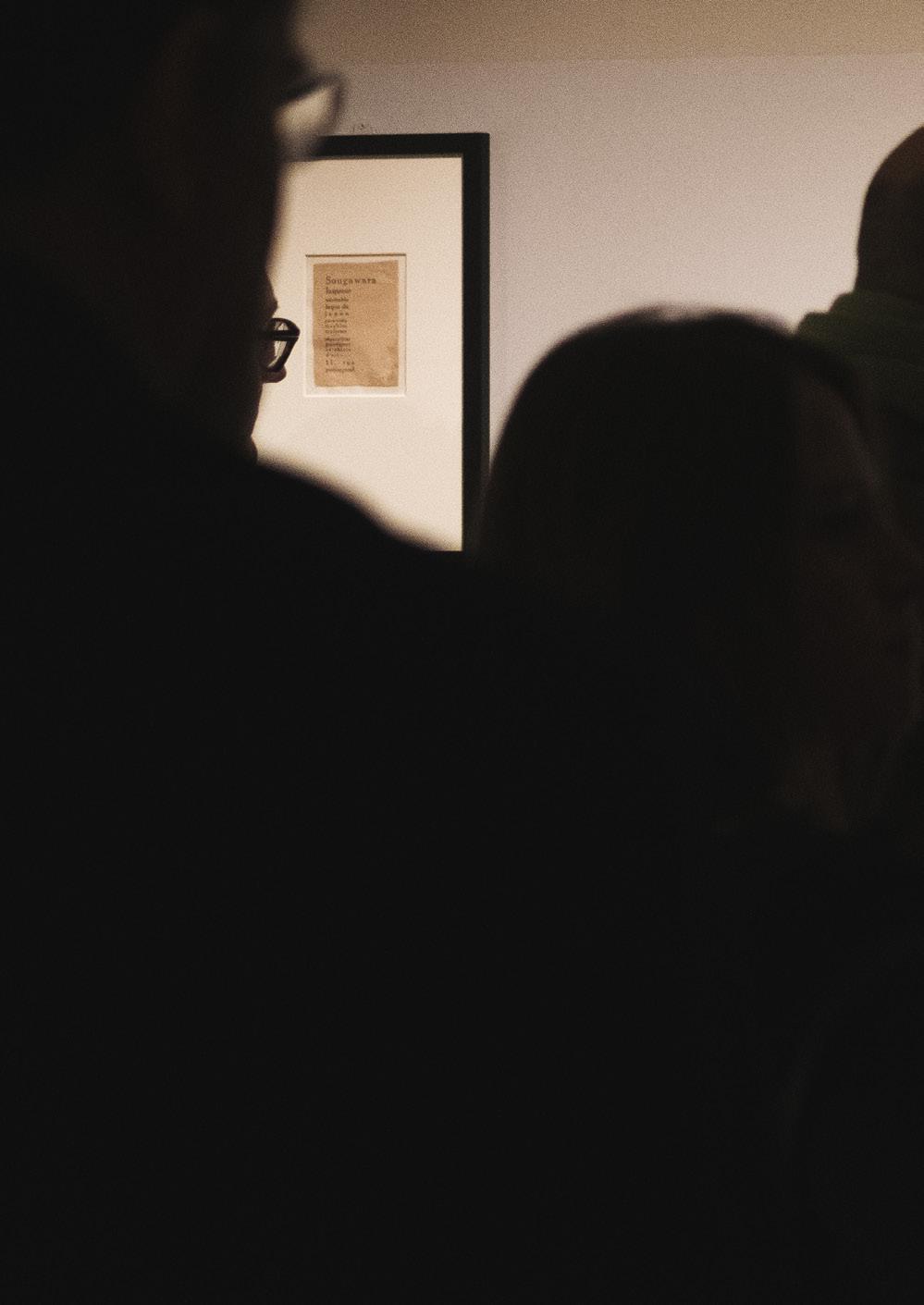In






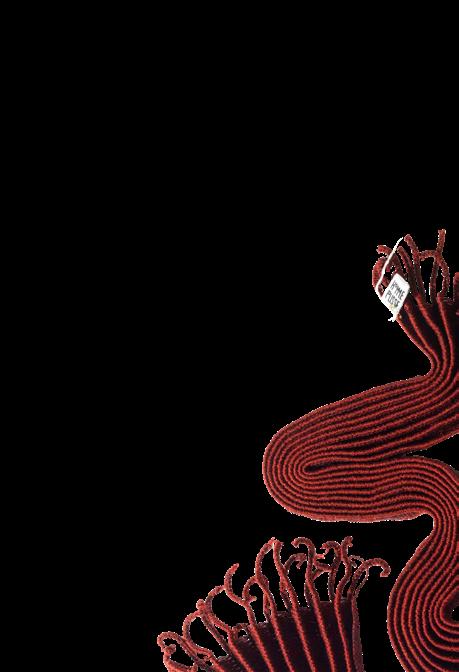
Founded in 1993 by Dr. Susan Weber, Bard Graduate Center (BGC) is a research institute in New York City dedicated to studying the human past through objects, from those created for obvious aesthetic value to ordinary things that are part of everyday life. It grants MAs and PhDs in the field of decorative arts, design history, and material culture. Its academic programs, gallery exhibitions, research initiatives, publications, and events explore new ways of thinking about the decorative arts. A member of the Association of Research Institutes in Art History, BGC is an academic unit of Bard College. bgc.bard.edu
Michele Beiny-Harkins, Vice-Chair for Nominations Nicolas Cattelain Brandy S. Culp, Secretary Hélène David-Weill Nancy Druckman, Chair Philip D. English Holly Hotchner Fernanda Kellogg
Dr. Arnold L. Lehman Martin Levy David Mann
Dr. Caryl McFarlane Dr. Steven Nelson Jennifer Olshin
Melinda Florian Papp
Lisa Podos
Ann Pyne Linda Roth
Sir Paul Ruddock
Gregory Soros Luke Syson
Dr. Charlotte Vignon
Shelby White
Mitchell Wolfson, Jr. Philip L. Yang, Jr.
Dr. Susan Weber, ex-officio
Dr. Leon Botstein, ex-officio
Dr. Christian Ayne Crouch, ex-officio
TBD Director’s Welcome
TBD Dean’s Introduction
TBD Projects
TBD Cultures of Conservation
TBD Conserving Active Matter
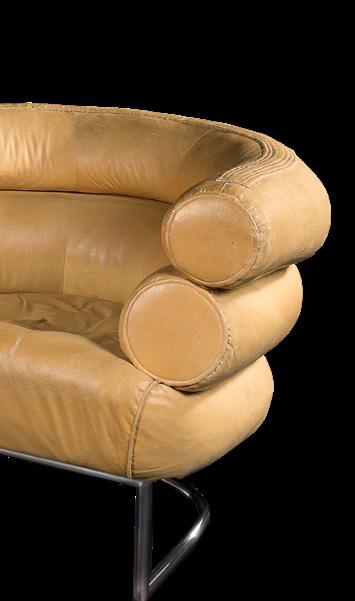

TBD
Richard Tuttle: What Is the Object?
TBD Playing an Active Part in Conserving Active Matter
This is a hopeful moment when it seems perhaps the worst of the Covid-19 pandemic may be behind us. Flowers are blooming and trees are in leaf all over the Upper West Side of Manhattan, where Bard Graduate Center makes its home. For the first time since 2019, our MA students are preparing to travel to Paris for a ten-day study course, led by professor Jeffrey Collins and organized as part of an ongoing exchange with the École du Louvre. This will be followed by a two-week archaeological field trip to Greece led by professor Caspar Meyer.
As sad as we were that the 2020–21 academic year had to take place almost entirely online, it taught us a great deal about our capacity for adaptability and resilience. We have put those lessons into productive use in 2021–22, incorporating digital tools to make BGC research and exhibition experiences available all over the world.
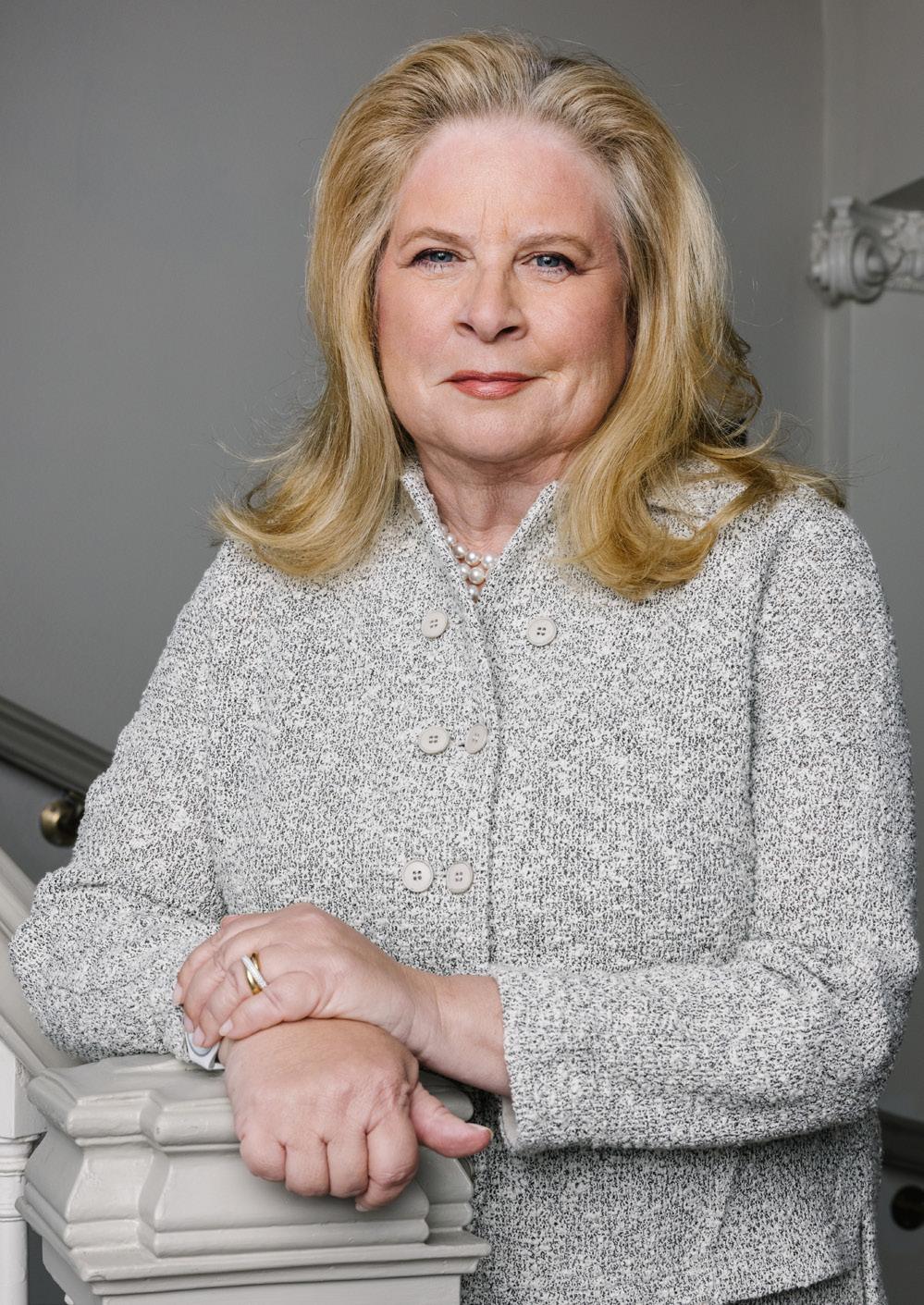
I want to offer special recognition to BGC students who demonstrated an impressive ability to thrive under the difficult circumstances of the pandemic: launching new ways of presenting their research online; producing videos of fascinating object biographies; leading virtual and in-person tours of our critically acclaimed exhibitions; participating in conversations and trainings about racial justice, diversity, equity, access, and inclusion (DEAI) across our fields of study; and giving essential feedback for our new course, “Unsettling Things: Expanding Conversations in Studies of the Material World.” I’m very proud of their achievements. I’m also thankful to the generous donors whose ongoing support allowed us to offer PhD candidates an additional year of funding to complete their dissertations after their research was delayed during Covid.
The BGC faculty adapted and rose beautifully to the challenges of the past two years: teaching and speaking at conferences on Zoom, planning exhibitions and completing publications, launching new courses and online initiatives, bringing diverse voices and research into their work, and continuing to nurture the sense of community that students tell us makes this place so special.
On a personal note, BGC curators Earl Martin and Laura Microulis, many other staff members, and I devoted years of work to the exhibition Majolica Mania: Transatlantic Pottery in England and the United States, 1850–1915. Postponed twice because of Covid, it was wonderful to see it reopen the BGC Gallery in fall 2021. I’m also very proud that the accompanying three-volume catalogue was awarded the 2021 Historians of British Art Book Prize for an outstanding multi-authored book on the history of British art, architecture, and visual culture. The exhibition has continuing impact with installations at the Walters Art Museum, March 13–August 7, 2022, and the Potteries Museum and Art Gallery in Stokeon-Trent, England, where so many of the objects in the exhibition were created, October 8, 2022–January 29, 2023.
Susan Weber. Photo by Da Ping Luo. Director’sTwo excellent exhibitions opened in the BGC Gallery in February: Conserving Active Matter and Richard Tuttle: What Is the Object? Conserving Active Matter and its corresponding publication and events represent the culmination of BGC’s ten-year project Cultures of Conservation, which was made possible by the support of the Andrew W. Mellon Foundation. Richard Tuttle: What Is the Object?, encourages visitors to pick up, hold, and interact with the objects Tuttle has collected over five decades. We are honored that many of these objects will become a permanent part of the BGC Study Collection where they will provide opportunities for examination and research by generations of future students.
BGC owes a debt to its alumni, who reached out in the summer of 2020 to urge us to do more and move quickly on DEAI initiatives. Although there is much more work to do, we are making progress. Since 2021, Dean Miller and I have been meeting regularly with BGC alumni who have shared their wisdom and experience in curation and exhibition-making with us. They have also offered career advice to graduating students. Seemingly every week, I learn of a significant award won, position landed, publication or paper written, exhibition curated, or another entrepreneurial or creative project undertaken by a BGC alum. That alumni continue to care deeply for BGC and its current students even as they achieve such remarkable professional success fills me with pride and gratitude.
With luck the 2022–23 academic year will take place entirely in person. I want to thank BGC students, faculty, and staff for surmounting the difficulties of the past two years. Together we will meet whatever challenges the new academic year may bring and continue BGC’s essential work of exploring new ways of thinking about decorative arts, design history, and material culture.
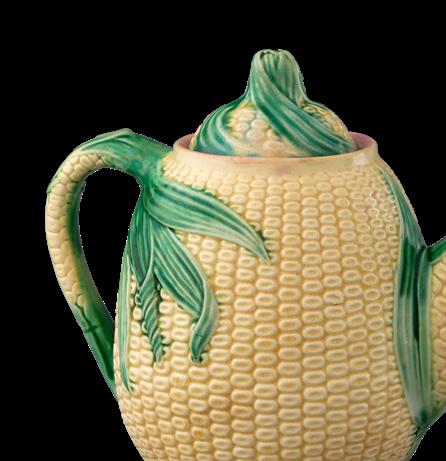
 Susan Weber Founder and Director
Susan Weber Founder and Director
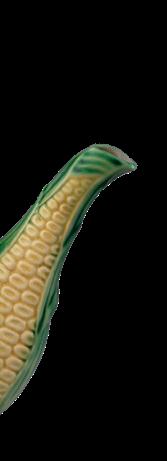
People often ask me, “what’s next at BGC?” This question always reminds me of the glorious medal designed by Leon Battista Alberti (1404–72) with his image and motto: Quid tum What then? Or, as it’s often translated, what next?
Over the past two years, we have made visible and some less visible steps toward the future. We have brought our decade-long Andrew W. Mellon Foundationsponsored Cultures of Conservation initiative to a resounding conclusion with the exhibition Conserving Active Matter, the two-day conference Conservation Thinking in Japan and India, and a second MacArthur x BGC series, What Is Conservation? We created a new seminar, Art and Material Culture of Africa and the African Diaspora, and a new post-doctoral fellowship in the arts of Africa with the Brooklyn Museum. We re-launched our public events in the second year of the pandemic, emphasizing week-long residencies to make the most of our time with visiting speakers. And, like so many institutions, we dramatically augmented our digital offerings, infrastructure, and aspirations.

The changes to the institutional structures supporting this work were less visible. In 2021 we created the Department of Research Collections to unify BGC’s book, object, digital, and archival holdings. This was undertaken with an eye to the steady expansion of the study collection and the institutional archive. This reorganization will facilitate access to an innovative digital recuration of past and newly archived BGC exhibitions. Few activities are more future-oriented than creating an institutional archive, only superficially about the past. In 2022 we initiated Public Humanities + Research, or PH+R, to bring together all BGC events in a more efficient delivery system and align our entire output of programs with the institution’s mission to do research at every level and present it at every turn. PH+R will reach into the classroom, too, training our students to develop events and serving as a test bed to build upcoming BGC programming, whether for the gallery or the lecture hall.
What we have not yet gotten to—the real Quid tum— is the next step towards consciously integrating the various things we do into a more project-based approach. We already run multi-year research projects; we call them exhibitions. We have worked to integrate them more fully from start to finish into the academic program. However, what if we planned the academic program around these projects and others we took on? What if we accepted doctoral students who wanted to work on them? What if we thematically planned publishing and public events around them? The answer is that we would be unlike any other North American graduate research institute—and exactly like the European Research Council’s grantees. Maybe that’s too big a stretch for right now. The advantage of this exercise in thinking is to reveal how close we are to that unique situation.
need Peter’s signature
Peter N. Miller Dean and Professor
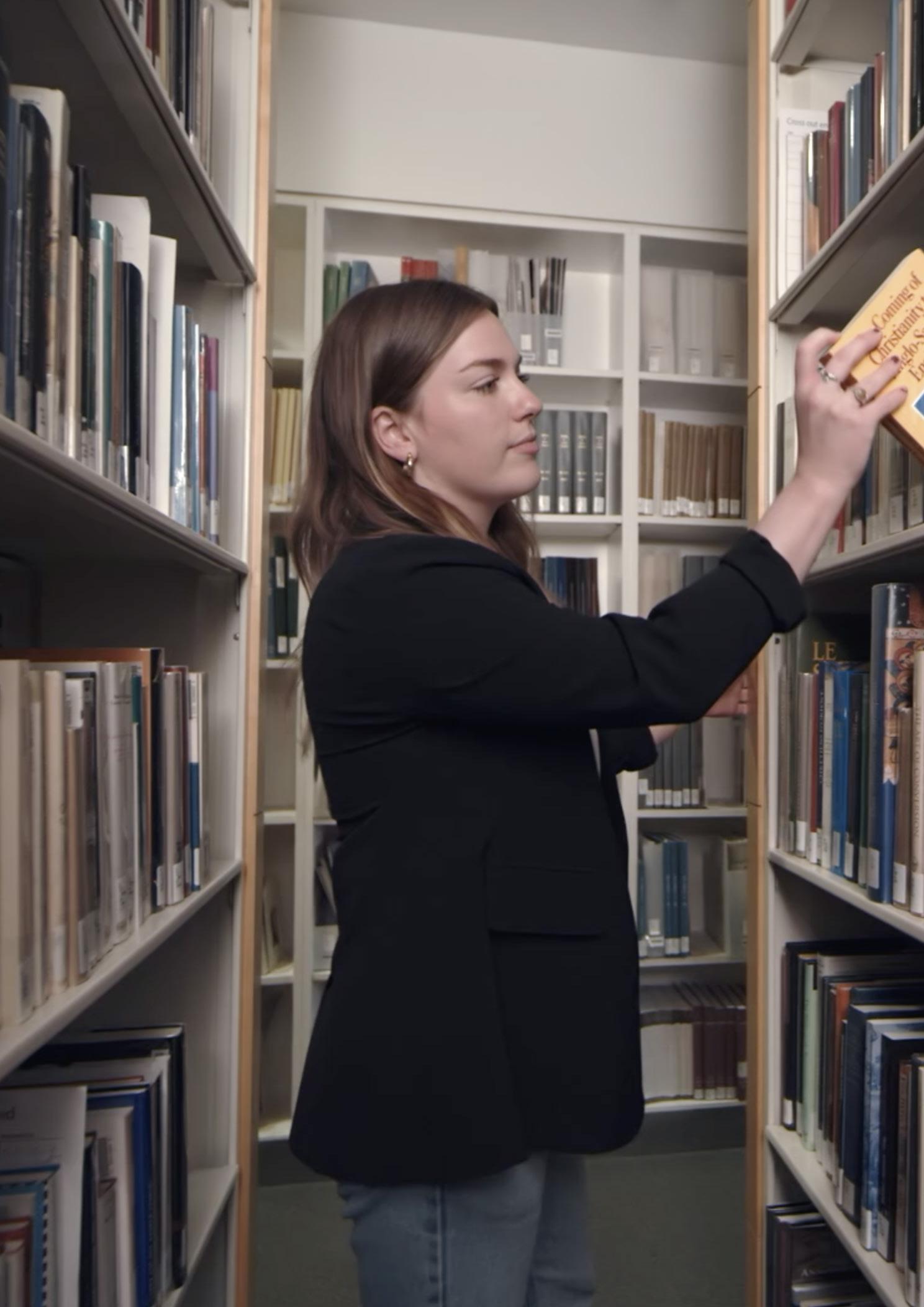
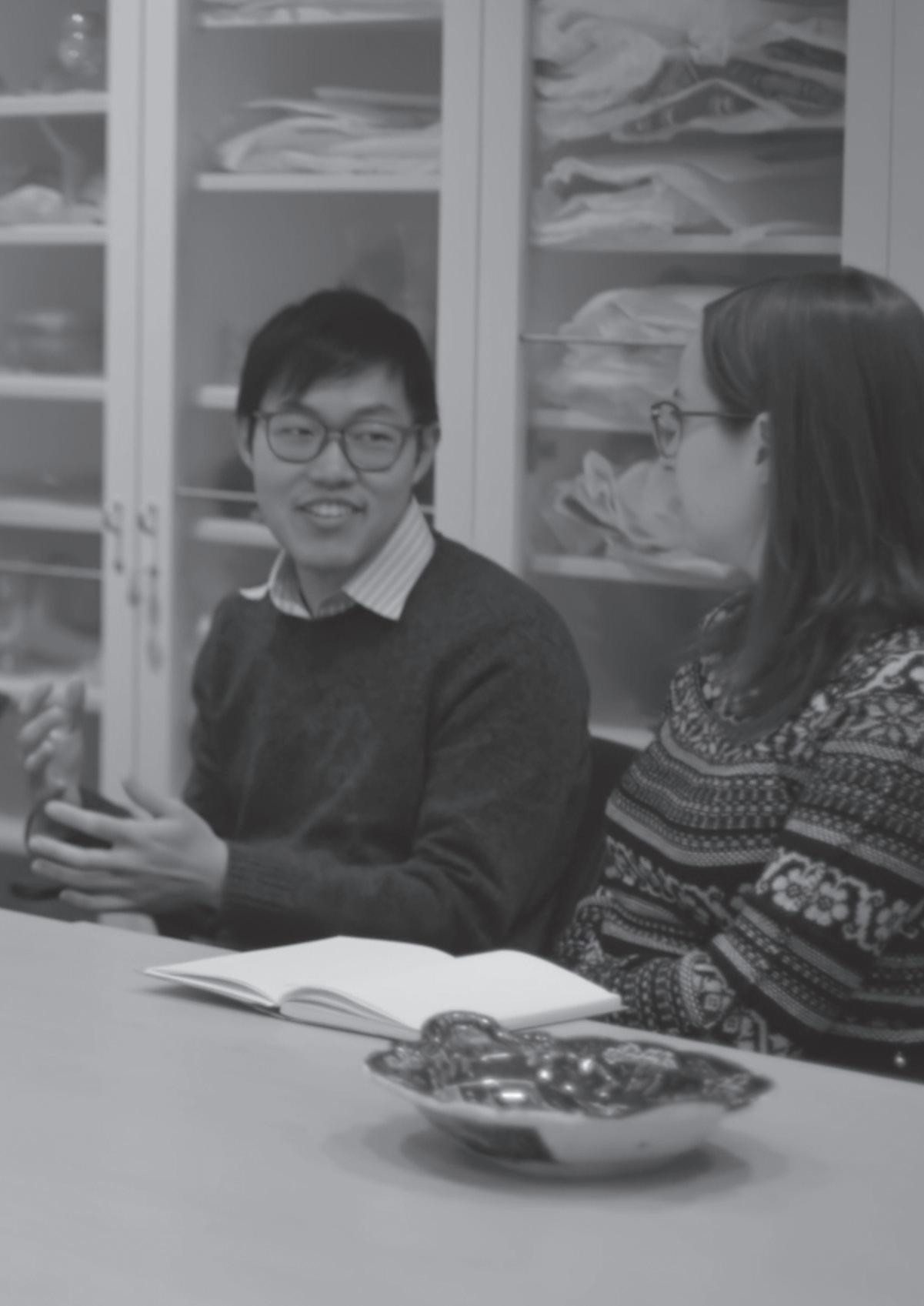
The Cultures of Conservation initiative, a ten-year project generously funded by the Andrew W. Mellon Foundation, modeled new approaches to integrate the insights of objects conservation and materials science with those of the human sciences (anthropology, archaeology, art history, history). It brought Bard Graduate Center’s cross-disciplinary perspective on objects into conversation with conservators’ study of materials, techniques of making, and practices of use and re-use, as well as scholarly studies of materials and materiality. It further explored the meaning of active matter for the field of conservation through the lenses of materials science, history, philosophy, and Indigenous ontologies that never assumed matter was inactive.
As part of the Cultures of Conservation project, BGC offered students new courses devoted to conservation perspectives, augmented existing courses to link the study of materiality directly to conservation, and created a new faculty position dedicated to teaching conservation science. These changes transformed BGC’s curriculum and provided a model of how other higher education institutions might do the same.
Over ten years, Cultures of Conservation supported the publication of five books; the creation of three exhibitions; the appointment of six research fellows, one visiting professor, and one full professor; the development of nineteen new courses; the presentations of thirty-nine guest speakers in thirty-four BGC courses and 145 scholars at fifty-two events; and the evolution of a local steering committee of New Yorkarea conservators and professors that met annually to review progress towards the project’s goals and consider new possibilities of inquiry.
The project culminated with the exhibition Conserving Active Matter, a book of the same title, and a range of events. Information about these concluding activities is given on the next page.
Conserving Active Matter and Richard Tuttle: What Is the Object? are Focus Exhibitions. Bard Graduate Center faculty members and postdoctoral fellows propose and lead these projects in collaboration with interested students. Each exhibition originates with faculty research and is developed through seminars, workshops, and “In Focus” courses that proceed from broad issues of conception and definition through the specific challenges of selection, layout, and interpretation in two and three dimensions. Students are involved from genesis through execution and contribute substantively to each project’s form and content.
March 25–July 10, 2022
Curated by Soon Kai Poh and Peter N. Miller
Conserving Active Matter is part of Cultures of Conservation, a multi-year initiative generously supported by the Andrew W. Mellon Foundation. More information about the initiative can be found at bgc.bard.edu/cultures-of-conservation. The exhibition and publication are generously supported by donors to Bard Graduate Center.
Conserving Active Matter has occupied the first two floors of the Bard Graduate Center Gallery this spring and summer, where it presents conservation as a form of inquiry in four parts: What is conservation? How is matter active? Who acts on matter, when, and why? And where is the future of conservation? The exhibition explores the activity of matter through items that span five continents and range in time from the Paleolithic to the present. The exhibition’s online companion site mirrors its organizing questions and allows visitors to engage indefinitely with the research on which the exhibition was built.
A book, also titled Conserving Active Matter, draws together the main lines and interim conclusions of Cultures of Conservation’s effort to reimagine the relationship between conservation knowledge and the humanistic study of the material world. A wide range of events have been programmed to deepen our engagement with the exhibition’s foundational questions, including film screenings; conversations with artists, scientists, and humanists about conservation; repair days; a discussion about the preservation and exhibition of human remains; and a two-day symposium focused on conservation practices in India and Japan.
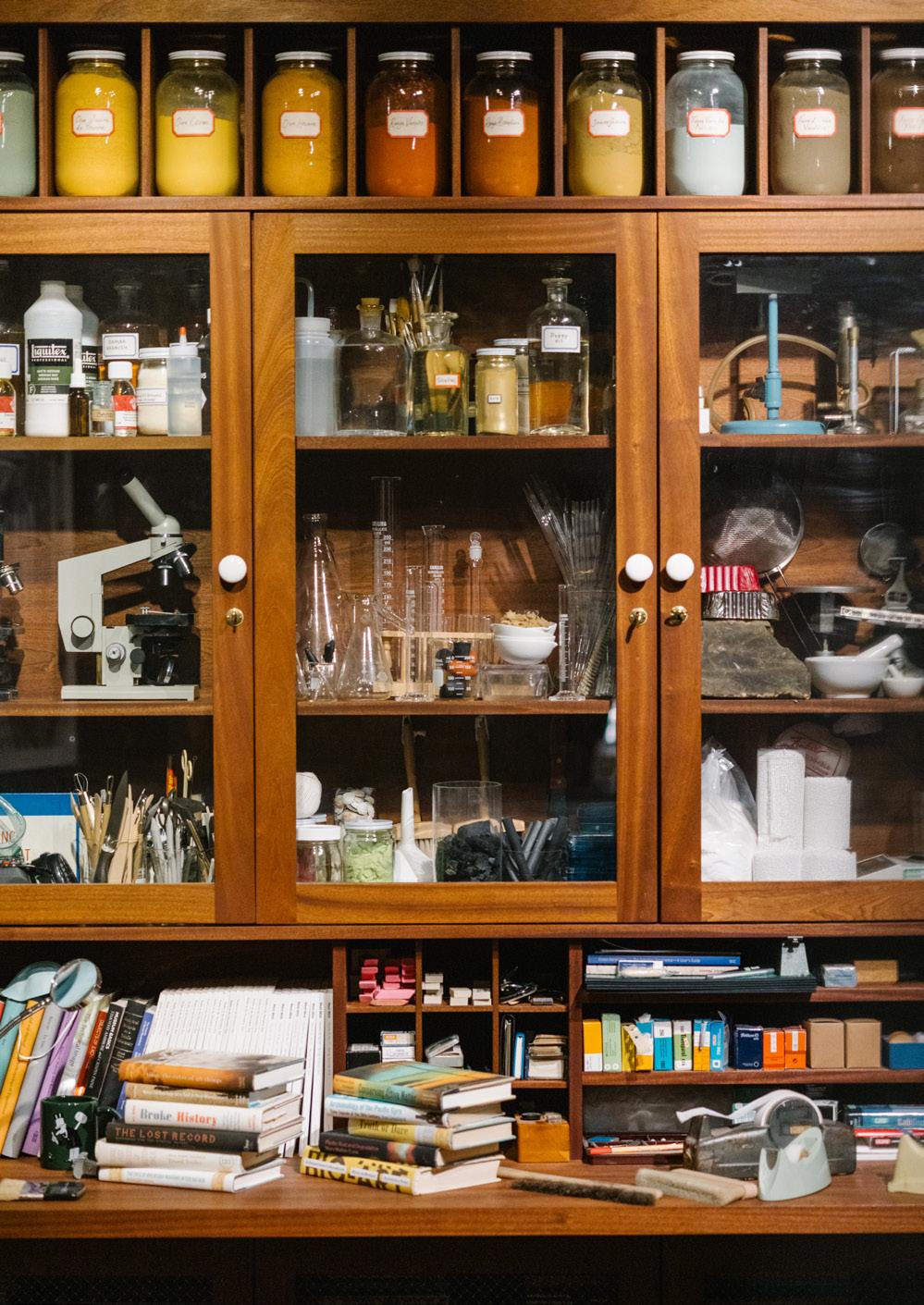
March 25–July 10, 2022
 Curated by Richard Tuttle and Peter N. Miller
Curated by Richard Tuttle and Peter N. Miller
Many objects in Richard Tuttle’s collection will be donated to Bard Graduate Center. They will form the “Richard Tuttle Study Collection” to be used for teaching and exploration by students, faculty, and staff.
Support for Richard Tuttle: What Is the Object? was generously provided by Agnes Gund with additional support from David Kordansky Gallery, Scully Peretsman Foundation, and Peter Freeman and Lluïsa Sàrries Zgonc, as well as donors to Bard Graduate Center.
Support for the publication was provided by pacegallery.com
Bard Graduate Center Gallery has paired Conserving Active Matter with Richard Tuttle: What Is the Object?, an exhibition of seventyfive objects from the contemporary artist’s personal collection along with a series of nine of his new works that are on view for the first time. Tuttle, along with his co-curator and Bard Graduate Center Dean Peter N. Miller, invites visitors to a multi-sensory engagement with Tuttle’s objects that provides a rare glimpse into the relationship between an artist’s collection and his work. An index card created by Tuttle accompanies each object and outlines his original encounter with it, how it entered his collection, and his thoughts about it. Tuttle invites visitors to reflect on the question, What is the object?, by looking closely at the items in the exhibition, exploring them through touch, and viewing them from all sides; by imagining their origins, how they were designed and crafted, and how they were intended to be used; and by thinking about what they mean and how that meaning is assigned. Tuttle’s exploration extends to the exhibition furniture he designed, which resembles sculptures he has made throughout his career and provokes the questions, Is this furniture the object? Or are objects limited to those things that rest upon it? The result is an exhibition that Will Heinrich of the New York Times called “an expansion of Tuttle’s longstanding practice of juxtaposing incongruous elements in a way that highlights the precariousness of beauty and meaning.”
Belgian book artist Luc Derycke designed the catalogue, a ‘book as object’ that further explores the meaning of objects. The volume was edited by Peter N. Miller and includes his essay about Tuttle’s art as the pursuit of a kind of philosophical exploration, an interview with Tuttle, and an analysis of objects in poetic non-fiction by Renée Gladman, as well as poems and a short surrealist tale by Tuttle about his objects. Bruce M. White’s beautiful photographs of Tuttle’s collection and its accompanying index cards illustrate the catalogue.
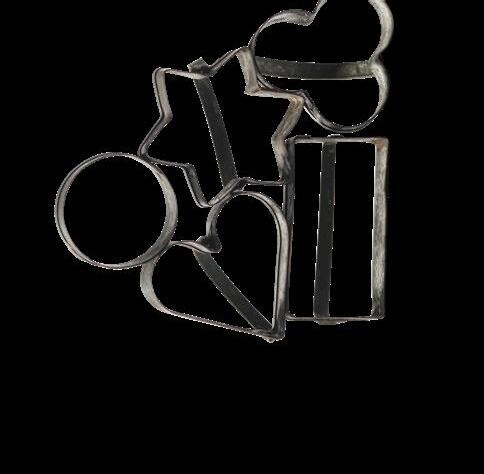
The exhibition inspired an online companion site and a wide range of events, including a discussion on the power of puppetry with theater artist and puppeteer Lake Simons, punctuated by short puppet performances that made use of objects in the exhibition; a reading group led by poet Anselm Berrigan with texts chosen to inspire participants to reflect on their relationships to objects; a symposium featuring Claudia Rankine, Ann-Sophie Lehmann, Tomashi Jackson, K. Anthony Jones, and Francey Russell; and tours led by the artist and verbal description tours for people with low vision and blindness.
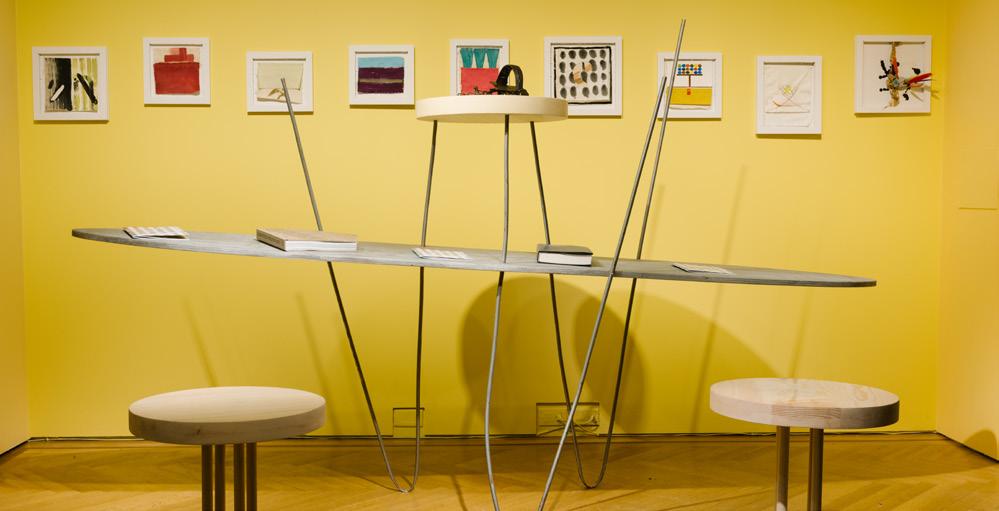
This past March, I attended the opening of Conserving Active Matter, Bard Graduate Center’s exhibition exploring the activity of matter and a variety of human responses to it. Walking through the galleries, I passed by familiar acquaintances: there was the ibis mummy, the shattered silk dress, the marble Ganesh, and Vladimir Nabokov’s annotated copy of The Metamorphosis. Having taken the first of two “In Focus” courses related to the exhibition, seeing these items together and in-person for the first time was especially rewarding. I knew how much thought had gone into their presentation as this was the culmination of work the curators, designers, my classmates, and I had done over the past year.
I signed up for the “Conserving Active Matter” class in the latter half of my first year as an MA student (spring 2021), eager to take a course in which I’d be able to actively participate in mounting an exhibition for the BGC Gallery. Taught by the exhibition’s curators, Soon Kai Poh and Dean Peter N. Miller, the course began with expansive discussions of conservation that touched on everyday repairs, Indigenous ontologies, connoisseurship versus scientific analysis, and appreciation for the aesthetics of decay. Conversations around these topics had taken place throughout BGC’s ten-year-long initiative, Cultures of Conservation, and led to the development of questions around which the exhibition is organized: What is conservation? How is matter active? Who acts on matter, when, and why? Where is the future of conservation?
In February, each member of the class chose four objects from the exhibition checklist for which to write labels and catalogue essays.
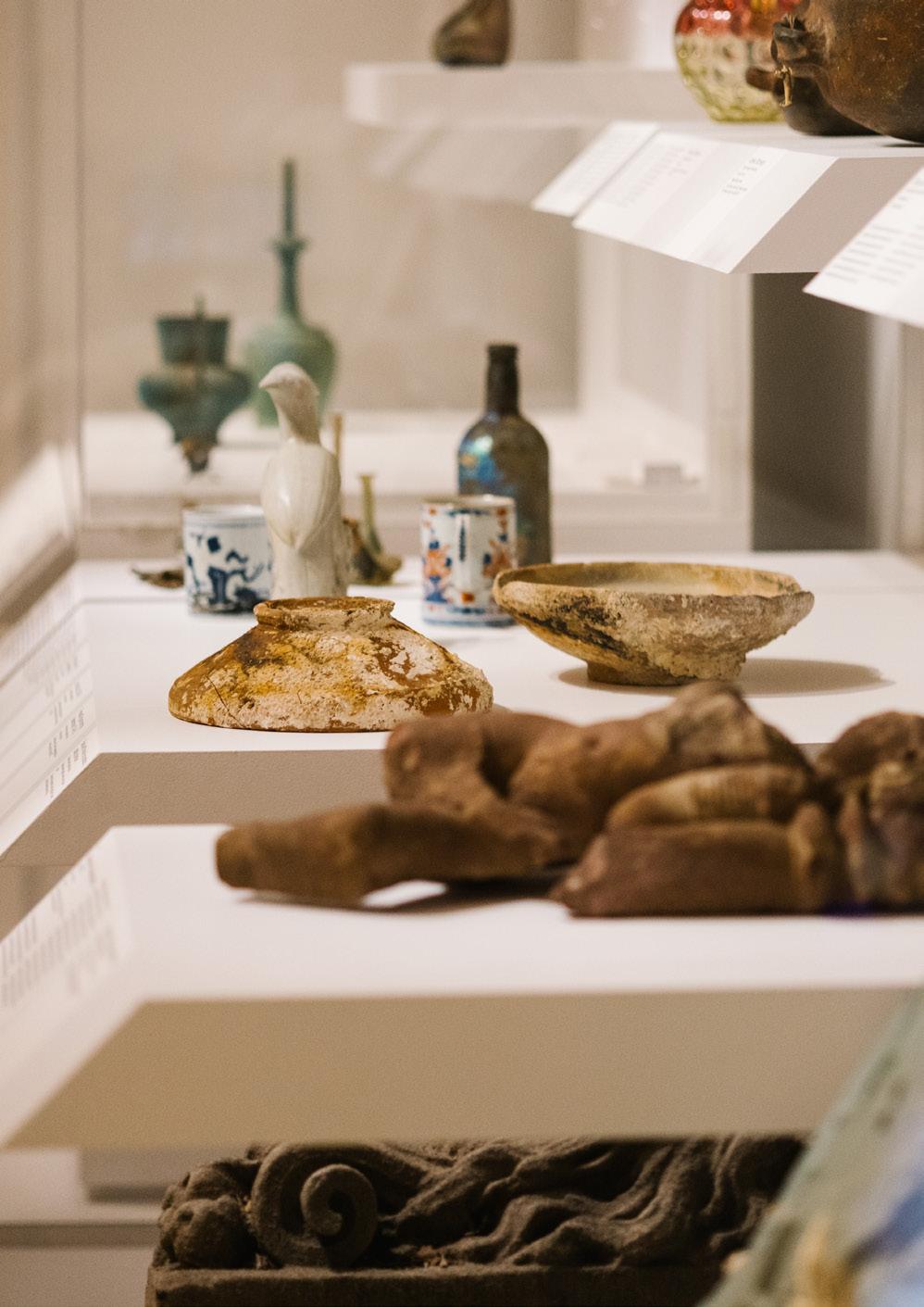
From the items included in the “What is conservation?” gallery, I chose a piece of contemporary art the BGC had commissioned from Mark Dion for the lobby of 38 West 86th Street: The Conservator’s Cupboard. As a fan of Dion’s work, I looked forward to learning how this large cupboard crammed with instruments and materials spoke to the themes of our exhibition. From the “How is matter active?” section, I selected a faux tortoiseshell vanity set— an example of deteriorating, early twentieth-century plastic— with the intention of examining its activity from a scientific and aesthetic point of view. From the “Who acts on matter?” gallery, I chose a marble figure of Ganesh from India, partly because I’d developed an affinity for the Hindu deity when I was a child and because I wanted to explore how the statue could be activated by worshipers or museum visitors. Lastly, for “Where is the future of conservation?,” I selected a biodegradable collar made by contemporary designer Aniela Hoitink for its connection to cultural and environmental conservation issues.
For the next several months, I researched these items, gaining valuable insights from makers, curators, and conservators. I chatted with Dion about how his early career as an art restorer informed the objects he included in The Conservator’s Cupboard and his willingness to accept a certain amount of activity in the piece; I consulted American Museum of Natural History curator Laurel Kendall and accession documents from the museum’s digital archives on the figure of Ganesh; and I interviewed Cooper Hewitt conservator Jessica Walthew about her work on early plastics. These conversations were fundamental to writing the labels and catalogue essays.
As I walked through the exhibition, I noted transparent room dividers, objects suspended from the ceiling, the different colors of each room (deep blue, white, grey, light green), and I recalled the inspiring conversations my classmates and I had with David Harvey, the exhibition’s designer, who encouraged us to think about the physical space of the gallery, how to guide the visitor’s perception and path, and how to tell a story through visual design. To evoke the feel of an exhibition, Harvey creates mood boards. He asked the
class to do the same for Conserving Active Matter and visualize each of the exhibition’s themes. This highly enjoyable assignment engaged our creative brains, and, gratifyingly, these digital collages now flash across screens installed in each of the galleries.
Wanting to stay connected to the project after the class ended, I applied for a digital fellowship through which I could help construct the show’s companion website. In doing so, I got a behindthe-scenes look at how director of digital humanities and digital exhibitions Jesse Merandy and art director Laura Grey designed the site to visually align with the physical exhibition and added supplemental features including a clickable checklist that sorts items by their material and place of origin, essays written by conservation scholars and BGC faculty, and audio clips of students’ interviews with conservators. The digital exhibition in itself can be seen as a form of conservation in that it will preserve the show online, making it accessible to the public long after it closes.
Through participating in various aspects of the show, I gained a better understanding and appreciation of its many moving parts. I’m thankful to have had the opportunity to receive such a multi-faceted introduction to the exhibition-making process; it has certainly activated my interest in this kind of work.
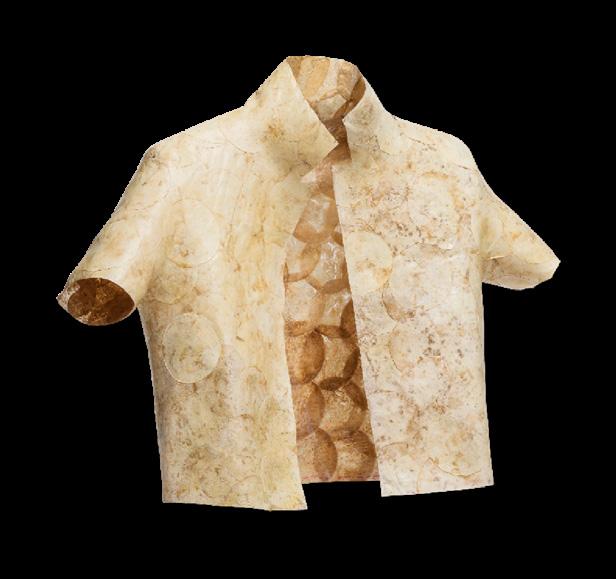
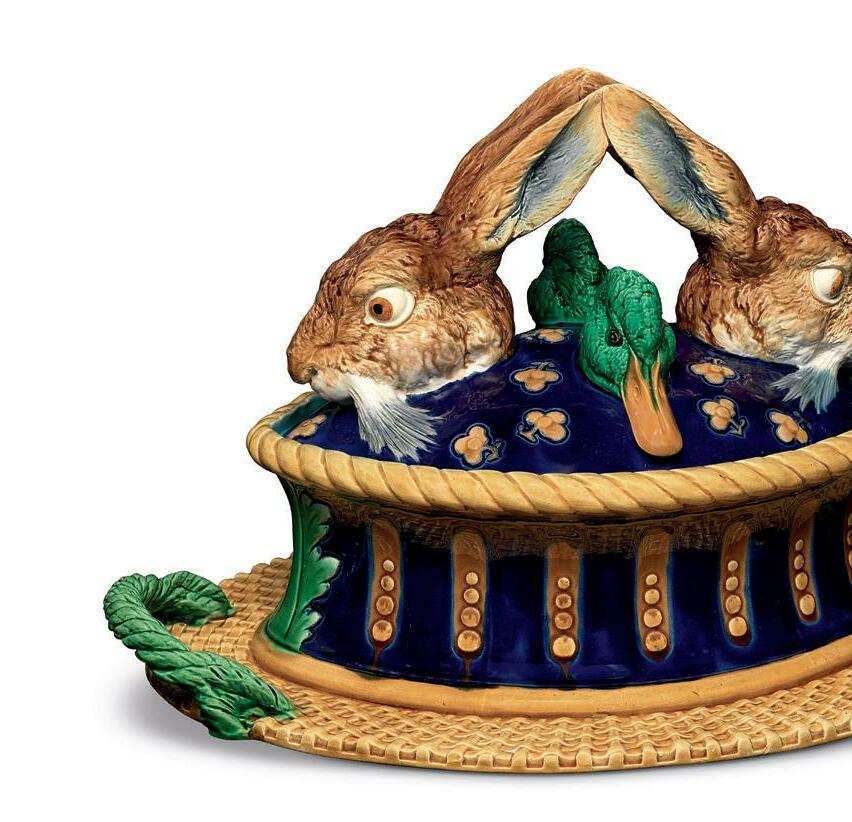
September 24, 2021–January 2, 2022
Curated by Susan Weber, Founder and Director, Bard Graduate Center, and Jo Briggs, Jennie Walters Delano Associate Curator of 18th- and 19th-Century Art, Walters Art Museum Project Directors: Earl Martin and Laura Microulis
Special thanks to the Majolica International Society
Support for the Majolica Mania website was generously provided by Joseph Piropato and the Lee B. Anderson Memorial Foundation, with special thanks to Ann Pyne and the Sherrill Foundation.
Majolica, the popular nineteenth-century pottery, provided the subject for Pottery in England and the United States, 1850–1915 Graduate Center’s largest exhibition to date, as well as a catalogue and a book of and a host of virtual events. The project represented the culmination of a multi-year international research project that continued BGC’s tradition of identifying underrecognized and undervalued areas of scholarship in nineteenth-century decorative arts.
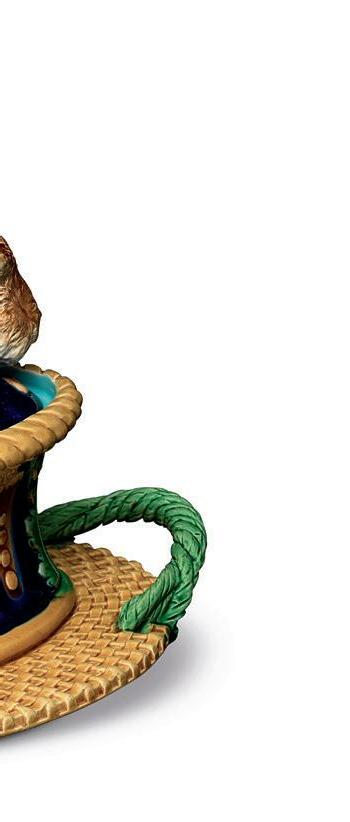
The exhibition presented more than 350 objects drawn from major private collections in the United States and leading public collections in the U.S. and England, including the Maryland Historical Society, Philadelphia Museum of Art, Potteries Museum and Art Gallery, Royal Collection, and the Victoria and Albert Museum. Barrymore Laurence Scherer’s review in the Wall Street Journal called Majolica Mania “a joyous show [that is] so engaging and so memorable.” The exhibition continues to attract visitors from all over the world with additional stops in Baltimore at the Walters Art Museum, which organized the exhibition with BGC, and in Stoke-on-Trent, England, at the Potteries Museum.
The Majolica Mania catalogue won the 2021 Historians of British Art (HBA) Book Prize for an outstanding multi-authored book on the history of British art, architecture, and visual culture. According to the HBA announcement,
“the three lavishly illustrated volumes of Majolica Mania offer a visual fantasia that is as fascinating and comprehensive as its scholarship. … Majolica’s historiography, design, production, uses (from architectural decoration and sculpture to hygienic dishware), iconographies, relationship to design reform, promotion through exhibitions, and more are explored in this major research undertaking, which definitively establishes the importance of these ceramics for our understanding of nineteenth-century culture, and offers serious delight while doing so.”
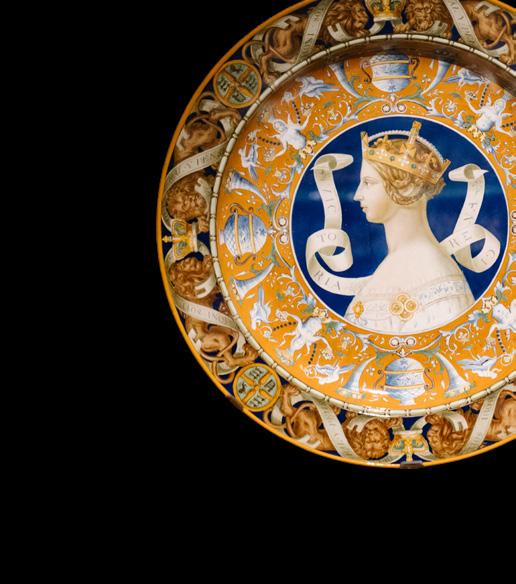
the Metropolitan Chapter of the Victorian Society of America. One of the site’s most advanced features presents virtual recreations of objects in the exhibition using a process called photogrammetry, in which thousands of photographs of one object are digitally “stitched together” to create a three-dimensional, virtual model that can be manipulated by viewers on their computers, as if they were picking the object up, holding it, and rotating it to view it from different perspectives.

Events included an online symposium that explored the influence of French artists on English majolica; a lecture delivered to the Potteries of Trenton Society; discussions of representations of race in majolica; the chemical properties of its rich, saturated hues; and an exploration of the hazards of working with lead-based glazes, one of the factors in the decline of majolica’s popularity.
Majolica Mania: Transatlantic Pottery in England and the United States, 1850–1915 was made possible by Deborah and Philip English, the Bernard Malberg Charitable Trust, the Abra and Jim Wilkin Fund, and the Gary Vikan Exhibition Fund, with the generous support of Marilyn and Edward Flower, Amy Cole Griffin, Darci and Randy Iola, James and Carol Harkess, Maryanne H. Leckie, the Lee B. Anderson Memorial Foundation, the Thomas B. and Elizabeth M. Sheridan Foundation, Inc., the Robert Lehman Foundation, and the Women’s Committee of the Walters Art Museum, with additional support by Carolyn and Mark Brownawell, the Hilde Voss Eliasberg Fund for Exhibitions, Joseph Piropato, Ann Pyne, Lynn and Phil Rauch, George and Jennifer Reynolds, the Sherrill Foundation, Carol and George E. Warner, Michael and Karen Strawser / Strawser Auction Group, Laurie Wirth-Melliand and Richard Melliand, the Dr. Lee MacCormick Edwards Charitable Foundation, Drs. Elke C. and William G. Durden, Joan Stacke Graham, Wanda and Duane Matthes / Antiques from Trilogy, Robin and Andrew Schirrmeister, Karen and Mike Smith, William Blair and Co., and other generous donors to Bard Graduate Center and the Walters Art Museum.
February 29–March 10, 2020, and October 13–28, 2020
Curated by Cloé Pitiot, Curator of Art Nouveau, Art Deco, and Contemporary Design at the Musée des Arts Décoratifs, Paris
Organized by Centre Pompidou, Paris, in collaboration with Bard Graduate Center
Project Directors: Cloé Pitiot and Nina Stritzler-Levine Curatorial

Assistant: Emma Cormack
Support for Eileen Gray was generously provided by Phillips with additional support from the Lily Auchincloss Foundation, the Selz Foundation, Edward Lee Cave, and the Graham Foundation for Advanced Studies in the Fine Arts. The exhibition was supported in part by an award from the National Endowment for the Arts.
The exhibition was made possible by the New York State Council on the Arts with the support of Governor Andrew M. Cuomo and the New York State Legislature. Support for the exhibition catalogue was provided by Elise Jaffe + Jeffrey Brown and Furthermore: a program of the J.M. Kaplan Fund. Special thanks to the National Museum of Ireland.
The abrupt closing of the Eileen Gray exhibition due to the Covid-19 pandemic spurred Bard Graduate Center’s Nina Stritzler-Levine, Emma Cormack, and Jesse Merandy to quickly create an online exhibition that included a video tour of the galleries led by Rachael Schwabe (MA ‘20), a flipbook of Eileen Gray’s portfolio, installation photography, texts from the exhibition catalogue and gallery interpretation, in-gallery interactives, digital media, materials for educators including content developed by BGC MA and PhD students, and many other innovative features.
The site preserves and makes accessible the intellectual and creative labor of curators, researchers, educators, and designers. It constitutes a rich resource for scholars and visitors that will remain on BGC’s website indefinitely. Successfully capturing the essence of the exhibition, the online version also enabled the team to move beyond
what was possible in BGC’s physical gallery space. It continues to serve as a hub and repository for institutional content, creating a vibrant and extended life for the exhibition.
The online exhibition won praise and extensive recognition in the press; attracted tens of thousands of visitors, including all of its overseas lenders; and demonstrated how BGC can serve a much larger audience, including people across the globe and local neighbors with limited mobility. Indeed, with periodic updates publicized through institutional mailings, newsletters, and events, the site has attracted more than seven thousand visitors to date from more than eighty countries to learn about Eileen Gray.
Fortunately, lenders were willing to extend the loan period for the objects in the gallery exhibition, and it was able to reopen for a short time in October 2020 with strict measures in place to protect visitors and Bard Graduate Center faculty, students, and staff from Covid-19. Jason Farago lauded the online exhibition in the New York Times, writing, “I’m impressed with Bard’s conversion of this major show for the web; click on any of the chairs or credenzas in the installation shots, and you’ll discover higher-resolution photographs and thorough contextual materials about her work process and commercial ambitions.” And Martin Filler’s review in the New York Review of Books declared Eileen Gray “a ravishing installation of two hundred objects, many of them great rarities [that] will be long remembered because of its catalogue, admirably edited by Cloé Pitiot and Nina Stritzler-Levine in a tour-de-force of exhaustive research and insightful interpretation.” The publication recently received the Society of Architectural Historians’ 2022 Exhibition Catalogue Award.

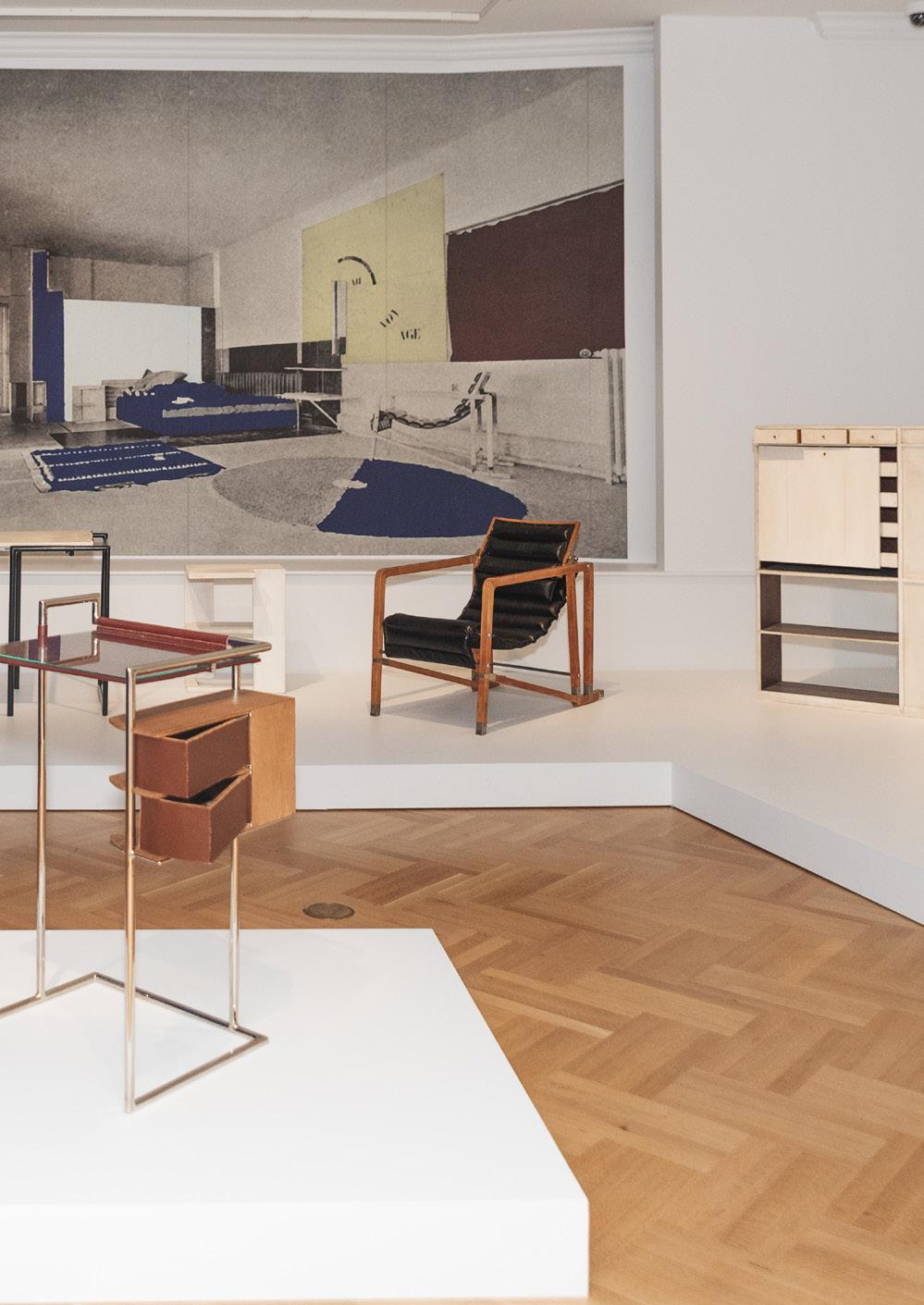
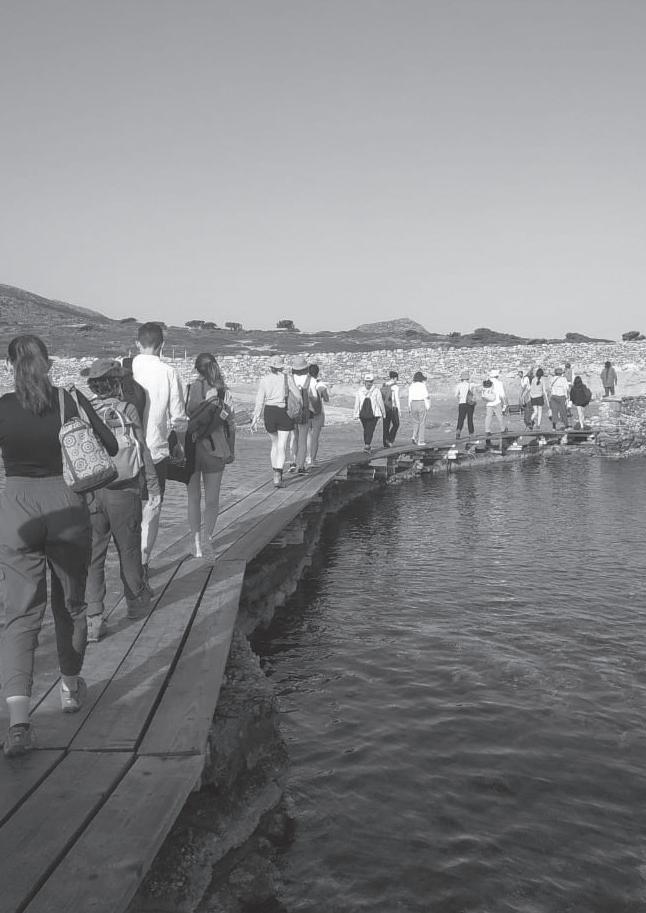
In summer 2022, Bard Graduate Center launched its first field school in archaeology and material culture on the Cycladic island of Antiparos. Working across a small channel on the adjacent island of Despotiko, students participated in a project to excavate and rebuild the sixth-century BCE Sanctuary of Apollo using ancient craft ways.
Paros and Antiparos exported marble to centers like Athens— some of the earliest statues from the Acropolis were made of Parian marble—and current work on the site bears directly on our knowledge of the material’s enduring cultural significance. Professor Caspar Meyer, who has been working on the site since 2017, leads the new field school. Since its discovery in the early 2000s, the sanctuary on Despotiko has produced an uninterrupted string of finds, including votive deposits under the temple floor and domestic buildings pre-dating the sacred structures. The site has become key to understanding the connections between seafaring, craft, and religion that shaped Greek culture for centuries.
All first-year BGC students have the opportunity to add the field school to the existing BGC travel program to Berlin and Paris. This year, thirteen students participated in the new program. Professor Meyer and the students first spent two days visiting important ancient sites in Athens and then traveled to Antiparos for six days of work and study. Mornings were devoted to the dig and evenings to discussions led by Professor Meyer.
The purpose of a field school is to take students out of the classroom so they can test what they have learned there against practical, first-hand experiences. Excavation and conversation make powerful teachers.
The Fields of the Future Institute (FFI) is a new initiative at Bard Graduate Center that expands the sources, practices, perspectives, and audiences of interdisciplinary humanities scholarship. It explores how our intellectual landscape should change by posing new questions, suggesting new ways to answer old questions, and bringing new voices into the scholarly conversation. FFI explicitly aims to bring more Black, Indigenous, and people of color into the fields of decorative arts, design history, and material culture and to elevate their voices through fellowship opportunities, a podcast, and a fund to support student and alumni projects that reflect the values of the FFI. In addition, FFI expands BGC’s focus to include summer programs for undergraduate students that offer early career scholars access to graduate-level resources and provide opportunities to gain skills in the public humanities.
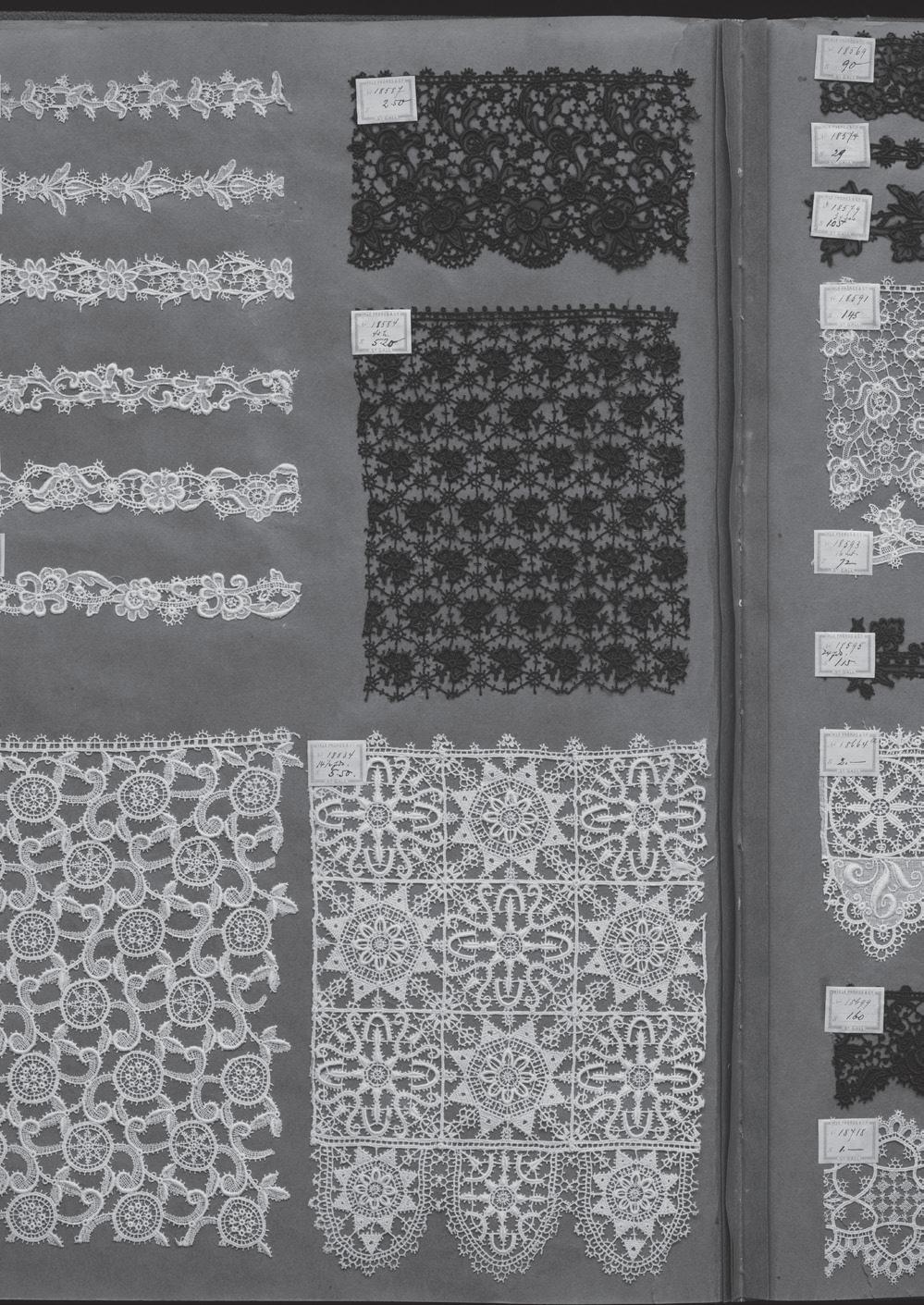
In summer 2021, Bard Graduate Center welcomed twelve students from Historically Black Colleges and Universities (HBCUs) for a week-long intensive seminar held on Zoom. This was one of several summer programs organized by the Alliance of Museums and Galleries of HBCUs; others were hosted by the University of Delaware / Winterthur Museum, Yale University, and Princeton University. The course, “Research and Conservation in the Human Sciences,” introduced these students to the role and meaning of humanities-based research. It focused on conservation as a key research tool for working with material culture, integrating research into artistic practices, and research developed in tandem with collecting institutions like the library, archive, and museum. The program introduced students interested in art history, theory, and practice to a range of professional applications for these interests, including graduate-level research. This program will take place every two years.
Bard Graduate Center launched its Undergraduate Summer School in Decorative Arts, Design History, and Material Culture in 2021. Open to advanced undergraduates and recent college graduates, the program draws on resources at BGC and around New York City to provide an intensive, two-week program on material culture studies. The topic for 2021 and 2022 was “Re-Dress and Re-Form: Innovations in the History of Fashion and Design, 1850 to Today.”
The course introduced students to the history of design and fashion in the United States and Europe from the mid-nineteenth century to the present day, with a focus on how conceptions of race, gender, and class have shaped the world of goods as we know it. Led by faculty members Michele Majer and Freyja Hartzell in 2021 and by Hartzell and PhD candidate Pierre-Jean Desemerie in 2022, the summer school combined small seminars and behind-the-scenes access to collections. Thirteen students from around the country participated in 2021; twelve students participated in 2022.
In fall 2019, Bard Graduate Center reconceived its research fellowship program to promote work that reflected the values of the FFI. The Fields of the Future fellowships support scholars exploring and expanding the sources, techniques, voices, perspectives, and questions of interdisciplinary humanities scholarship. Fellows receive a monthly stipend, housing in New York City, and a workspace in BGC’s Research Center for a semester. See the list of fellows on pp. xx-xx.

Bard Graduate Center established the Fields of the Future Fund for BGC Students and Alumni in fall 2020. This fund provides financial support for students and alums pursuing projects that bring new voices and narratives into the study of decorative arts, design history, and material culture. In spring 2021, MA student mary adeogun received support from the Fund for a multimedia project that
explored two textiles linked to four sisters, all of Yoruba heritage. Combining photography, video, and brief interviews with each individual, the project tells a story about the sisters’ collaboration and shows the liveliness of their textiles and garments. The Fields of the Future grant helped cover expenses associated with the project’s production, such as renting high-quality camera and audio equipment and hiring a small team. The interviews, photography, and video were created in the summer of 2021. Post-production and editing took place in the fall of 2021. Portions of this project were shared privately with advisors at Bard Graduate Center and with the sisters. In spring 2022, the fund made awards to MA alumna Rachael Schwabe for a project entitled “Crafting Empathy” and to PhD student Kate Sekules for her project, “Repair.”


BGC’s Fields of the Future podcast was conceived to amplify the voices and highlight the work of scholars, artists, and writers injecting new narratives into object-centered thinking. It launched in fall 2021 with a nine-episode season produced by BGC staff members Laura Minsky and Emily Reilly. Each episode brought a BGC fellow or faculty member into conversation with
a scholar, artist, or writer of their choosing. Two additional seasons are in production and will be released in fall 2022. The first, produced by BGC alumnae Juliana Fagua Arias and Jessie Mordine Young, includes conversations with Indigenous textile artists and its release will coincide with the launch of the Shaped by the Loom: Weaving Worlds in the American Southwest online exhibition. The second, produced BGC alumna mary adeogun to accompany the exhibition Threads of Power: Lace from the Textilmuseum St. Gallen, considers lace in Nigerian culture through close examination of a few laces and includes conversations with historians, researchers, dressmakers, lace mills, and fashionistas.
In the summer of 2021, Bard Graduate Center partnered with the Alliance of HBCU Museums and Galleries to offer a one-week course focused on research through objects to undergraduate students and recent graduates of Historically Black Colleges and Universities. The course, which was held virtually, centered around presentations from and discussions with a variety of visiting professionals, including conservators, artists, scholars, curators, and archivists. mary adeogun (MA ‘22) and Elizabeth Koehn (MA ‘20, PhD candidate) worked as teaching assistants for the course. In October 2021, they reflected on the curriculum, the students, and their experiences as first-time TAs. A complete version of their discussion appears on the BGC website.
With thanks to the Alliance of HBCU Museums and Galleries, Bard Graduate Center, and each student who participated in the program: Amanei, Barriane, Jade, Janelle, Justin, Kaelin, Kadeer, Kaleizhanae, Meaghan, Shamica, Shon and Torri.

Elizabeth Koehn (EK): Hi Mary! In looking back over my notes from HBCU summer school program, it’s really awe-inspiring to see how the students took the central topic of the course—which was the concept of research—and spun it off into so many interesting dimensions of their own. … They went above and beyond simply connecting the content of the workshops to their chosen objects. They were proactively taking the day’s themes and applying them to a wide variety of larger topics and issues relating to their own interests and work.
It was a good decision to kick the course off with the BGC publication, What is Research? (the published transcripts of three conversations that Dean Peter N. Miller moderated in 2020 between scientists, artists, and humanists, all MacArthur Fellows) because it really set the tone for how diverse the scope of research, as we were looking at it, was going to be.
mary adeogun (ma): Having as loose a topic as research really allowed people to kind of run in whatever direction interested them. And we saw that in the program, where some students responded to specific topics more than others. Do you remember the session we had with botanists, curators, and researchers from the New York Botanical Garden?
There was a moment where one student was completely in the zone. Based on his line of questioning, the conversation took multiple directions: from the different plants they preserve in the herbarium, to plants as a healing and spiritual tool, with psychedelics being used to treat PTSD and depression. There was a similar response from a few students who are artists to the Artists Doing Research talk, which included Tomashi Jackson, Richard Tuttle, and Vanessa German. They talked about their work—what it’s responding to in this world and how research informs it.
EK: That was such a special session—Vanessa opened her part of the talk by going through the list of participants and giving voice to every single person’s name. That really set a tone for everyone. I think you could see that they felt that sense of reciprocation with the speakers. All of the speakers throughout the program are experts in their fields, doing such amazing things, and they were so generous and willing to engage with the students. They took their questions seriously. There was a lot of respect going both ways, and I think that contributed to making it a successful program.
ma: For sure. And that also sometimes meant questioning the information being presented.
For example, in the investigative journalism session with Nicholas Lemann from Columbia’s journalism school. There were a lot of questions from students, especially around the more undefined boundaries of journalism. Some of the students were wondering, can anyone just say anything?
EK: That’s a good point about the journalism session, because I remember that was one area where we, as TAs, actually felt it was important to push back on some of the student responses— I remember students in our evening session expressing a lot of skepticism about notions of journalistic truth. I think a lot of that stemmed from the recent political discourse around what constitutes “fake news,” but I also think they applied some of the critical points raised by historian Marisa Fuentes, in her session from earlier that day—where she discussed absences in the archival record—to their understanding of journalistic objectivity. Students really responded to the ideas that she raised about narrative construction, how it is contingent on the information that is preserved, and how you always need to be aware of the facts and perspectives that are left out of the record. So even if that emphasis on criticality that she raised took a direction in our group discussion
about journalism that we felt we needed to correct a bit, it was still interesting to watch how the students were synthesizing and drawing points of connection between the various topics and approaches raised by the different speakers throughout the week.
ma: Fuentes made it very clear that she does not make things up. I love that she stressed not running away with the idea of creativity in the archives as we imagine things that weren’t documented. It’s a rigorous exercise of understanding the possibilities given the bounds of the archive, and then connecting the dots. But also, when you don’t have enough information, letting the silence linger, while still acknowledging that something was there. That’s powerful. The topic and the scholarly attention paid to archival silences is so pervasive and important in academia, especially in relation to communities, groups, and histories that don’t fit cleanly into a Euro-American academic version of archive.
There are many possibilities within and outside of that. That’s why I really enjoyed Mpho Matsipa’s talk on our final day about research as a way to destabilize EuroAmerican claims to knowledge about African cities and public spaces. For example, the project
African Mobilities being a scholarly portal where theorists and creative practitioners across the continent can come together, access their histories, and imagine their futures on their own terms.
EK: That’s such a good point. It brings to mind our visit from Tammi Lawson, from the Art and Artifact Division of the Schomburg Center for Research in Black Culture. Some students said, “I didn’t think that would be in an archive.” That visit was such an important way to alert people to the fact that various types of archives exist, and that if they haven’t in the past, people are working to remedy or reorient our notion of what should be preserved.
ma: The expanded understanding of archives, and the bodies of knowledge that are within archives, was explored by so many of the speakers. Memory is a really powerful archive, and that concept resonated with me, because it made me think of oríkì, which is a Yorùbá concept of a being or family’s story, their epic, that is passed from generation to generation, often orally. In Yorùbá Art and Language: Seeking the African in African Art, scholar and art historian Rowland Abiodun notes that oríkì is not passive, but active. Pronouncing an oríkì invokes or summons the subject into action. And though I refer to
oríkì that’s spoken, it can also be invoked through art, spaces, dance, and so on. An oríkì can be recorded on an audio device or in writing, but it doesn’t necessarily have a history of being passed down in that way. To me, it’s one of the most precise archives because to speak it correctly and pass it down to the next person, you’ve got to have that thing down pat. It always struck me that among this community it’s considered archival, but among other communities, it’s not.
I think over the course of the week, it was striking to see the connections in what we each recognize as “archive” and how a lot of these lecturers in their practices have either defined that on their own terms, or found ways to address the gaps in whatever definition of archive they’re working with.
EK: That point you raise about different forms of knowledge and specifically archival knowledge, and how information can be passed down through families and oral histories rather than being recorded in official documents, I think that was reflected also in many of the objects that the students chose to research. I’m thinking of a few students who chose to research family heirlooms, such as a grandmother’s jewelry box, Guyanese gold bracelets
passed down to firstborn daughters, or a pillow made by a mother for her baby.
So many of them were objects that were deeply embedded in their familial histories and relationships. And I think that point you raise about the validity of these different forms or sources of knowledge is so important in this regard. It emboldened a lot of the students in the final conclusions that they were making about their objects: “Yes, this is a story worth telling, even if it wasn’t written down in a newspaper. This is my family’s story and it’s expressed, not through text, but through this object that I now have in front of me and I’m looking at and I’m holding and I’m asking questions about.” For me, watching the students expand their notion of research, whether that meant broadening their understanding of the kind of sources worthy of being consulted, or how to look critically at those sources, or reassessing the types of subject worthy of research, was the most fulfilling part of being a TA.
ma: I hear that.
EK: I also want to shout out how amazing these students were, because this was an extremely rigorous curriculum. They were in class from 9 am until noon, hearing speakers but also engaging in good,
rich discussions. Then there was a lunch break, and a second session with speakers and discussion in the afternoon. Then they met for an hour on their own to rehash the day (no professors or TAs allowed), before taking a dinner break, and then they met with us for an hour in the evening to go over questions and reflections on the day’s presentations. And of course they also were doing the reading and prep work for the following day’s seminars. They were unbelievably active and engaged throughout an extremely intense week.
ma: This was my first experience as a TA, too, and I learned so much from the students, including through the constructive feedback they gave us when the program had wrapped up. I’m curious. Did you do any preparation? How were you thinking about being a TA?
EK: I was mostly just trying to get over my sheer terror at being in a position of authority, which I’m not used to. And it was really important to me, as a teacher, to be honest about my intellectual background, and the things that I know but more importantly the things I don’t know. For me, that’s a really radical, feminist act, of acknowledging what your limitations are, and not feigning authority for the sake of preserving that teaching role. In that regard, it was really helpful
for me to be in an environment like this, where students were so willing to engage one-on-one. It validated for me that that is a legitimate way to approach teaching: not as an authoritarian, but as someone who really can go in learning from other people, as much as they can learn from you. Obviously, I wanted to make sure people were getting what they needed and point them to resources that I knew of that they could use. But working with these students affirmed for me that teaching should be more of a dialogue than a unidirectional vector. What about you? How did you prepare?
ma: I’m also not very experienced when it comes to teaching, but as a student, I find that when I am able to participate in a learning experience that feels more dialogical, I gain so much.
And so, to answer your question, “How did I approach it?”, I started out very nervous and scared. I think I didn’t want to say the wrong thing. I did not want to send anybody in the wrong direction. But to your earlier point, that incorrectly assumes that students don’t already have their own processing power to filter through what’s BS and what’s real. When I started working with the students, it calmed me down a bit. At the end of the week, I’d learned
so much—from the lecturers and administrators, from the students, and from the experience of being a TA.
mary adeogun (MA ’22) studies textiles, garments and dress culture. For the past four years she has focused on Yorùbá dress culture and textile practices from her family heritage, relying on conversations with stylish aunties about their lace and aṣọ òkè, interviews with àdìrẹ collectors and scholars, and brief apprenticeships or workshops with practicing textile artists. Other interests include fiber and dyeing science, how clothes are displayed, American dress culture, and everyday dress habits. She is grateful to the many loved ones and teachers in her life that make this learning possible.
Elizabeth Koehn is a PhD candidate at Bard Graduate Center who is currently researching pneumatic furniture designs of the 1960s and 70s in relation to the concept of utopia. She completed her MA at BGC in 2020 with her qualifying paper, Designing Destruction: Archizoom Associati’s Superonda Sofa as Radical Critique, in which she examined the formal and material qualities of Archizoom’s 1966/67 seating design in the context of the group’s theoretical projects, essays, and archival materials questioning the relationship between design and consumerism. In 2019, Koehn interned in the design, architecture, and digital curatorial department at the Victoria and Albert Museum in London, where she worked directly with the museum’s Rapid Response Collecting curator on new acquisitions. Prior to her studies at BGC, she held positions working with artists at the New York-based galleries Gavin Brown’s Enterprise and David Zwirner after earning her BA in history and art history from Oberlin College in 2009.

2020–22 was unlike any other time in Bard Graduate Center’s history. It was certainly the most challenging, as the Covid-19 pandemic forced our institution into remote teaching and research in 2020, followed by a concerted effort to return to on-site education. Despite its many difficulties, the institution continued to thrive because of the dedication of our students, faculty, and staff.
I finished the William Watt (1834–85) entry for the Dictionary of British and Irish Furniture Makers, 1500–1914. He was best known for his Aesthetic furniture designed by E.W. Godwin, the subject of my doctoral dissertation. I discovered unknown biographical facts and rounded out the details of his London cabinet-making and upholstery business. Another Godwin-related subject that I revisited was the life and work of George Freeth Roper, an understudied Manchester architect and designer who worked in Godwin‘s office at the beginning of his career. His furniture was often confused with Godwin’s. I worked up my preliminary research into a Brown Bag Lunch talk entitled “George Freeth Roper (1843–92): Slavish Imitator or Undervalued Architect/Designer.”
Majolica Mania: Transatlantic Pottery in England and the United States, 1850–1915, finally opened
in the Bard Graduate Center Gallery in the fall of 2021. Its three-volume catalogue, which I edited, won the 2021 Historians of British Art Book Prize for an outstanding multi-authored book on the history of British art, architecture, and visual culture. The show subsequently traveled to the Walters Art Museum, where it opened in March and received ongoing positive reviews, including from the Wall Street Journal and the National Review. It will remain at the Walters through August 2022 and then transfer to the Potteries Museum and Art Gallery in Stokeon-Trent, England, where it will be on view from October 2022 until January 2023. BGC’s curatorial and development teams worked closely with the Potteries Museum staff to ensure that our exhibition would have a showing in Stoke-on-Trent, where so many of the objects in the exhibition were created.
In addition to my work on Majolica Mania, I completed and presented a paper on “Sèvres Majolica Production under the Second Empire” in September 2021 for the BGC symposium on French influence on majolica production in England. The research period was particularly problematic since the French archives were closed to visiting scholars. I wish to thank director Charlotte Vignon and her archivists for assisting me in accessing the papers of the Sèvres majolica atélier.
In 2021 I also began research for the upcoming 2026 BGC exhibition on Philip Webb, Arts and Crafts Architect and Designer. It will showcase the many talents of Webb, ranging from remarkable buildings to beautiful furniture, stained glass, glassware, and book bindings.
As for teaching, in 2020–21, I led a year-long seminar for two first-year students on the history of the chair. We examined royal thrones from the ancient world to contemporary mass-produced seating forms. Questions of connoisseurship, materials, ergonomics, construction, hygiene, and affordability were all part of our lively weekly discussions. We used chapters from Witold Rybczinski’s Now I Sit Me Down: From Klismos to Plastic Chair (2017) to frame our sessions. Students led the study of twentieth-century seating forms with a series of presentations.
Starting in fall 2020, I assisted Deborah Krohn with graduate admissions and convened both the fall and spring semesters of “Objects in Context” as part of a thorough revision of our first-year core curriculum undertaken with Catherine Whalen. With Andrew Morrall, I co-taught the field seminar “Readings in Early Modern Visual and Material Culture,” exploring both established and
40 2020–22 in Review
emerging approaches to objects and related images in Europe ca. 1500–1800.
On my own, I offered seminars on “The Grand Tour”—an appropriately virtual form of travel during a pandemic—in which participants followed specific travelers with special attention to the material, educational, and experiential aspects of moving around Europe in the sixteenth, seventeenth, and eighteenth centuries. A further seminar on “Fire! Staging the Hearth in Eighteenth-Century France,” began laying the groundwork for a forthcoming Focus Exhibition on French eighteenth-century gilt bronze firedogs, scheduled to open in February 2027. In May 2022, after a two-year hiatus, I led eleven BGC MA students on the intensive, tenday Bard Travel Program in Paris, organized in conjunction with the École du Louvre.
On the research front, I contributed a chapter entitled “Winckelmann et la peinture: construire le sens d’un art disparu” (Winckelmann and Painting: Making Sense of a Lost Art) to the volume Winckelmann et l’oeuvre d’art: Matériaux et types (Winckelmann and the Work of Art: Materials and Genres), edited by Cécile Colonna and Daniela Gallo and published in May 2021 by the Institut National d’Histoire de l’Art in Paris. My essay traced the Prussian scholar’s changing approach to understanding and evaluating
ancient painting in the face of a disjuncture among the slender physical evidence, largely from the Roman period, and the dictates of an aesthetic theory predicated on white marble sculpture understood to be Greek. Two further essays appeared in the Bloomsbury
Cultural History of Furniture, edited by former BGC research fellow Christina Anderson and published in March 2022: a chapter on visual representations of furniture for the volume covering 1500–1700, and a chapter on furniture in the public setting for the volume on the eighteenth century.
In fall 2020, I taught “Curatorial Practice and American Art at the Metropolitan Museum.” A different curator from the American Wing joined the class remotely each week. In spring 2021, I was attached to the Bard Graduate Center Research Institute and worked on a book project entitled Museum Values. My fall 2021 courses were “History and Material Culture: New Directions” and (with Soon Kai Poh) “In Focus: Conserving Active Matter.” In the former, every contributor to the Oxford Handbook of History and Material Culture joined the class remotely, three each week. In spring 2022, I taught “University Museums: Collections in Academia and their Uses.” Each week a museum director or curator from universities in North America and Europe talked
remotely with the class. With Soon Kai Poh, I also taught “Damage, Decay, Conservation.”
As was the case for everyone, the pandemic radically affected my activities in the academic years 2020–21 and 2021-22. I could not take up my usual residence in Göttingen as a permanent fellow of the Advanced Study Institute in either summer or deliver the typical number of lectures. I presented papers online at the American Society for Aesthetics annual national conference in fall 2020 and its eastern division conference in spring 2021. My spring 2021 fellowship at the Centre for Advanced Study of the Ludwig-Maximilian University, Munich, was postponed due to the pandemic, but I presented a paper in the fellows’ inaugural workshop online in May 2021. I gave a paper remotely in June at the Advanced Study Institute, Göttingen. In November, I contributed a paper online at a symposium held in Madrid on Hans Heinrich Thyssen as an art collector.
Owing to the illness of the chair of the Scientific Advisory Board of the Advanced Study Institute of the Georg-August University, Göttingen, I was elected to the chair in the fall of 2020 when the Institute was threatened following cuts in funding. Despite an international campaign in fall 2021, the university closed the Institute. The director and the Scientific Advisory
Board of the Central Collections of the Georg-August University, Göttingen, of which I am a member, were successful in securing a large grant from the German federal government for the building and operation of the Forum Wissen (Knowledge Forum), the future central collections facility for the university that opened in May 2022.
My publications between 2020 and 2022 include “Living or Dead,” in Luca Del Baldo’s The Visionary Academy of Ocular Mentality: Atlas of the Iconic Turn (De Gruyter, 2020); “Harvard, History, and a House Museum,” in LaurelX: A Non-Traditional Festschrift in Celebration of Laurel Thatcher Ulrich, ed. Christopher Allison, John Bell, and Sarah Ann Carter (Harvard University Archives, 2020); “Cracking Up with Piet Mondrian,” in Proceedings of the 34th World Congress of Art History, Beijing, 2016 (Beijing, 2020), Vol. 3; “Active Matter: Some Initial Philosophical Considerations” (with A.W. Eaton) in Conserving Active Matter, ed. Peter N. Miller and Soon Kai Poh (University of Chicago Press, 2022); “Toward an Aesthetics of Degradation” (with A.W. Eaton) in Conserving Active Matter: Essays (Bard Graduate Center, 2022:); “New Galleries of Dutch and Flemish art, Museum of Fine Arts, Boston,” The Burlington Magazine 164, 2022; “Göttinger Dämmerung,” Merkur, March 17, 2022; and “The Brutish Museums,” West 86th online, April 6, 2022.
42 2020–22 in Review
My co-editor Sarah Anne Carter and I received the 2021 Allen G. Noble Book Award for best-edited publication from the International Society for Landscape, Place, and Material Culture for The Oxford Handbook of History and Material Culture (Oxford University Press, 2020).
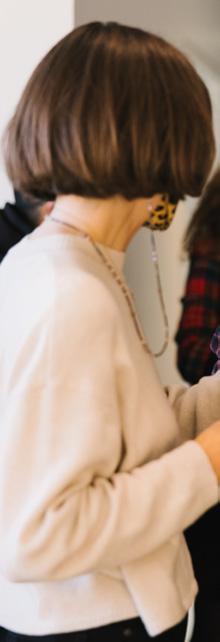
The anni horribilis of 2020–22 were dominated by Covid-19 and, for me, three other big “C”s: colonialism, cannibalism, and conservation. In the middle of this period my new book, Writing the Hamat’sa: Ethnography, Colonialism, and the Cannibal Dance, was published by UBC Press in July 2021. Bard Graduate Center hosted an online book launch later that fall. I’ve since given talks about the book at the University of Connecticut, for Nanaimo Ladysmith Public Schools, and at the 2021 American Anthropological Association conference. With BGC colleagues, I continued curatorial work on the exhibition Conserving Active Matter by helping select global Indigenous materials for loan and editing the companion volume’s section on Indigenous ontologies. Additionally, I published two essays for the project (one for print, one for the website) on the notion of Indigenous ontologies of active matter.
After a fall 2020 residency in BGC’s Research Institute, I co-taught two spring 2021 courses: “Objects of Colonial Encounter in North America” with BGC/American Museum of Natural History Postdoctoral Fellow Hadley Jensen, and “Unsettling Things: Expanding Conversations in Studies of the Material World” with Meredith Linn. The latter is an ambitious new course bringing together BGC faculty and visiting speakers to explore diverse forms of critical material culture scholarship; I coordinated this course again in spring 2022 with Caspar Meyer. This academic year, I also taught “The Social Lives of Things: Anthropology of Art and Material Culture” and “Exhibiting Culture(s): Anthropology in and of the Museum.”
Over the past two years, I participated in numerous online conferences and international workshops, including People: A Global Dialogue on Museums and Their Publics at the Metropolitan Museum of Art; Putting Theory and Things Together: Conversations about Anthropology and
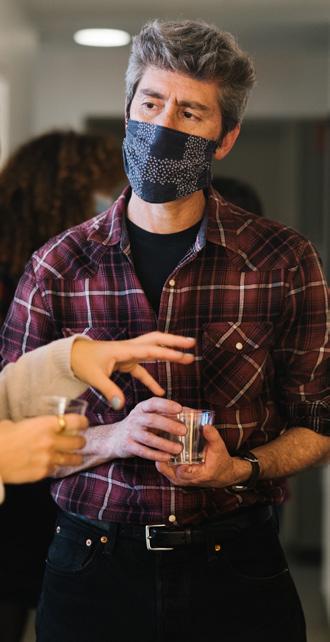
Museums at the Smithsonian’s National Museum of Natural History; and The Museum as Archive: Using the Past in the Present and Future at the Centre for Research on Colonial Culture, University of Otago, Aotearoa New Zealand. I also delivered lectures to classes at Columbia University, NYU/IFA’s Conservation Center, and University of Alaska. In the realm of public scholarship, I was interviewed for a documentary film about the photographer Edward S. Curtis, and I produced two podcast conversations related to Indigenous art: one for SmartHistory and the other for BGC’s Fields of the Future series.
During the 2020–21 academic year, my ongoing research on glass and transparency in modern design was published in peer-reviewed journals and edited volumes: “Cleanliness, Clarity—and Craft: Material Politics in German Design, 1919–1939,” in the Journal of Modern Craft (December 2020);
“Enemy of Secrets: The Invisible Force of Interwar Glass,” in the Journal of Design History (May 2021); “Empty by Design: Transition, Transformation, Transparency,” in I Am All of Glass—Marianne Brandt and the Art of Glass Today (Jovis, 2020); and “Experience, Poverty, Transparency: The Modern Surface of Interwar Glass,” in Surface and
Apparition: The Immateriality of the Modern Surface (Bloomsbury, 2021).
“The Emperor’s New Glass: Transparency as Substance and Symbol in Interwar Design,” was recently published in Material Modernity: Innovative Visual and Material Work in the Weimar Republic (Bloomsbury, 2022), and “Dürer, Goethe, and the Poetics of Richard Riemerschmid’s Modern Wooden Furniture” appeared in Design and Heritage, edited by Rebecca Houze and Grace LeesMaffei (Routledge, 2022). My first book, Richard Riemerschmid’s Extraordinary Living Things, will be released in October 2022 with the MIT Press. The publication of this book has been supported by a production grant from the Graham Foundation. Related material, “Holz: Wood and the German Werkbund in 1933,” will be included in a special fall 2022 issue of the Zeitschrift für Kunstgeschichte, devoted to the significance of nature in material and visual culture during the Third Reich.
A new course that I taught for Bard Graduate Center students in spring 2021, “Doll Parts: Human Forms in Material Culture and Design History,” has shifted my research focus: I am currently developing this topic both for my second book and for my 2025 Focus exhibition. I will be teaching my first exhibitionrelated course, “In Focus: Welcome to the Dolls’ House,” in the fall of 2022, while simultaneously
44 2020–22 in Review
pursuing this research as the fall semester’s Faculty in Focus. MIT Press has invited me to submit a proposal for the related book—Doll Parts: Designing Likeness—which I will be constructing this summer in conjunction with research at the Strong Museum of Play in Rochester, New York.
With travel and research on hold in 2020–21, it was the ideal time to put the finishing touches on various projects. I submitted final versions of two book chapters: one on a sixteenth-century French book of poems about the household and various furnishings for an anthology called Spaces of Making and Thinking edited by Colin Murray, Sophie Pittman (BGC MA ‘13), and Tianna Uchaz; and a second called “Verbal Representations of Furniture in Early Modern Europe” for A Cultural History of Furniture in the Age of Exploration, to be published by Bloomsbury. I also drafted a book that will appear in conjunction with a Bard Graduate Center exhibition, Staging the Table in Europe 1500–1800, that will open in February 2023. In fall 2020, I delivered a paper at an online conference sponsored jointly by the Newberry Library and the Folger on “Food and the Book, 1300–1800.” Perhaps most exciting, I was fortunate to appear alongside restaurateur and cookbook author Yotam Ottolenghi in a documentary
called Ottolenghi and the Cakes of Versailles, filmed during an event at the Metropolitan Museum of Art in summer 2018 for which I served as historical advisor. Though movie theaters were closed, the film was available on various platforms. I participated with the director and producer on numerous Zoom programs that followed screenings of the film for neighborhood and community groups all over the country.
In 2020–21, I was involved in several new teaching, writing, and resource creation projects. I co-created, co-organized, and cotaught the summer 2020 Lab for Teen Thinkers program with Carla Repice, Bard Graduate Center’s then-senior manager of education and engagement, and PhD student Tova Kadish. In response to the pandemic, we doubled the number of teens involved and shifted from an in-person to an all-online program. With the assistance of Jesse Merandy, I also created an extensive online resource of readings for the teens. With Catherine Whalen, I compiled a shared list of resources for the study of African American and African diasporic history and material culture.
In fall 2020, I co-taught “Approaches” with Freyja Hartzell and designed and taught a
new course called “Medical Materialities.” With Aaron Glass, I co-designed and co-convened the new “Unsettling Things” course in spring 2021, inviting many BGC colleagues and outside scholars to present their research and engage in conversations about applying critical perspectives to expand the study of objects. I also supervised Tova Kadish’s independent study about landscape analysis using geographic information system mapping.
Also in 2020–21, I established a new BGC internship with the Furniture History Society in collaboration with Adriana Turpin and again supervised the MA student internship process in the role of director of master’s studies. I also gave guest lectures in courses at the CUNY Graduate Center and City College and for BGC’s 2021 summer school for students of Historically Black Colleges and Universities. For my BGC Work-in-Progress talk in fall 2020, I presented part of a paper about nineteenth-century patent medicines that I drafted for a special issue of the journal Historical Archaeology. During the 2020–2021 academic year, I co-authored, with Nan Rothschild and Diana diZerega Wall, a chapter about Seneca Village for the book Advocacy and Archaeology: Urban Intersections, edited by Kelly Britt and Diane George and to be published by Berghahn Books. Additionally, I edited nine chapters contributed to Revealing
Communities: The Archaeology of Free African Americans in the Nineteenth Century, a book to be published by BGC based on the symposium of the same name I convened in the spring of 2020.
In 2021–22, I continued to work on the Lab for Teen Thinkers program, which ran as a hybrid program in the summer of 2021. Carla Repice and I also created three and ran two Seneca Village professional development workshops, collaborating with Marie Warsh of the Central Park Conservancy, Alice BaldwinJones, a food anthropologist and member of the Advisory Board of the Institute for the Exploration of Seneca Village History, and graduates of the previous year’s teen program. Additionally, I worked with BGC student Laura Mogulescu to develop a flexible lesson plan about foodways and food-related artifacts at Seneca Village. The workshops and lesson plan were part of a project to create an exportable Seneca Village curriculum.
For BGC students, I taught two courses in the fall of 2021: “Excavating the Empire City” and “Archaeology of African American Communities.” The latter was a new course I designed with the goal of centering the work of African American scholars. This academic year, I supervised one dissertation defense (Rebecca Matheson), one PhD qualifying exam (Emma
McClendon), two dissertation proposals (Adam Brandow and Tova Kadish), and one MA qualifying paper (Pim Supavarasuwat).
This spring, I have given several guest lectures in courses at Columbia University, the CUNY Graduate Center, and New York University, and one at the Irish Consulate for the African American and Irish Diaspora Network. This semester, I have been on pre-tenure sabbatical, revising my monograph about illness, injury, and healing among Irish immigrants in nineteenth-century New York City and pulling together the last chapters of Revealing Communities: The Archaeology of Free African Americans in the Nineteenth Century.
I spent 2020–21 socially distancing at home with my family in New Jersey. I offered two courses on Zoom: “Foreign Luxuries and Chinese Taste” and a new course on the art of the Qin and Han Dynasties (ca. 250 BCE to 8 CE), in which my students and I familiarized ourselves with the rich archaeological finds and scholarship of the past twenty years. At the end of the 2020–21 academic year, I concluded my tenure as director of doctoral studies, which meant that I was able to offer four courses in 2021–22: those consisted
2020–22 in Review

of an immersion into tenth- to thirteenth-century archaeological materials of the Liao and the Song dynasties. These were followed by spring classes on gardens and on Shang and Zhou ornament. I gave talks on Liao archaeology at the Institute for Advanced Study in Princeton and on the Belitung shipwreck at Yale University. My 2003 article, “Shaping Symbols of Privilege: Precious Metals and the Early Liao Aristocracy,” was republished in 2021 in the fiftiethanniversary volume of the Journal of Song-Yuan Studies. Another article, “Metal Objects on the Tang Wreck,” has been translated into Chinese as part of the Chinese edition of the catalogue The Tang Shipwreck: Art and Exchange in the 9th Century. The book is edited by the Asian Civilisations Museum
in Singapore and will hopefully be printed later this year. I am currently revising an article on “Qianlong’s Jue Tripods and Pre-Antiquarian Learning.”
In 2020–21, I taught “Modes and Manners in the Eighteenth Century” and “Nineteenth-Century Fashion,” which provided a welcome distraction from the strangeness of the times. Both classes were mostly remote, but in spite of this less-than-ideal situation, the journeys through these two centuries were stimulating and rewarding. Over the course of that year, I enjoyed getting to know two first-year students in Bard Graduate Center’s recently introduced “tutorials,” both of whom were in my fall 2020 and spring 2021 classes. In December 2020, I had an Instagram Live conversation with BGC alum Leigh Wishner (MA ‘04), now at Fashion Institute of Design and Merchandising, about one of my idols, Esther Williams. That month, I was also given the task of acquiring at auction a number of wonderful nineteenth-century garments on behalf of BGC for its Study Collection. In February 2021, I moderated the Modern Design History Seminar Series evening with guests Christopher Breward and Michelle Tolini Finamore. In spring 2021, I advised two secondyear students’ qualifying papers

and one of my doctoral students, William DeGregorio, successfully defended his dissertation, “Materializing Manners: Fashion, Period Rooms, and Gentility at the Museum of the City of New York, 1923-1958.” Since October 2020, I have been working with Emma Cormack (BGC) and Ilona Kos
(Textilmuseum St. Gallen) as cocurator for an exhibition that will open at the BGC Gallery this fall, Threads of Power: Lace from the Textilmuseum St. Gallen. I’m very excited to be involved in this project, which will take me through—and slightly beyond—my retirement from the BGC faculty in June.
In June 2022, Bard Graduate Center (BGC) assistant professor Michele Majer retired after eighteen years of teaching the history of dress and textiles. Several BGC alumni mentored by Majer (Emma Cormack MA ’18, an associate curator at BGC who is currently working on the Threads of Power: Lace from the Textilmuseum St. Gallen exhibition with Majer; Billy DeGregorio PhD ’21, a freelance researcher and one of the authors of a two-volume set about the collector Percival Griffiths, forthcoming from Yale University Press; Kirstin Purtich MA ’15, wardrobe manager at Garde Robe, the luxury fashion storage company; and Leigh Wishner MA ’00, the digital media and content manager for Fashion Institute of Design and Merchandising in downtown Los Angeles who is currently at work on a book about twentieth-century American textiles and their design significance) recently discussed her impact and shared their memories of studying and working with her. Here are some excerpts from their conversation; you can read the full transcription on bgc.bard.edu.
Emma: I showed up to BGC as a pretty freaked out and overwhelmed twenty-three-year-old. Michele’s class was the first one of my whole BGC career. And I was really nervous beforehand. She was so welcoming, and I felt comfortable to say whatever was on my mind, even if it wasn’t correct. And then I took every class that she offered, and eventually, we took a trip to Cora Ginsburg, which was so amazing. And then I came back by myself a different time, and Michele and Titi [Titi Halle, owner of Cora Ginsburg] brought out a silk moiré gown and a little spencer and were like, here you go. And then they left the room, and I was stunned. I could study and write about them … And Michele would connect me with past students. Her network of people is huge, and she’s so generous with making those connections. Everyone’s very happy to be connected with another “Michele person.” And working on this lace project (Threads of Power) has been amazing. Making an exhibition is so much work, and you spend so many hours sitting together and traveling together, and I feel so lucky that I’ve been able to do it with Michele.
48 2020–22 in Review
PHOTO CREDIT / CAPTIONBilly: I would say the two things that stand out for me about Michele are patience and trust. When we started working on Staging Fashion, she had already collected binders of postcards, and we started to bond when I volunteered to transcribe all the postcards. And we would just sit for hours saying, “What do you think this word is?” And you know, they were all in French. We’d ask, “Should we transcribe the printed material, the copyright date?” It was the minutia of minutia, and she was always patient and game to entertain the questions.
Michele and Titi taught me how to dress any silhouette and various mannequin and photography tricks. That’s where the trust comes in. The community that studies actual clothing is small, and you very quickly get the sense of who you can trust: either they know how to touch an old dress or they don’t. And I’m glad that they trusted me. I also took every class Michele taught while I was there and did an independent study with her, and in addition I got to learn and discover on my own, with her guidance.
Kirstin: Michele was the first person who made me realize that fashion history was a pursuit in and of itself. I think my class might have been the first to have the “Approaches to the Object” methodology course. And after the fashion history lecture, it was so obvious to me that that was what I wanted to do. I think Michele brought some 1820s gown from Cora Ginsburg, and it truly was the first time I’d gotten to handle anything like that and see it up close. I had done costume design in college, but I’d never done research in a formal way. … I appreciated that Michele remains so intellectually curious. She would incorporate new research into her lectures and in individual conversations, and nothing was ever stagnant. She kept her classes fresh and engaging with new scholarship.
Leigh: I remember Michele handed each of us a document of eighteenthcentury silk to take home. We asked, “Are you sure we’re allowed to?” and she said, “Yes, and I expect you to take them out. I expect you to look at them, to touch them and feel them and examine them.” I don’t remember the actual assignment. I just remember coming home with something precious and feeling like my world had changed. And the field trip to Cora Ginsburg … We passed around shawls and corsets, we were looking at a lot of things, and we were able to touch them and feel them. It’s always about the primacy of the object. I could go on for hours. I love Michele so much and I owe her so much.


In the summer of 2021, I worked with my colleagues at Bard Graduate Center and the Solomon R. Guggenheim Museum to teach the four-week course “Art Detectives.” This course was designed for the underrepresented high school students throughout the New York metropolitan area. It included introductions to art conservation and cultural heritage science and to the conservation laboratories of the Guggenheim. The students studied collection objects such as the architectural collaborative LOTEK’s installation Mixer (2000). We worked with time-based media conservator Agathe Jarczyk to develop substitute materials for degraded polyurethane foam from the original installation and led discussions about the use of plastics in contemporary art and their environmental and aesthetic challenges. We also made faux Pablo Picasso and Jackson Pollock paintings for each student and conducted elemental, molecular, and imaging analyses of the works so the students could learn about the techniques conservators and scientists use to address condition and attribution questions. The students were each assigned a painting for handson microscopy, spectroscopy, and infrared imaging to create a hypothesis about the work’s date and the appropriateness of its
attribution. From broad-ranging philosophical discussions on the nature of authenticity to hands-on multispectral imaging of works by Paul Gauguin in the Guggenheim’s Thannhauser collection, the students were exposed to career options in the arts, humanities, and sciences and learned how cultural objects can teach us about present
concerns such as non-degradable plastics pollution.

During the fall of 2021, I focused on adding social and environmental justice components to my “Polychrome Revolutions” course on the industrial revolution’s impact on artists’ materials of the nineteenth and twentieth centuries. I expanded the invention of photography segment to include how photography was used by Lewis Hine in his campaign to end child labor in the United States. His striking and shocking photographs of children working in textile mills, coal mines, glassworks, and farms were critical to his social reform mission. We also studied the work of Jacob Riis as he documented immigrant poverty in New York City, relating this to the illegal apartments in Queens that flooded this fall during Hurricane Ida. We then moved into the civil rights era to examine how the photographs of segregation by Gordon Parks laid bare the impossibility of “separate but equal” in the American South. His Outside Looking In and Department Store (Mobile, Alabama, 1956) are stunning indictments of the cruel realities of the Jim Crow era. We also studied the invention of plastics, starting with nineteenth-century innovations such as cellulose nitrate and acetate replacements for ivory and tortoiseshell, moving in the early twentieth century to bakelite, polyethylene, and polyurethanes. We considered the tremendous
utility and rapid proliferation of these new materials, but also their degradation in cultural heritage objects and their environmental costs from the 1850s to the present. Similarly, we examined the new inorganic and organic pigments of the nineteenth century and how the ubiquitous adoption of these hazardous materials in fabrics, house paints, wallpapers, and even food coloring led to the need for new levels of government oversight into artists’ materials.
This year, I also had the opportunity to present my research to classes at Columbia University Law School, Portland State University Department of Chemistry, Sotheby’s Institute, and the Art Conservation Department at SUNY College at Buffalo. I presented a paper on my chrome-tin pink research at the Majolica: The French Connection conference and did a public lecture with Spike Bucklow entitled Beautiful and Deadly: The Dark Side of Pigment . I also had two publications come out in conjunction with the Conserving Active Matter exhibition.
I was very busy in 2020–21, teaching four courses overall, including three new ones: “Making the Future in the Past: Material Culture Approaches to Craft and Time” (spring 2021), “Greek and Roman Technology” (spring 2021),
and “Metalwork: Technology, Value, Reception” (co-taught with Ittai Weinryb). The students were exceptionally motivated and creative, despite the difficult conditions we found ourselves in. Together with Meredith Linn, I served on the faculty team of the Diversity, Equity, Access, and Inclusion Working Group throughout the 2020–21 academic year. While travel restrictions prevented me from accepting several lecture invitations, I did deliver an online seminar at the University of Oslo on “Making and Meaning: Early Attic Stelai as Lithic Technology” (March 2021), in addition to the work-inprogress paper at Bard Graduate Center entitled “Connoisseurship:
Between Craft and Cybernetics” (October 2020). In May 2021, I convened an online workshop with colleagues from Europe and the US in preparation for the inperson symposium, “The Future as a Cultural Artefact,” which took place in April 2022. In my capacity as one of the editors of the journal West 86th, I reviewed submissions towards a special issue on metalwork which appeared in fall 2021. Finally, I wrote a book chapter on “Domesticating the Ancient House: The Archaeology of a False Analogy,” which will appear in Housing in the Ancient Mediterranean World: Textual and Material Approaches, ed. Jennifer Baird and April Pudsey (Cambridge University Press).
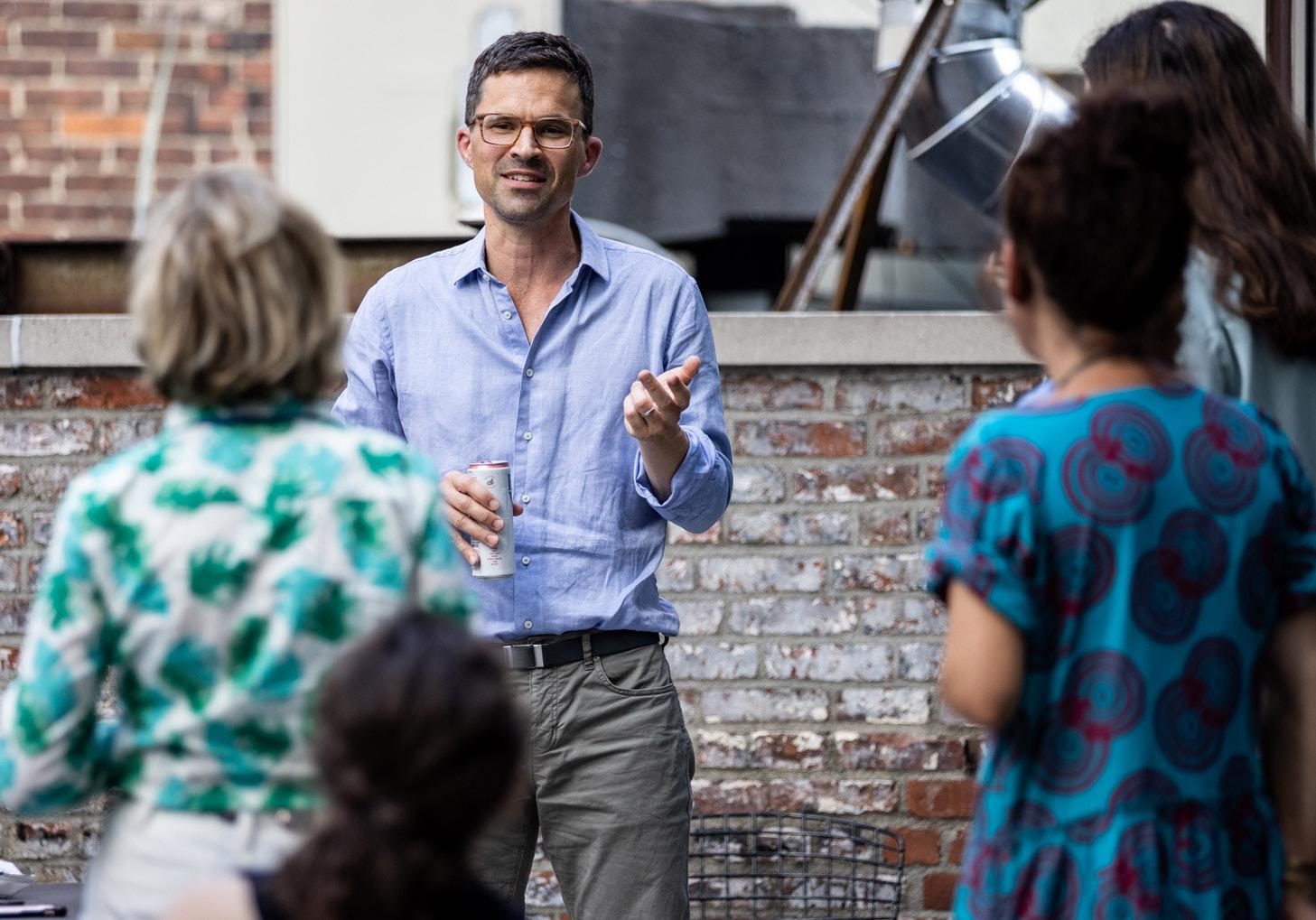
Looking back on the report I wrote for 2020–21, I realize it was entirely devoted to an unfinished project. I began fall 2020 by launching my exhibition project on research (spring 2026) with a course in which the students and I identified potential objects for the show. A work-in-progress seminar report with wonderful questions from the audience led me to doubt the prior exhibition model. A second, intermediate version led to a third version of the show that will now concentrate on artists doing research. Between December 2020 and March 2021, I spent much of my time preparing a grant proposal for a “citizen research” project for underserved communities in New York City. It began as an idea about research as practices useful for daily life and quickly developed into a four-continent, twelve-person, multi-million dollar grant proposal. A year after submission I was told that the foundation would neither reject it nor approve it—but would simply not evaluate it.
Conserving Active Matter and Richard Tuttle: What Is the Object? took up most of my time in summer 2021, when I was writing what ended up being seven essays for the two books and the websites. In fall 2021 I was involved in designing the Richard Tuttle book with Luc Derycke. With a small grant from the MacArthur
Foundation, I was able to convene a second series of MacArthur x BGC panels, this one on conservation. Later in the spring, with enormous help from Yukio Lippit at Harvard and Laura Minsky and Jen Ha at Bard Graduate Center, we ran the concluding Mellon symposia, Conservation Thinking in Japan and Conservation Thinking in India. A week after that came the symposium for Richard Tuttle: What Is the Object? All of these will be published—but that work will be accounted for in next year’s report! Finally, in this age of Zoom, I gave only one talk these past two years, at a seminar on German art literature at the École Normale Superieure, Paris.
One of the most heartening things about the 2020–21 pandemic year that helped ensure many of the usual stimulations and satisfactions of teaching and supervision was the commitment and good-humored resilience of the students, whose consistently high standards of work in the face of isolated study, restricted library access, and the stresses and strains of blended and distance teaching, was truly impressive. The range and depth of research projects that came out of my fall 2020 class, “The Renaissance Rediscovery of the World,” was exemplary.
Meanwhile, switching personal research to largely online resources and conference participation to Zoom were interesting adaptive experiences. In fall 2020, the Material Culture Forum at Cambridge University kindly organized a meeting around the volume Religious Materialities of the Early Modern World that I co-edited with Mary Laven and Suzanna Ivaniç, which brought together an interesting gathering of papers on material themes by academics and graduate students from a range of disciplines in the
humanities and material and conservation science.
Much of my research in 2020–21 was devoted to exploring the role of artisans in the mathematical culture of the Renaissance. Fruits of this were given as a work-inprogress talk to the Bard Graduate Center community, based on an article, “Turning Back the Sun: Christoph Schissler’s Horologium Achaz as Kunststück,” published in 2021 in a special edition of Nuncius, edited by Volker Remmert and Julia Ellinghaus, on Picturing Astronomical Miracles from the
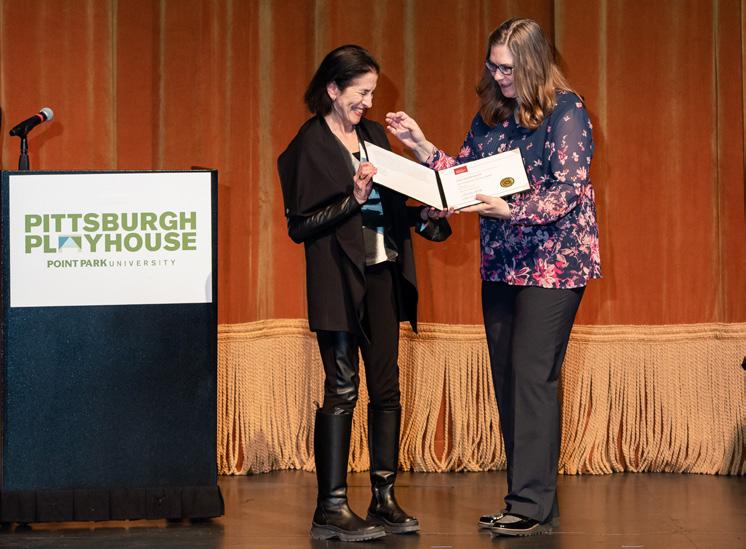
In June 2021, I gave a paper on “Nuremberg Goldsmiths and the Mathematization of Nature,” at a conference that forms part of a five-year SSHRC-funded research project: Before the ‘Great Divide’: The Shared Language(s) of Art and Science in the Early Modern Period. Other publications this year included an essay, “Object Worlds,” in A Cultural History of Objects in the Renaissance, ed. James Symonds, part of the six-volume Bloomsbury series A Cultural History of Objects.
Teaching Bard Graduate Center students has been the absolute high point of this academic year. The exceptional group of students in the curatorial thinking and exhibition-making course exceeded my expectations on many fronts. I grounded the syllabus in Holland Cotter’s review for the New York Times of the exhibition Promise Witness Remembrance at the Speed Art Museum in Louisville, Kentucky, commemorating the death of Breonna Taylor. Cotter argued that after that exhibition it was incumbent upon curators to be responsive to the socio-political climate of the present moment. The students fully embraced this idea by addressing issues of racism, feminism, gender, and design reform in the exhibitions they created for the class.
In addition to teaching, I managed two Focus exhibitions that opened in spring 2022, and I engaged with several faculty members, BGC fellows, and BGC alums on future Focus exhibitions that will be held in spring 2023 and 2025.
My work as a curator also responded to the Black Lives Matter protests in 2020. I selected eleven contemporary artists working in different practices from film and photography to drawing and painting for the exhibition Focus: Art & Social Justice at Woodstock Artists Association & Museum in January 2022.
It was a great pleasure to publish another edition of Sheila Hicks: Weaving as Metaphor and to reissue the out-of-print book, Artek and the Aaltos: Creating a Modern World, in a larger trim size that gives greater visibility to the many previously unknown Artek drawings and projects. I was honored to accept the Society of Architectural Historians Exhibition Catalogue Award for Eileen Gray at the annual meeting in Pittsburgh. My scholarship and research expanded in new directions when I was invited to be a contributing author to the book Irma Boom: Book Manifest, published by the Koenig Verlag in the Netherlands, that launches in the fall of 2022. My text considers Boom as a dramaturgical designer through the lens of Bertolt Brecht’s writings on dramaturgy.
My introduction to Bard Graduate Center was in fall 2020 when I joined Catherine Whalen and Meredith Linn in planning the first convening of the Seminar in the Art and Material Culture of Africa and the African Diaspora Our collaboration continued into fall 2021 and involved organizing two more seminar talks featuring Monica Miller of Barnard College and Michelle Wilkerson of the Smithsonian Institution’s National Museum of African American History and Culture.
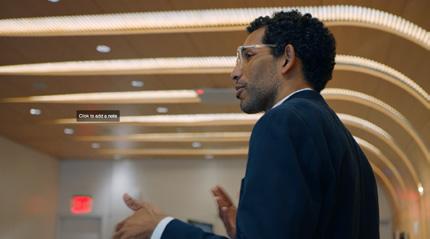
Last spring, the University of Michigan Press published my first monograph, Filtering Histories: The Photographic Bureaucracy in Mozambique, 1960 to Recent Times. This past academic year, I presented on this book project at the University of California, Berkeley, New York University, University of Toronto, and University of Western Cape. I conducted interviews on my research and teaching projects with the New Books Network and Art & Education The arts and literary journal the White Review published my interview with the multi-media artist Lubaina Himid on the occasion of her first solo show at Tate Modern.
In spring 2022, I formally joined the BGC faculty. I taught my first BGC course titled “African, AfricanAmerican, and Black Diaspora Visual and Material Culture,” which featured a visit to a retrospective on Faith Ringgold at the New Museum; guest speakers included Emilie Boone (City Tech, CUNY, and CUNY Graduate Center), Shawyna Harris (Georgia Museum of Art), and Leslie Wilson (Art Institute of Chicago).
Exhibition design and curation are central aspects of my research. Since April 2020, I have worked on an exhibition about the Black American artist Benjamin Wigfall and the artist residency and youth arts center he established, called Communications Village. The exhibition is scheduled to open in September 2022 at the Dorsky Museum of Art at SUNY New Paltz, and then it will travel to the Virginia Museum of Fine Arts (VMFA) in April 2023. My counterpart at the VMFA, Sarah Eckhardt, and I have been researching, writing, and editing an encyclopedic catalogue and selecting over seventy-five works to be showcased from various private and museum collections.
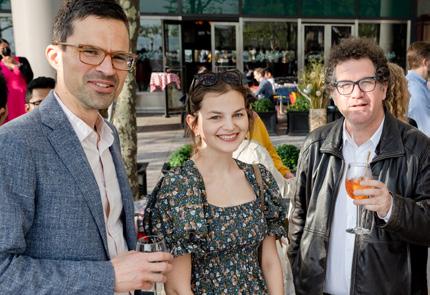
In the 2021–22 academic year, I continued to work on a new book series together with Caroline Fowler and Princeton University Press entitled Art/Work. The series narrates a new history of art founded in the study of objects, materials, and technology. We have commissioned volumes centering on the media of ceramics, pigment, plastics, and weaving. In my capacity as co-editor of the journal West 86th, together with Caspar Meyer, I prepared a special issue on metalwork. Also in this academic year, together with Elizabeth Williams of Dumbarton Oaks, I have organized the conference Rethinking the Wearable in the Middle Ages (BGC, April 28–29, 2022).
I continued to research and write parts of my book project, Art and Frontier. The book carefully examines the place of art and material culture in frontier societies by concentrating on a complex moment in the history of European expansion in the Middle Ages when material consumption and production intensified dramatically. I focus on the geographical region of Crimea, a peninsula on the northern coast of the Black Sea, during a roughly two-hundred-year period of European exploration and colonization. Through a focused look into how art and material culture worked to produce, define,
and profess the actual and conceptual space of the frontier, I argue a new understanding of the center can simultaneously arise.
In 2020–22, I developed and taught two new courses grounded in the philosophy of inclusive pedagogy and Bard Graduate Center’s commitment to greater diversity, equity, access, and inclusion. The first, “Women Designers in the USA, 1900–2020,” was inspired by Pat Kirkham and Susan Weber’s landmark 2000–2001 exhibition and catalogue and the hundredth anniversary of US women’s suffrage. Drawing upon the expertise of practicing curators, the class offered a special focus on Black, Latina, and Indigenous women designers. The second, “Americana Redux: Materializing Multiculturalism in the Postwar United States,” investigated how individuals and groups have deployed material culture to
challenge, redefine, and expand constructs of citizenship and belonging in the United States of America. For BGC’s ongoing foundation course “Objects in Context ,” I also implemented a new “Contemporary World” session, in which students presented on recently designed objects while addressing issues of social justice, sustainability, and history and memory.
In 2021, my advisees Anne Hilker and Antonio Sánchez Gómez successfully defended their dissertations, respectively
“The Legal Lives of Things: The Metropolitan Museum of Art at the Boundary between Public and Private” and the prize-winning “Diógenes A. Reyes’s Silhouette Biography: Print Culture and the
Politics of Technology, Distance, Mediation, and Things Left Unsaid in the Transnational History of the Colombian Caribbean (18981920).” William DeGregorio, coadvised by Michele Majer and myself, also successfully defended his dissertation on ideologies of collecting and displaying fashion at the Museum of the City of New York.
In 2021, BGC launched Voices in Studio Glass History: Art and Craft, Maker and Place, and the Critical Writings and Photography of Paul Hollister, a digital exhibition and publication co-created by Barb Elam, Digital Collections metadata librarian and Study Collection manager, Jesse Merandy, director of Digital Humanities / Digital Exhibitions, and myself.
Watching Bard Graduate Center students present at their Qualifying Paper (QP) symposium is a special moment for Helen Polson, assistant professor of practice in writing at BGC. Reflecting in particular on the 2021 QP symposium, she said, “I feel like it was an incredibly strong year. Right in the midst of Covid, and researching at home all by themselves, how did they do that? It was amazing.” It was particularly poignant for her as these were the first students to take her course, “Writing Objects,” which she began teaching two years ago.
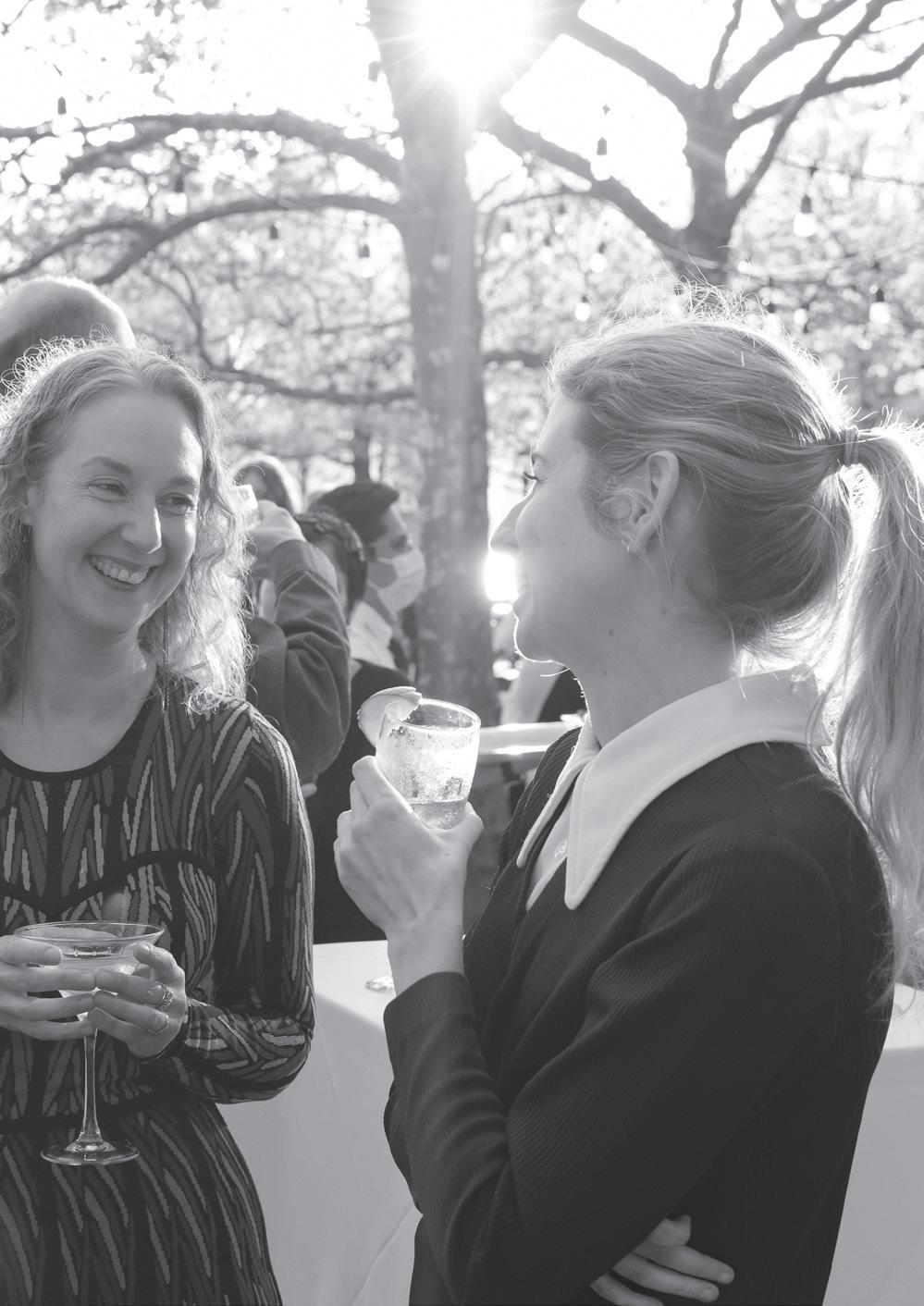
Polson has been a writing tutor at BGC since 2012. After spending years getting to know the students and their work, she “felt that BGC could support its students more and could get more out of them if we did more,” so she proposed teaching a writing course to Dean Peter N. Miller. They conceived of “Writing Objects” as a complement to the other required courses in the first-year core curriculum, “Objects in Context” and “Approaches to the Object.”
In “Writing Objects,” Polson covers topics essential to graduate writing, covering how to properly cite sources, paraphrase, and write proposals, as well as skills that are more specific to material culture, such as how to write object comparisons and object labels and explore the potential of writing as a cognitive tool. She still finds time to work one-on-one with students on their class assignments, essays, and QPs, so in addition to benefiting from her foundational course they can also draw on her unwavering support for the duration of their time at BGC.
An exuberant and approachable professor with an undergraduate degree in mathematics, an MA in visual culture, and a PhD in performance studies, Polson began teaching science students how to write while completing her dissertation at New York University and, in the process, learned a lot about writing herself. This multidisciplinary background makes her uniquely qualified to teach writing at BGC. As she reflected,
One of the characteristics of BGC is its interdisciplinary alliances, and one of the hard things that we ask students to do is to hop between disciplines. They might be in an archaeology class in the morning, a materials science class in the afternoon, and then at night, doing reading for a history theory class the next morning. Part of transforming yourself from a consumer of knowledge to a producer of knowledge is learning to be a master of all those disciplines—to be able to move between them and integrate them into one body of knowledge. And I think, because I have this background in mathematics and performance studies, that I’m able to be flexible in my approach to writing in a way that’s unusual for writing teachers who tend to come up through, say, English. It’s part of what I can offer students.
Her academic knowledge of performance studies, specifically how objects are used in performance, has also been helpful to students. She particularly enjoys working with students who are writing about “performing objects” and theatrical props, movement and corporeal techniques, queer and disability studies, and performance and film. She also enjoys teaching subjects that are outside of her comfort zone. This past year she taught a workshop on historical fiction, which she and the students found very productive. On the future of “Writing Objects,” Polson says, “One of the directions I’d like to move in is to explore an expanded view of what forms and modes of writing are appropriate to the study of material culture. I’m inspired by the innovative writing and teaching of my colleagues and, of course, the engaging work of my students.”
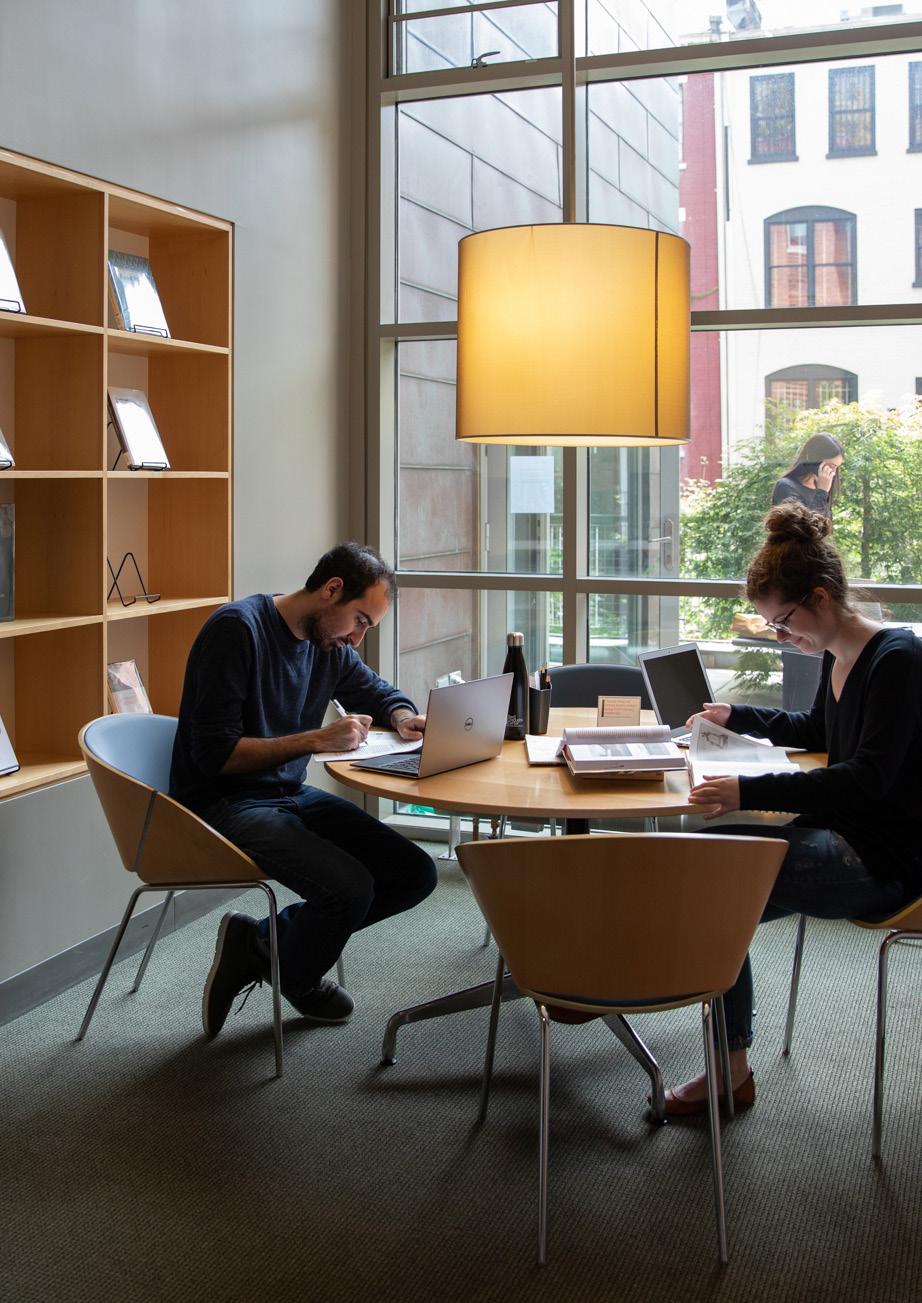

In November 2020, I took an online cochineal-dyeing workshop with Zapotec master weaver Porfirio Gutierrez. Over the course of two days, we learned the process of dyeing with cochineal, from grinding the dried insects to washing the dyed fabric. All materials were provided by the workshop organizers, Botanical Colors, including two pieces of premordanted fabrics (treated to receive dye) and the cochineal insects. The workshop was taught by Gutierrez, who kindly supervised, answered questions, and advised every participant individually. He demonstrated each step using two cameras, one showing himself in his workshop and the other showing a close-up of his hands and process.
As Gutierrez provided instructions, he also gave us technical and chemical explanations of the materials and techniques we were employing, such as why cochineal reacts differently depending on the fabric. Teaching the class from his workshop in Ventura, California, he also gave a tour of his studio, presenting his most recent creations. He explained the dyeing and weaving process for each piece and the materials, tools, and technologies employed.
Gutierrez prepared lectures that situated cochineal dye in a historical and cultural context. He spoke about cochineal as a species, its cultivation and harvest in Mexico, the different uses of cochineal-dyed fabrics in the Zapotec culture, and the symbolism associated with the bright red color. He complemented this historical approach with contemporary photographs of ceremonies where cochineal-dyed fabrics play an important role. For each session, we received a document with important notes and information and a link to the recording to consult as many times as we wanted in the future.
Despite the usual difficulties of remote classes, the fact that this was an online workshop granted me access to it; had it been in-person, the time and financial commitment would have been too much for me on top of my academic responsibilities. It provided me with a sensorial and physical understanding of the dye material, complemented my historical knowledge, and introduced me to a network of weavers, natural dyers, and artists from all over the world who also taught me a lot during the workshop. I am grateful for the support of the Bard Graduate Center, which covered workshop expenses through the student travel and research fund. I encourage all students to consider online material workshops in the future.
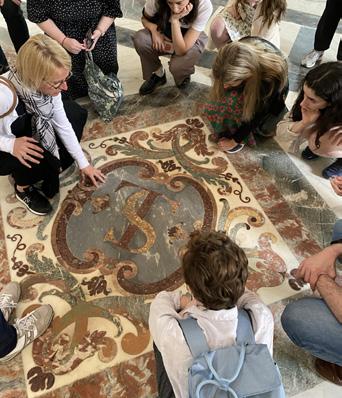
Directly after finals week, the first-year MA students spent twenty days in Paris and Greece. In Paris, we were hosted by the École du Louvre and learned about eighteenth- and nineteenth-century decorative arts, interspersed with modern art and fashion. And in Greece, we explored Greek heritage while working on an archaeological project on the island of Despotiko. Here is my travelogue.
Monday, May 9:
On our first day in Paris, we walked through the Palais Royale in the early morning. Later that day, we were introduced to many faculty members of the École du Louvre.

Tuesday, May 10:
Having overcome our jetlag, we made our first venture into Parisian museums. We started the day with a history of Paris at Musée Carnavalet with the curator of decorative arts, Ulysse Jardat. We then ventured outside of Paris to Écouen, where we hiked through a beautiful park to reach the Musée national de la Renaissance. Curator Julie Rohou gave us a tour and presented and dismantled the Daphne Cup, an object in a case study we had encountered through the “Objects in Context” course.
This day was all about eighteenthand nineteenth-century decorative arts! It began at the Louvre with a special tour of the Napoleon III Apartments that focused on the power of extravagance in the political world. After a lunch break, we made our way to Musée Nissim de Camondo, an outpost of the Musée des Arts Decoratifs, to learn about its collection of eighteenth-century decorative objects.
On our fourth day in Paris, we traveled to Musée d’Orsay to learn about the decorative arts of the art nouveau period. For many of us, the day’s highlight was the trip to the Palais Galliera, Paris’s fashion museum. Curators Alexandre Samson and Laurent Cotta guided us through all periods of Parisian fashion, including supreme examples of eighteenth- and nineteenth-century dress and modern-day haute couture.
After a morning at Fondation Le Corbusier, we crossed the Seine for a special tour of the Sèvres—Manufacture et Musées nationaux with its director, Dr. Charlotte Vignon. She led us through the production workshops, including those of the mold makers and the ceramic painters. Afterward, we were given a brief tour of the museum and its renovation plans.
Saturday, May 14, and Sunday, May 15:
With no set agenda for the weekend, one of my classmates and I spent Saturday exploring museums including the Hôtel de la Marine and Musée de l’Orangerie. The most exciting part of the weekend was a short trip to Giverny, the home and studio of Claude Monet. The gardens were full of irises and other flowers in full bloom, allowing us a break from the city.
Monday, May 16:
The highlight of the trip, at least for me, came on Monday with not one but two special tours of the palace of Versailles. These two tours were led by Sophie Mouquin, a professor and specialist in the marbles of Versailles,

and Marie-Laure de Rochebrune, the chief curator, who showed us the King’s Apartment. As Versailles was closed to the public, we were able to see the palace empty and quiet for the better part of the day. While many areas on the grounds were closed for filming, we explored the gardens and enjoyed a nice picnic!
Tuesday, May 17:
Our final day in Paris brought us to the Hôtel de la Païva, built by a famous nineteenth-century courtesan and now the location of an elite travelers’ club. In the afternoon, we wrapped up the trip with a visit to the newly reopened Musée de Cluny, where we met with the curator Béatrice de Chancel-Bardelot.
Thursday, May 19:
After traveling to Greece, we spent two full days in Athens, learning all we could about Greek culture and seeing some of the most famous historical sites in the world. We started the day with a very windy trip to the Acropolis and its sister museum with professor Caspar Meyer, and we ended it with a wonderful trip to the Benaki Museum led by Dr. George Manginis.
Friday, May 20:
On our final day in Athens, we traveled to two museums that played a key part in our understanding of the archaeological project we would soon take part in. The first was the Museum of Cycladic Art, where we were led by Dr. Ioannis Fappas. The second was the National Archaeological Museum, where we learned about the types of objects found on archaeological sites around Greece and the importance of these objects in understanding ancient Greek culture.
Saturday, May 21:
This was another travel day for us, but instead of a plane, we took a fourhour ferry ride to the island of Paros, followed by another short ferry ride to Antiparos, where we stayed for the next seven days.
Sunday, May 22:
On Sunday, we were guided through the Paros Archaeological Museum, where the majority of objects and fragments found on Despotiko are
stored. We learned about the conservation of archaeological objects along with the history of marble and ceramics on the islands of Paros, Antiparos, and Despotiko.
Monday, May 23–Friday, May 27:
During this week, we spent the majority of our mornings and afternoons traveling to and digging on the island of Despotiko. Some of our tasks included clearing weeds and surface dirt, digging new areas of excavation, excavating established rooms in the complex, and cleaning the ceramic fragments before their transfer to Paros.
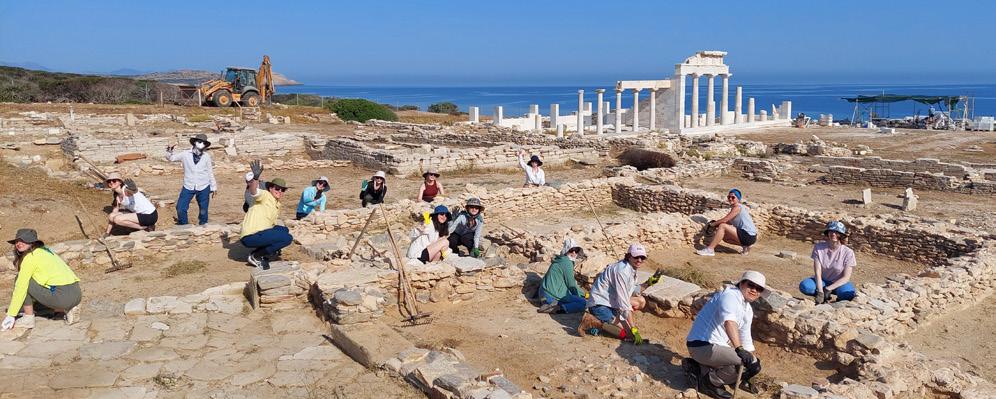
While it was hot and we were all covered in dirt by the end of each day, many of us found that by working directly on an archaeological site, we had a better understanding of and appreciation for the objects we were handling.
As a special ending to the trip, we spent Friday afternoon on a small beach where we enjoyed a nice lunch and a swim. We also got a quick boat tour of both Despotiko and Antiparos, where we jumped into the sea and explored the interesting rock formations!
Saturday, May 28–Sunday, May 29:
Sadly our trip had to end, and we found ourselves back in Athens for one night before heading back to New York.
For many of us, the trip went by far too quickly, but we are all incredibly grateful for the time and effort put in by everyone at Bard Graduate Center, the École du Louvre, and the Despotiko archaeological dig for making this trip possible for us. I would like to especially thank professors Jeffrey Collins and Caspar Meyer for leading us on this adventure, PhD candidate and teaching assistant Elizabeth Koehn for making Paris so fun, and École du Louvre representative Lea Marchal for putting together an amazing itinerary in Paris.
The Covid pandemic posed many challenges for researchers, and it galvanized Bard Graduate Center’s library to find innovative ways to support the research needs of students and faculty. Fortunately, the library was well positioned to provide enhanced online service, having steadily expanded its digital holdings and access to online resources over the past decade. BGC research librarians offered subject-specific research guidance via Zoom, facilitated access to
research materials via interlibrary loan and digital resources, initiated a remote scanning service, and kept the library open to those who were able to come to West 86th Street.
In the spring of 2021, BGC created the Department of Research Collections (DRC), a new organizational entity that unifies the library, the Object Study Collection, BGC archival materials, and digital assets. As one reflection of this more unified approach, in
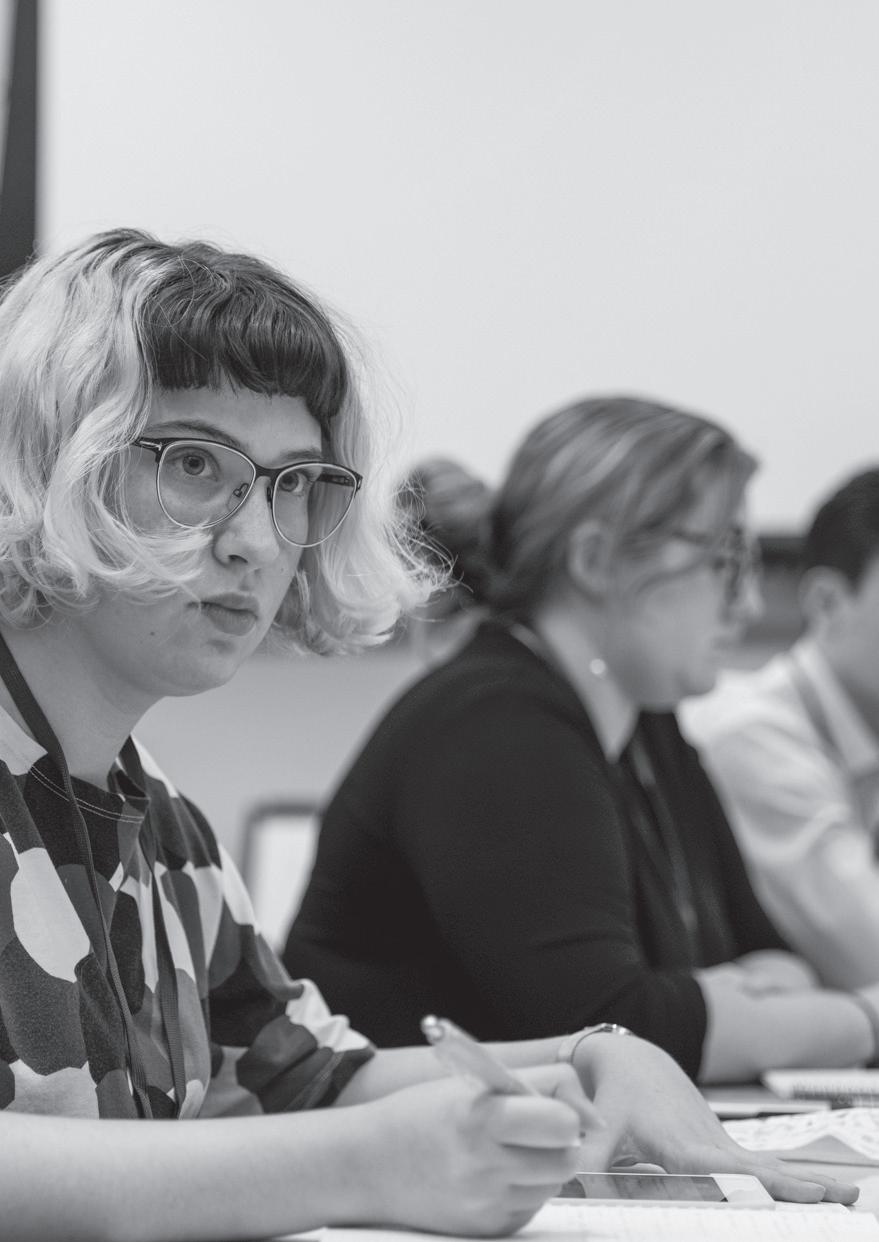
spring 2022, the DRC launched FOLIO, a new discovery interface that allows users to search BGC’s Study Collection images alongside its library catalog and electronic journal articles. The new structure has already enabled greater communication and coordination across the institution, improved discovery and accessibility of institutional assets, and begun creating the necessary structure to properly preserve and promote BGC’s unique collection.
The Department of Research Collections has made significant contributions to recent Gallery and online exhibitions. Our team cataloged 125 objects collected by Richard Tuttle, many of which were gifted to the BGC Object Study Collection and included in the exhibition Richard Tuttle: What Is the Object? The online exhibition Voices in Studio Glass History, originating from a unique gift of nearly three hundred images from the teaching collection of the critic and historian Paul Hollister, was launched in March 2022. And in collaboration with the BGC Gallery, the department is piloting a new Exhibition Archive Project, which will simultaneously develop our institutional archive and offer students and researchers a new perspective on the creation of past exhibitions.
The Study Collection, now ten years old and approaching two thousand objects, is embarking on an exciting new phase of growth that includes enhanced access and use of the collection through regular workshops and expanded storage and display space. The DRC offered the first of these workshops, entitled “Get Glassy,” in April 2022. This workshop allowed students hands-on access to the various techniques of decoration and making represented in the collection’s glass works, from a seventeenth-century Persian flask to studio glass of the late twentieth century. Recent additions to the collection include a large donation of Southeast Asian textiles from John Lillis and a purchase of nineteenth- and twentieth-century women’s garments.
Over the past quarter century, BGC has both amassed and generated a significant collection of scholarly material. With eighty exhibitions behind us, a collection of nearly two thousand objects—along with an expanding landscape of digital output through the research forum, podcasts, recorded lectures, articles, and events—now is the time to ensure we preserve and guarantee ongoing access to this critical mass of material, and thus provide a strong foundation for future scholarship.
Bard Graduate Center launched its Digital Humanities / Digital Exhibitions (DH / DX) program in fall 2020. DH / DX places focuses on sharing research—exhibitions, publications, projects, and events— with local and global audiences, in the BGC Gallery and online. In addition, DH / DX provides BGC
students with a comprehensive curricular approach to the use of digital tools and methodologies to support, develop, and exhibit scholarship in decorative arts, design history, and material culture. BGC’s digital literacy initiative requires students to apply these tools, which are increasingly
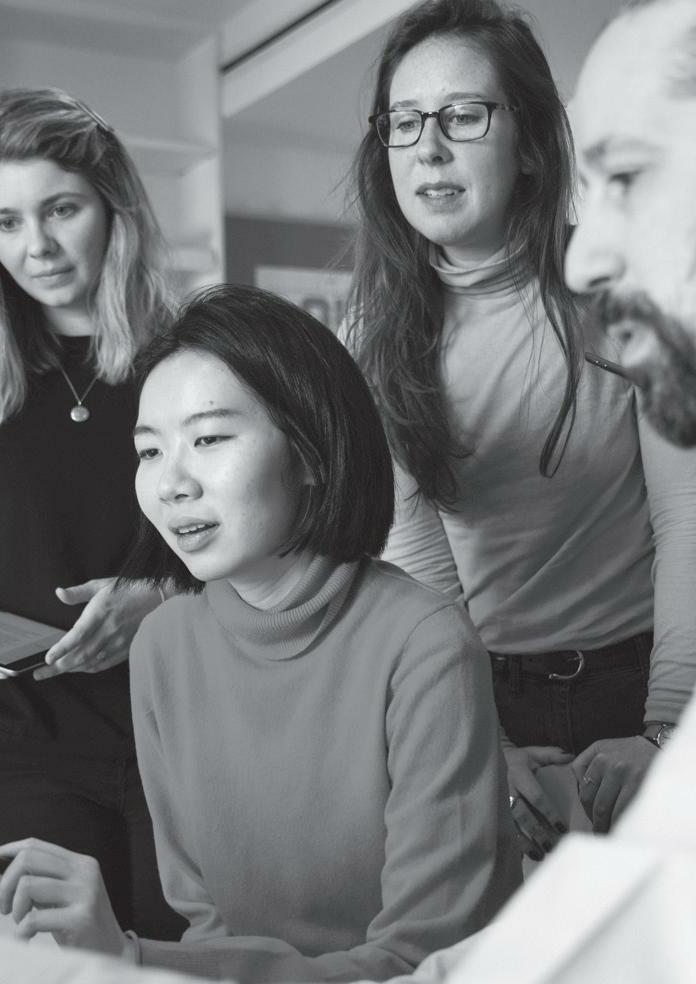
essential for academic and museum careers, to their own research and collaborative projects.
In March 2021, DH / DX launched an online exhibition to accompany Majolica Mania: Transatlantic Pottery in England and the United States, 1850–1915. In a first for BGC, the site includes several exhibition objects rendered as detailed 3D models that users can interact with and view from multiple perspectives. The site also includes features related to the sources and styles, manufacture, marketing, and uses of majolica, an audio guide, excerpts from the catalogue, contemporary responses to majolica, and a K–12 educator guide
That same month, BGC launched its first born-digital exhibition, Voices in Studio Glass History: Art and Craft, Maker and Place, and the Critical Writings and Photography of Paul Hollister, a project that rethinks the history of postwar American studio glass through the curation and presentation of an extensive collection of archival photographs, ephemera, and hundreds of audio and video interviews with artists, curators, critics, historians, and gallerists. It also features an annotated bibliography of over seventy essays
and reviews from noted glass historian Paul Hollister, which provide important context and a historical resource for the future study of this important American art movement.
In 2022, BGC launched two more online exhibition sites to accompany exhibitions in the BGC Gallery: Richard Tuttle: What Is the Object? And Conserving Active Matter. BGC students worked with exhibition curators and DH / DX to develop content and interactive features for each of the projects.
DH / DX hosted two symposia, one in 2021 entitled Refresh / Reset / Reformat and one in 2022 entitled High Availability: Museums’ Digital Response During the Pandemic The first brought together scholars from several American universities to discuss the use of digital tools to help recover, redefine, and reimagine the past, particularly through the exploration of lost and marginalized voices and cultures, and how those projects move us to a digital future that honors the contributions of diverse voices. The second assembled museum professionals from across New York City to the discuss challenges they faced during Covid and the opportunities that digital tools provided to respond to those challenges.
Bard Graduate Center publishes scholarly books and journals that pertain to material culture, design history, and the decorative arts, including exhibition catalogues, the journals West 86th: A Journal of Decorative Arts, Design History, and Material Culture and Source: Notes in the History of Art, and the Cultural Histories of the Material World book series. In addition, in 2020, BGC launched a new series of experimental publishing projects, BGCX, which aims to extend the learning period around time-based programming by reflecting the spontaneous alchemy of conversation, performance, and hands-on engagement that occurs in BGC events with artists, makers, scholars, and others.
French Fashion, Women, and the First World War (exhibition catalogue)
2020 50 Books | 50 Covers winner, awarded by the American Institute of Graphic Arts (AIGA), the professional association for design
First Prize in the 2020 American Alliance of Museums Publications Category
Jan Tschichold and the New Typography: Graphic Design Between the World Wars (exhibition catalogue)
Second Prize for the 2020 American Alliance of Museums Publications Category
Eileen Gray (exhibition catalogue)
2020 50 Books | 50 Covers winner, awarded by the American Institute of Graphic Arts (AIGA), the professional association for design
Deutsches Architekturmuseum (DAM) Architectural Book Award 2020, bestowed in collaboration with the Frankfurt Book Fair
Majolica Mania: Transatlantic Pottery in England and the United States, 1850–1915 (exhibition catalogue)
2021 Historians of British Art Book Prize for an outstanding multiauthored book on the history of British art, architecture, and visual culture
Art of the Jewish Family: A History of Women in Early New York in Five Objects (Cultural Histories of the Material World)
Winner of three National Jewish Book Awards: Gerrard and Ella Berman Memorial Award for History; American Jewish Studies Celebrate 350 Award; and Women Studies Barbara Dobkin Award. Author Laura Arnold Leibman was the first author ever to win three awards for the same title in the same year.
Majolica Mania: Transatlantic Pottery in England and the United States, 1850–1915
Edited by Susan Weber, with Catherine Arbuthnott, Jo Briggs, Eleanor Hughes, Earl Martin, and Laura Microulis, 2020
Richard Tuttle: What is the Object?
Edited by Peter N. Miller, 2022
The first publication to explore the object collection of influential American artist, Richard Tuttle, as well as the cards on which he has recorded his thoughts about these items over the past five decades. Designed by Belgian book artist Luc Derycke as a “book as object.”
Sheila Hicks: Weaving as Metaphor
Edited by Nina Stritzler-Levine with Arthur C. Danto and Joan Simon
Sixth reprint, 2021
Artek and the Aaltos: Creating a Modern World
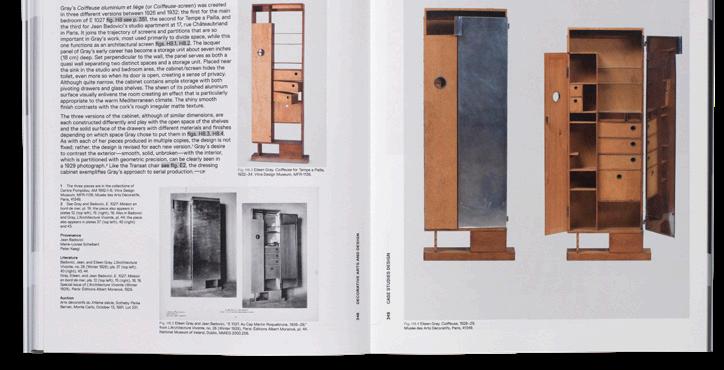
Edited by Nina Stritzler-Levine and Timo Reikko
Revised and expanded edition, 2022
Ritual and Capital, 2020
An expansive volume that collects an interdisciplinary range of voices and genres that reflect on ritual as a form of resistance against capitalism. The poems, essays, and artworks included in this anthology explore habits and practices formed to subvert, subsist, and survive under the repression of capital.
What is Research?, 2021
Edited by Peter N. Miller
To begin the task of understanding research as a concept and practice, Bard Graduate Center gathered a group of artists, scientists, and humanists—all recipients of MacArthur “genius” grants—for three evenings of a discussion moderated by Peter N. Miller, a MacArthur Fellow in his own right.
Cultural Histories of the Material World
The Museum in the Cultural Sciences: Collecting, Displaying, and Interpreting Material Culture in the Twentieth Century
Edited by Peter N. Miller, 2021
This book presents the first full English translations of articles by Otto Lauffer on history museums and by Oswald Richter regarding ethnographic museums, which show how sophisticated the discussion of museums and museum display was in the early twentieth century and how much could be gained from revisiting these reflections today.
Conserving Active Matter
Edited by Peter N. Miller and Soon Kai Poh, 2022
The effort to conserve things is part of the human struggle with the pervasive activity of matter. For as long as people have made things and kept things, they have cared for them and repaired them. Conserving Active Matter draws together the main lines and interim conclusions of a five-year research project embedded in Cultures of
Conservation, a ten-year effort to reimagine the relationship between conservation knowledge and the humanistic study of the material world.
Object, Event, Performance: Art, Materiality, and Continuity since the 1960s

Edited by Hanna B. Hölling (University College London), 2022
Conservat ors and museums increasingly struggle with conservation issues for works created from the mid-twentieth to the twenty-first century that are unstable over time. The contributors ask what it means to conserve artworks that fundamentally address and embody the notion of change and, through this questioning, guide us to reevaluate the meaning of art, objects, and materiality itself.
Eileen Gray Author and Second Author
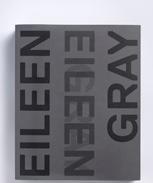
Majolica Mania
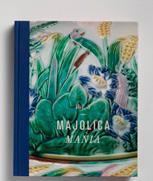
Author and Second Author
Conserving Active Matter Author and Second Author

Antonia Behan, Toronto, Canada
“Craftsmanship as a Mode of Thought: Ethel Mairet and Ananda Coomaraswamy in Ceylon, India, and Britain, 1902–1952”
Julie Bellemare, Quebec City, Canada
“‘A New Creation of This Dynasty’: Enamels, Glass, and the Deployment of Color in Qing China, 1700–1735”
The Lee B. Anderson Memorial Foundation Dean’s Prize
William M. Degregorio, Danbury, CT
“Materializing Manners: Fashion, Period Rooms, and Gentility at the Museum of the City of New York, 1923–1958”
Anne Hilker, Los Angeles, CA
“The Legal Lives of Things: The Metropolitan Museum of Art at the Boundary between Public and Private”
Maria Perers, Stockholm, Sweden
“Inside the Ideal Home: The Changing Values of Apartment Living and the Promotion of Consumption in Sweden, 1950–1970”
Antonio Sánchez Gómez, Bogotá, Colombia
“Diógenes A. Reyes’s Silhouette Biography: Print Culture and the Politics of Technology, Distance, Mediation, and Things Left Unsaid in the Transregional and Transnational History of the Colombian Caribbean, 1898–1920”
American Members of CINOA (International Confederation of Art and Antique Dealers’ Association) Award
Pierre-Jean Desemerie, Bordeaux, France
“Fashioning the Identities of Settler Women in Algeria during the 1930s”
Leonie Sophie Treier, Berlin, Germany
“Reassembling George Catlin’s Indian Gallery: Material Culture and the Performance of Ethnographic Realism”
Madison Layne Clyburn, Orlando, FL
“Perfumed Air and Scented Bodies: Materializing the Philosophy of Scent in Sixteenth-Century Padua”
Natalie Elizabeth Dequarto, Lake Ronkonkoma, NY
“‘A Little World of Themselves’: Women and the Cultivation of Fern Cases in the Nineteenth Century”
Noah Joseph Dubay, Fort Kent, ME
“Comfort and Convalescence: Fauteuils de Malade in Eighteenth-Century France”
Clive Wainwright Award
Juliana Fagua Arias, Bogotá, Colombia
“Seafaring Treasures: Latin America and the Transpacific Trade”
Mr. and Mrs. Raymond J. Horowitz Foundation for the Arts Award
Emily A. Isakson, Worcester, MA
“Imitating the Flower: NineteenthCentury Artificial Plants and Gendered Botanical Education”
Daria Rachel Murphy, Corner Brook, Canada
“Tonsorial Transformations: Women’s Sokuhatsu in NineteenthCentury Meiji Japan, 1868–1912”
Weixun Qu, Langfang, China
“The Afterlife of Lacquer Panels: Transforming Chinese Luxuries into French Furniture”
Constantine Prince SidamonEristoff, Washington, D.C.
“The Lives of Berenike: A Port City and Its People”
Cynthia Ash Volk, New York, NY
“Dehua Porcelain Figures of Budai: Models of Adaptivity in Seventeenth- and EighteenthCentury China and ‘Europe’”
Madison Jane Williams, Berkeley, CA
“Science in the Study and Authentication of Catholic Relics”
Jessica Mordine Young, San Francisco, CA
“On Anne Wilson and Winding the Warp: Embodied and Tacit Knowledge in Contemporary Textile Art”
2022
Michelle Jackson-Beckett, Philadelphia, PA
“Vienna’s Other Modernism: Design and Dwelling, 1918–1938”
The Lee B. Anderson Memorial Foundation Dean’s Prize
Rebecca Jumper Matheson, New York, NY
“American Artisans: William and Elizabeth Phelps, and Phelps Associates”
American Members of CINOA Award
MASTER OF PHILOSOPHY
Adam Boyd Brandow, Millbrook, NY
“From Rhine to Hudson and Mohawk: Material Culture and Palatine Identity in New York, 1710–1840”
Nicholas Piedra de Godoy Lopes, Charlotte, NC
“A Tournament of Ornament: The Stakes of Space and Surface in Nineteenth-Century Ornament Folios”
Elizabeth F. Koehn, Brooklyn, NY
“Utopian Shores: Visionary Design and its Limits in the 1960s”
Boxi Liu, Harbin, Heilongjiang Province, China
“From Kherlen River to Yanjing: Crafts and Cultural Diversity in the Kitan-Liao Empire”
Geoffrey Henri Christophe Ripert, Paris, France
“The Past as Model for the Present: The Taste for Marble and Hardstone Objects in France during the Long Eighteenth Century, ca. 1690–1815”
MASTER OF ARTS
mary adeogun, Bear, DE
“a satin scarf, and its many uses” Mr. and Mrs. Raymond J. Horowitz Foundation for the Arts Award
Bridget Bartal, Williams Bay, WI “(Mis)fitting Taliesin: The Women of Frank Lloyd Wright’s Taliesin Fellowship”
Grace Camille Gan Billingslea, Seattle, WA
“Fashioning Equality, Independence, and Freedom for Women in the Nineteenth Century: Madame Demorest’s Business Empire”
Ariana Bishop, Andover, MA “Loud Jewelry, Loose Women: Sex, Power, and Adornment in Storyville, New Orleans, 1880–1920”
Julia Marie Carabatsos, North Easton, MA
“‘What a Motley Creature I Was Become’: Hester Piozzi’s ‘Demi-Naturalization’ Materialized”
Clive Wainwright Award
Marion Demaris Larguier Cox, Nashville, TN
“Totem and Anti-Totem: Dual Signification and the Contentious History of Richmond’s Robert E. Lee Monument”
Mr. and Mrs. Raymond J. Horowitz Foundation for the Arts Award Ellen Enderle, Stuart, FL
“Adorned in Gold: Religion, Personal Display, and Women’s Agency in Ancient Macedonia”
Katherine Lanza, Chatham, MA
“Timeless Dispositions: Devotional Objects as Non-Mimetic Portraits”
Kristin Sue McCool, East Lansing, MI
“Challenging the Status Quo: Unsettling Dominant Narratives in MoMA’s Gallery 412”
Laura Mogulescu, Brooklyn, NY
“The Foreign-Born Mother and the Materiality of Americanization: Photography and the Creation and Documentation of Americanization
by the Educational Committee for Non-English Speaking Women”
Heather Jane McCormick Prize

Samuel Edmond Snodgrass, Springfield, MO
“‘May I Be Deaf at the Opera’: Dress and Voice of the Macaroni and Castrati”
Pim-Orn Supavarasuwat, Bangkok, Thailand
“‘One Sheds One’s Sickness in Books’: Illness, Uncertainty, and the Book as Creative Intervention”
Clive Wainwright Award
Bard Graduate Center’s internship program aims to provide our MA students with a range of professional experiences to explore potential career paths. Students ordinarily satisfy this requirement in the summer between their first and second year and have done so in museums, auction houses, archaeological sites, and education and public history. The inevitable disruptions caused by Covid over the last two years led students to seek remote or local opportunities, including a number here at BGC. We’re proud of how our students responded to the restrictions they faced and of the work they accomplished.
Antonia Anagnostopoulos
Benaki Museum
Jane Ayers
Bard Graduate Center (Study Collection)
Elliot Camarra
Good One Productions Daniel Chamberlin Black Craftspeople Archive
Mackensie Griffin Wadsworth Atheneum Museum of Art
Emily Harvey Bard Graduate Center (Focus Project)
Patricia Madsen
New York City Archeological Repository
Sydney Maresca
Historic Huguenot Street
Isabella Margi New York Historical Society
Josh Massey
Ben Zion Estate
Julia Meitz Asian American Arts Centre
Talia Perry
Furniture History Society, British and Irish Furniture Makers Online
Anna Riley Summer Institute in Museum Anthropology at the Smithsonian
Maura Tangum
Furniture History Society, British and Irish Furniture Makers Online
Zoe Volpa
The Musée Carnavalet
2021 Internships
mary adeogun Bard Graduate Center (HBCU Summer School and Archive Program)
Heath Ballowe
Furniture History Society, British and Irish Furniture Makers Online
Bridget Bartal Cranbrook Art Museum
Grace Billingslea Daniella Ohad Design
Ariana Bishop
Museum of Arts and Design
Julia Carabatsos
Bard Graduate Center (Craft, Art, and Design Oral History Project)

Marion Cox
Toh-Atin Gallery
Ellen Enderle
Tatter Textile Library
Katherine Lanza Philadelphia Museum of Art
Louise Lui Asian Civilizations Museum
Kristin McCool Bard Graduate Center (BGC Lab for Teen Thinkers)
Madeline Porsella New-York Historical Society
Samuel Snodgrass
The George Washington University Museum and the Textile Museum
Pim Supavarasuwat
Bard Graduate Center (BGC Lab for Teen Thinkers)
Madison Clyburn
Bard Graduate Center (Focus Project)
Natalie De Quarto
Wadsworth Atheneum Museum of Art
Juliana Fagua-Arias
New York City Archeological Repository/Cooper Hewitt Design Museum
Emily Isakson New York City Archaeological Repository Laura Mogulescu Dobkin Family Collection of Feminism
Madison Williams
The Private Collection of Hamish Bowles
Jessie Young
Tatter Blue, The Textile Library
Fall 2020
500. Objects in Context: A Survey of the Decorative Arts, Design History, and Material Culture I
Jeffrey Collins
510. Writing Objects
Helen Polson
502. Approaches to the Object
Freyja Hartzell and Meredith Linn
484. Metalwork: Technology, Value, Reception
Caspar Meyer and Ittai Weinryb
485. Medical Materialities Meredith Linn
486. The Science Behind the Sparkle Jennifer Mass
487. Athens: Material Culture
Approaches to the Classical City Caspar Meyer
488. What is Research?
Peter N. Miller
539. Modes and Manners in the Eighteenth Century, 1675–1804 Michele Majer
548. Women Designers in the USA, 1900–2020: Diversity and Difference Catherine Whalen
621. The Renaissance Discovery of the World: Collecting and Collections in the Early Modern Era Andrew Morrall
627. Foreign Luxuries and Chinese Tastes Francois Louis
748. The Sea Inside: Art and Material Culture of the Mediterranean World, 1050-1250 Ittai Weinryb
777. Field Seminar: Readings in Early Modern Visual and Material Culture
Jeffrey Collins and Andrew Morrall
845. American Craft, Design, and Folk Art in the 1920s and 1930s Catherine Whalen
912: Curatorial Practice and American Art at the Metropolitan Museum: A Bard Graduate CenterMetropolitan Museum of Art American Wing Collaboration Ivan Gaskell
931. News from Nowhere: Design and Utopia Freyja Hartzell
959. Exhibition as Medium: Curatorial Thinking Deborah Krohn
Spring 2021
501. Objects in Context: A Survey of the Decorative Arts, Design History, and Material Culture II
Catherine Whalen
475. Jews in the Ancient City: Materiality and Politics
Seth Schwartz
476. In Focus: Conserving Active Matter
Soon Kai Poh
477. Material Cultures of Trans-Atlantic West Africa Christian Larsen
478. Greek and Roman Technology Caspar Meyer
479. Making the Future in the Past: Material Culture Approaches to Craft and Time Caspar Meyer
480. Doll Parts: Human Forms in the History of Design and Material Culture Freyja Hartzell
481. Unsettling Things: Expanding Conversations in Studies of the Material World
Aaron Glass and Meredith Linn
482. Art of the Qin and Han Dynasties, 300 BCE-200 CE Francois Louis
483. A Song of Clay and Fire: Ceramics of Japan and Korea Diana Yang
691. Nineteenth-Century Fashion
Michele Majer
693. Craft and Design in the USA, 1945 to the Present
Catherine Whalen
793. The Grand Tour
Jeffrey Collins
863. Objects of Colonial Encounter: Native Arts of the Southwest and Northwest Coast Aaron Glass and Hadley Jensen
894.Objects of Belief: Iconoclasm and Continuity in the Era of Reformations, 1450-1600 Andrew Morrall
Fall 2021
500. Objects in Context: A Survey of the Decorative Arts, Design History, and Material Culture I
Catherine Whalen
510. Writing Objects Helen Polson
502. Approaches to the Object Freyja Hartzell and Andrew Morrall
470. Period Rooms, from the Nineteenth Century to Today Catherine Futter and Elizabeth St. George
472. In Focus II: Conserving Active Matter
Ivan Gaskell and Soon Kai Poh
473. Threads of Power: Lace from the Textilmuseum St. Gallen
Michele Majer
474. Archaeology of African American Communities Meredith Linn
475. Art and Ecology in the Pre-Modern World
Caspar Meyer and Ittai Weinryb
489. Living Things: Design and Biology in the Long Nineteenth Century Freyja Hartzell
572. Song Design and Material Culture, 960–1279 Francois Louis
584. Ceramics and Society: A Social and Cultural History of European Ceramics, 1500–1900 Andrew Morrall
730. The Social Lives of Things: The Anthropology of Art and Material Culture Aaron Glass
747. Visual and Material Cultures of the Middle Ages: An Introduction Ittai Weinryb
802. Archaeology of the Kitan-Liao Dynasty, 907-1125
Francois Louis
834. American Collectors and Collections Catherine Whalen
915. History and Material Culture: New Directions
Ivan Gaskell
959. Exhibition and Curatorial Practice Nina Stritzler-Levine
964. Excavating the Empire City: An Introduction to the Historical Archaeology of New York City Meredith Linn
968. Polychrome Revolutions: The Collision of New Art Media with the Social and Environmental Justice Movements of the Nineteenth Century Jennifer Mass
994. Staging the Table in Early Modern Europe Deborah Krohn
Spring 2022
501. Objects in Context: A Survey of the Decorative Arts, Design History, and Material Culture II
Jeffrey Collins
462. University Museums: Collections in Academia and Their Uses
Ivan Gaskell
463. Global Renaissance Deborah Krohn and Andrew Morrall
464. African and African American Visual and Material Culture Drew Thompson
Course Listings 83
466. Terracotta to Glaze: Ceramic Art in Africa from Antiquity to the Islamic Period
Annissa Malvoisin
467. “Thread of Victory”: American Fashion and World War II Rebecca Matheson
468. In Focus: Fire! Staging the Hearth in EighteenthCentury France Jeffrey Collins
469. What is the Object? Peter N. Miller and Richard Tuttle
471. Americana Redux: Materializing Multiculturalism in the Postwar United States Catherine Whalen
481. Unsettling Things: Expanding Conversations in Studies of the Material World Aaron Glass and Caspar Meyer
646. Domestic Interiors and Gardens in China Francois Louis
648. Art and Ornament in Early China Francois Louis
693. Craft and Design in the USA, 1945 to the Present Catherine Whalen
795. Exhibiting Culture/s: Anthropology In and Of the Museum
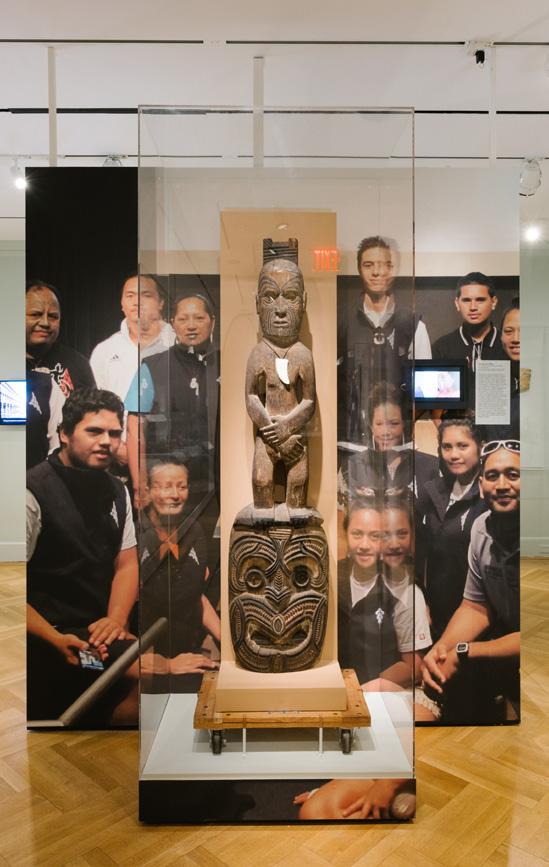
Aaron Glass
851. The Occult and Its Artefact in the Middle Ages Ittai Weinryb
883. Damage, Decay, Conservation Ivan Gaskell and Soon Kai Poh
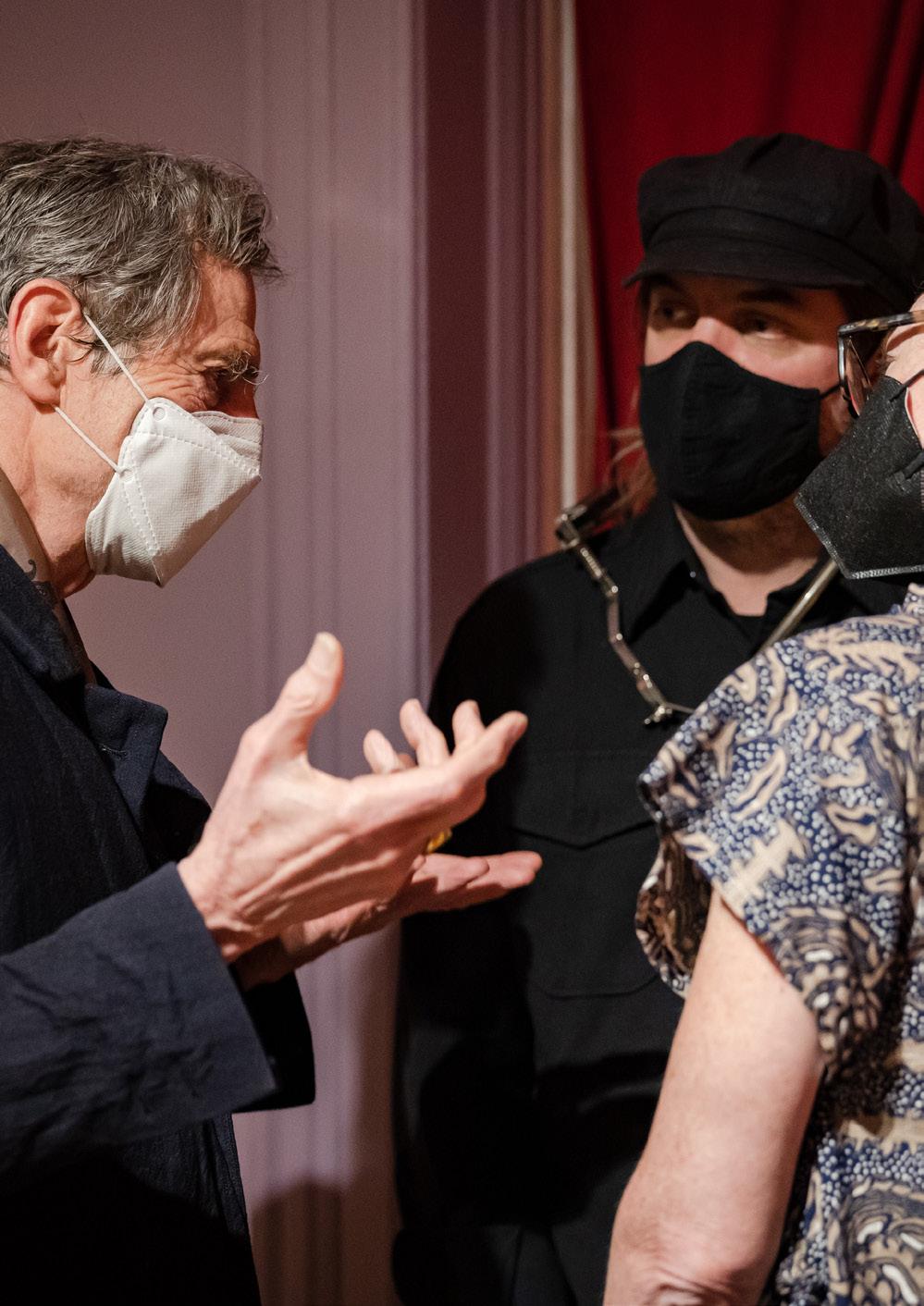
The fellowship programs at Bard Graduate Center are designed to further the institution’s goal of promoting research in the areas of decorative arts, design history, and material culture—what we call the “cultural history of the material world.” The following fellows were in residence at Bard Graduate Center during the 2020–21 and 2021–22 academic years.
Beeta Baghoolizadeh
Fields of the Future Research Fellow, Fall 2020 Bucknell University
Henry Colburn
Fields of the Future Research Fellow, Fall 2021 University of Michigan
Ariel Fein Fields of the Future Research Fellow, Spring 2022 Yale University
Elizabeth Guffey
Fields of the Future Research Fellow, Fall 2020 Purchase College, SUNY
Yannis Hamilakis
Fields of the Future Research Fellow, Spring 2021 Brown University
Hadley Jensen
Postdoctoral Fellow in Museum Anthropology, 2018–2021
Bard Graduate Center / American Museum of Natural History Dana Katz Visiting Fellow, 2021–2022 Independent Scholar
Ali Karjoo-Ravary
Visiting Fellow, Fall 2020 Bucknell University
Annissa Malvoisin
Postdoctoral Fellow in the Arts of Africa, 2021–2024
Bard Graduate Center / Brooklyn Museum
Charmaine A. Nelson
Fields of the Future Research Fellow, Spring and Fall 2021 Nova Scotia College of Art and Design University
Isabel Oleas-Mogollón
Fields of the Future Research Fellow, Spring 2022 Independent Scholar
Soon Kai Poh Conservation as a Human Science Fellow, 2019–2022
Bard Graduate Center
Cherubim Quizon
Visiting Fellow, Spring 2021 Seton Hall University
Lisa Regazzoni
Visiting Fellow, Spring 2022 University of Bielefeld
 Louisa Wood Ruby Visiting Fellow, Spring 2022 Frick Art Reference Library
Louisa Wood Ruby Visiting Fellow, Spring 2022 Frick Art Reference Library
October 17, 2020
Eileen Gray: Architectural Drawing as Spatial Practice Online
November 12, 2020
Seizo Sugawara, Eileen Gray’s Enduring Collaborator Online
April 16, 2021
Harley Ngai Grieco Instagram Live Studio Visit Online
April 17, 2021 Trenton’s Majolica Mania Online
April 23, 2021 Jennifer Tobias Instagram Live Studio Visit Online
April 24, 2021
Wearing Symbols, workshop for young people Online
April 30, 2021
Curators on Curating: Conserving Active Matter Online
May 6, 2021
From Spaces of Resistance to the Architecture of Repair Online
May 8, 2021 Workshop: Writing Historical Fiction Online
May 13, 2021
Curators on Curating: “A Map is Not the Territory”; Unsettling the Curatorial Voice in Shaped by The Loom Online
May 15, 2021
Art in the Time of a Pandemic Online
May 17, 2021
Beyond Sustainability: Cultural Organizing for Social Justice Online
May 20, 2021
Library Artists in Residence Virtual Exhibition Opening Online
May 23, 2021
A Hat for Every Head, workshop for young people In Person
June 10, 2021
Curators on Curating: Threads of Power Online
June 17, 2021
Collectively Imaging De-Gentrified and Abolitionist Futures Online
September 30, 2021 Making Majolica Mania Online
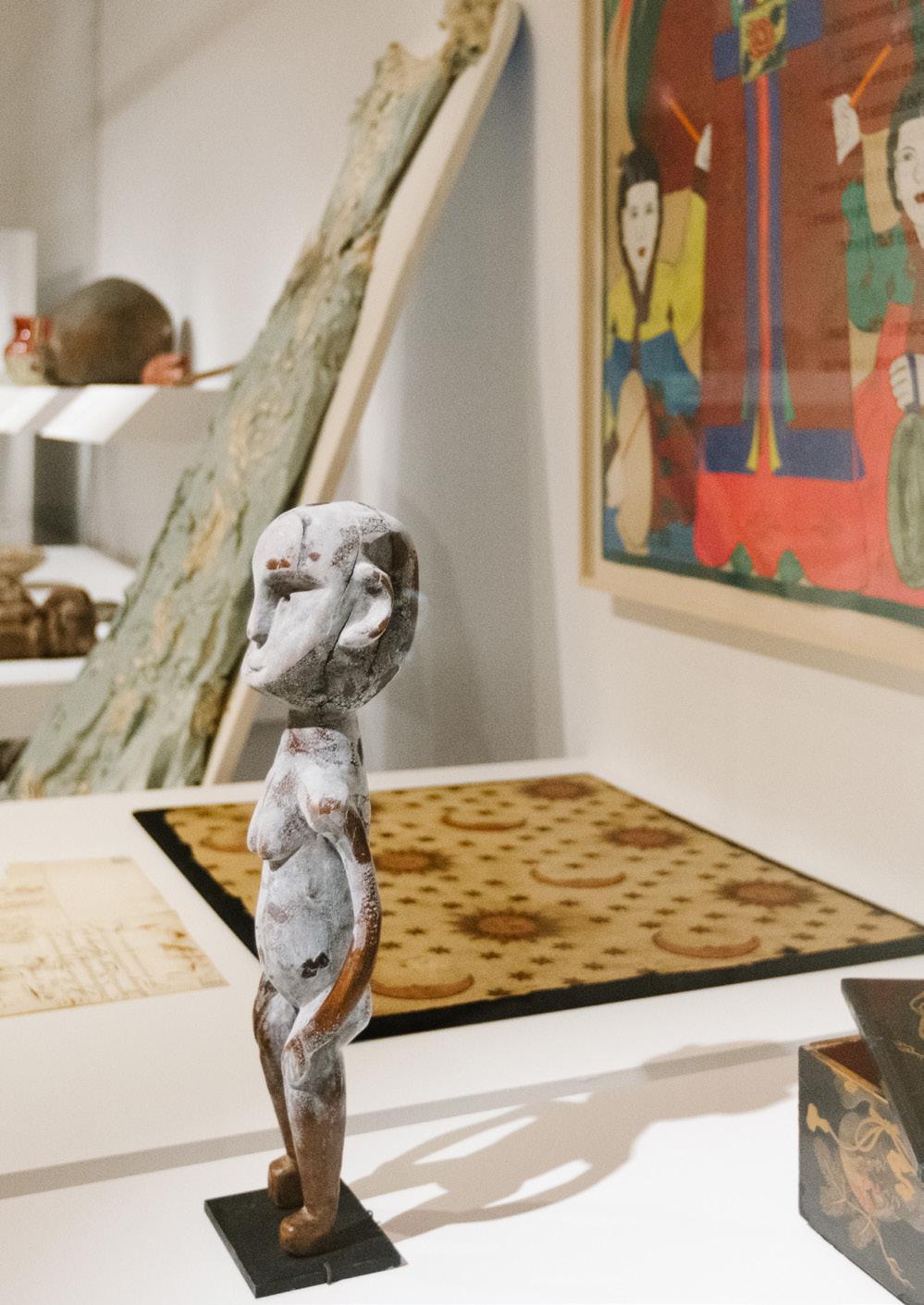
October 2, 2021
Seneca Village Professional Workshop for Educators Online
October 9, 2021
Seneca Village Professional Workshop for Educators In Person
October 21, 2021
Race-ing Whimsy: Black and Asian Figures in the Majolica Imaginary Online
October 28, 2021
Beautiful and Deadly: The Dark Side of Pigment Online
November 10, 2021
Histories of Lead Activism in America Online
November 11, 2021 Majolica Speaks! Online
November 15, 2021
Majolica Poetry Reading Online
November 16, 2021 Evening for Educators In Person
December 8, 2021
Majolica Speaks! Online
February 15, 2022
Mind Over Matter: Exploring Making Online
March 5, 2022
Mind Over Matter: Exploring Making Online
April 5, 2022
Jazmine Catasús Instagram Live Studio Visit Online
April 12, 2022
Memory Work as Care Work: Black Archives and Archival Practices Online
April 13, 2022
Lissy Mineo-Gonzalez Instagram Live Studio Visit Online
April 14, 2022
Reading with Objects: Seeking Synthesis of Eye, Mind, and Heart Online
April 20, 2022
What Does the Object Say: Puppetry as Research In Person
April 21, 2022
Objects Speak! Virtual Verbal Description Tour Online
May 10, 2022
Evening for Educators In Person
May 11, 2022
Reading with Objects: Seeking Synthesis of Eye, Mind, and Heart In Person
May 14, 2022
Plants as Artifacts: Living Practices of Sugar and Coffee In Person
May 20, 2022
Objects Speak! Virtual Verbal Description Tours Online
May 28, 2022
Film Night: Conservation and Repair Shorts In Person
June 1, 2022
Conserving Clothing, Preserving Memories In Person
June 8, 2022
Conserving Clothing, Preserving Memories In Person
June 15, 2022
Reading with Objects: Seeking Synthesis of Eye, Mind, and Heart In Person
June 16, 2022
Objects Speak! Virtual Verbal Description Tours Online
June 22, 2022
Conserving Remains: A Conversation on Death, Preservation, and Exhibition In Person
June 29, 2022
Film Night: Whale Rider and the Exhibition of Paikea In Person
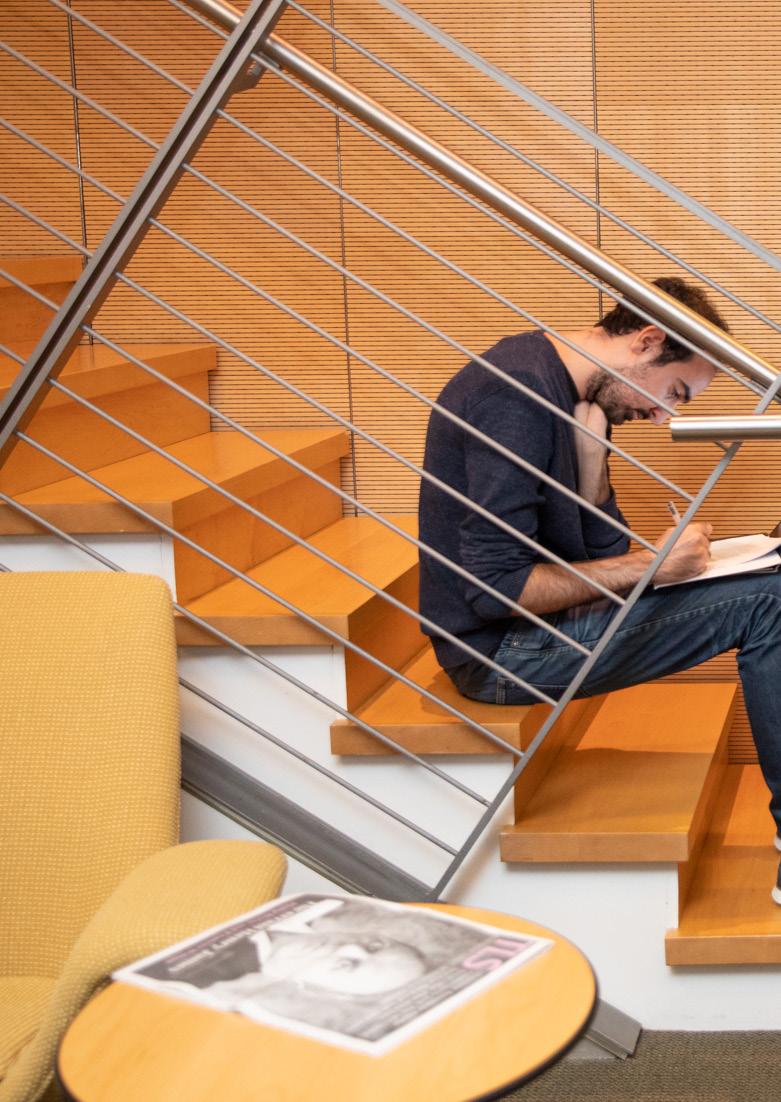
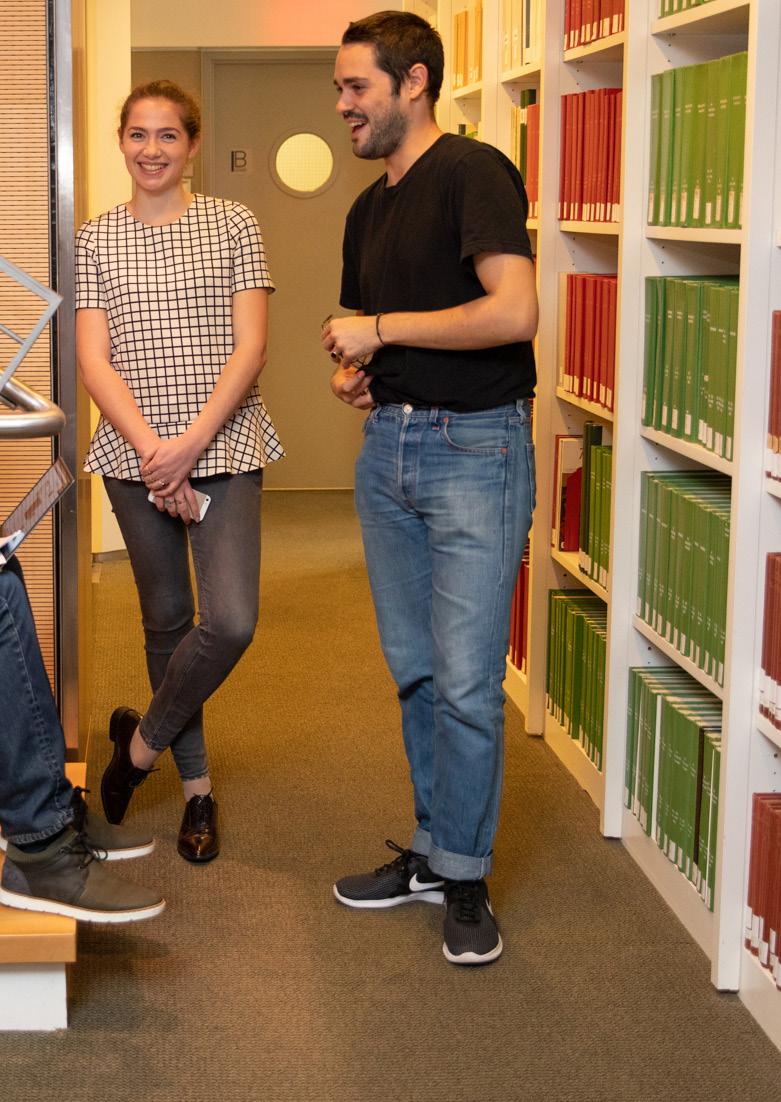
Everyone at Bard Graduate Center is very grateful for all our generous donors who maintained their support during the extraordinary challenges of 2020 and 2021. During the academic year ending June 30, 2021, Bard Graduate Center received more than $5.5 million in contributions from over four hundred private and public sources. Resources provided by these individuals, corporations, and foundations were combined with income from endowed funds and other revenue to provide the institution with the stability and the opportunity to deliver the valuable programs detailed in this publication.

Endowed Funds: 79.5%
Designated and general-purpose endowments
Contributions and Special Events: 6.5%
Contributed income from alumni, friends, foundations, and corporations
Government grants
Income from Annual Iris Awards Luncheon and other special events
Tuition & Fees: 8.8%
Tuition Application, housing, and usage fees
Other Earned Revenue: 5.2%
Publication and Gallery shop sales Facility and residential rentals
Endowed Funds: designated and generalpurpose endowments
Contributions and Special Events: income from alumni, friends, foundations and corporations; government grants; income from the Iris Foundation Awards luncheon and other special events
Tuition and Fees: tuition; application, housing and usage fees
Other Earned Revenue: publication and gallery shop sales; facility and residential sales
Fundraising and Special Events
Academic Programs: 25.9%
Faculty and academic staff, curriculum expenses, programs, independent research
Gallery: 10.6%
Exhibition research, Gallery staff, production, and publications
General Management & Operations: 17.9% Maintenance, security, technology, website, design, and finance Research Activities: 7% Research events, publications, fellowships
Administration & Fundraising: 22.6%
Director’s Office, Development, Human Resources, Finance and Administration Financial Aid: 9.6%
Tuition assistance, stipends, work study
Public Programs: 2.6%
Continuing education and outreach Residence Hall: 3.8% Management and upkeep of Bard Hall
Academic Programs: faculty, curriculum expenses, programs and independent research
Gallery and Exhibitions: exhibition research, production and publications
General Management and Operations: maintenance, security, technology, website, design and finance
Research Activities: research events, publications and fellowships
Administration and Fundraising: director’s office, development, human resources, finance and administration
Financial Aid: Tuition assistance, stipend and work study
Public Programs: continuing education and outreach
Residence Hall: management of Bard Hall
Since its founding, Bard Graduate Center has offered scholarship and fellowship packages to its students. Thanks to the generous support from a dedicated community of individuals, foundations, and corporations, Bard Graduate Center was able to support twenty-three master’s students and thirty-six PhD candidates with over $1.6 million in tuition assistance and stipends. The true value of these scholarships is reflected in the words of the students themselves:
“Coming from the small town of Fort Kent, Maine, I have been granted such a unique opportunity to live and work in New York City. Thanks to BGC’s extensive library and loan offerings, as well as my access to local institutions, I have been able to work on a wide variety of artifacts, manuscripts, and other materials both local to New York as well as across the world.”
Noah Dubay, MA ’21
“Under these unusual circumstances, thanks to your generosity, I have been able to devote large blocks of time to writing my dissertation draft and stick with my proposed schedule for completing the dissertation.”


Rebecca Jumper Matheson, PhD ’22
“Owing to your generosity, I have been able to continue my educational journey at an institution that inspires and challenges me. Though this academic year looks a lot different from most, I feel so fortunate to be here taking courses that I care about. Even without being able to gather in the classroom and the library, I know that the BGC community is welcoming and supportive.”
Julia Carabatsos, MA ’22
“It is such a privilege for me to be so generously supported as I continue to gain understanding and personal meaning from my intellectual pursuits. I am truly grateful for the opportunity your gift has allowed me. Thank you.”
Pim-Orn Supavarasuwat, MA ’22
Bard Graduate Center remembers two individuals who made enduring contributions to the institution through their scholarship, passion for decorative arts, and generosity.
Heather Jane McCormick, who pased away in October 2021 at her home in Nova Scotia, Canada, was an outstanding scholar and a dear friend to many. Heather was one of Bard Graduate Center’s earliest graduates, earning her master’s degree in 1998 and her MPhil in 2009. She was a contributing author to the Vasemania catalogue and the managing editor of BGC’s influential textbook, History of Design: Decorative Arts and Material Culture, 1400–2000
According to Susan Weber, “Heather Jane was a gifted researcher and writer, and a valued member of the BGC community.” In tribute to Heather, BGC established the Heather Jane McCormick Prize. This honor will be presented annually by the faculty to a master’s student for outstanding work in the decorative arts, design history, and material culture of New York. The inaugural prize winner was Laura Mogulescu (MA ’22) for her qualifying paper, The Foreign-Born Mother and the Materiality of Americanization: Photography and the Creation and Documentation of Americanization by the Educational Committee for NonEnglish Speaking Women.
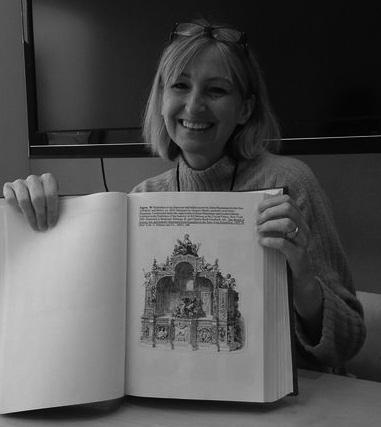
Like many in the decorative arts world, we at Bard Graduate Center were very sad to learn that our friend and board member, Philip Hewat-Jaboor, died in January of 2022 at his home in Jersey, Channel Islands.

Susan Weber reflected on Hewat-Jaboor’s impact at the most recent meeting of its Board of Trustees, noting that he had supported the institution since its founding. She said, “He was curious about and involved in every aspect of BGC’s work, and he was instrumental to our growth.”
In 2008, Hewat-Jaboor co-curated the exhibition Thomas Hope: Regency Designer and served as co-editor for its catalogue. In addition, he supported some of BGC’s most iconic exhibitions, including William Kent: Designing Georgian Britain (2013–14) and James “Athenian” Stuart, 1713–1788: The Rediscovery of Antiquity (2006–07), among others. He joined the Bard Graduate Center Board of Trustees in 2015 and chaired the nominating committee from 2019 through 2021.
Everyone at Bard Graduate Center is grateful for all Philip did to support our mission and build a bright future for the study and exhibition of the decorative arts. An award has been established in Philip’s memory to support student research and travel. The inaugural winners of the award will be announced in 2023.
Founded on the belief that the decorative arts, design history, and material culture are unique academic areas unto themselves, Bard Graduate Center is committed not only to research but also to advocacy and the visibility of the discipline. To further this mission, in 1997, Susan Weber launched the Iris Foundation Awards, which are presented to individuals whose scholarship, connoisseurship, and dedication have advanced the understanding of this field among scholars, collectors, professionals, and the general public.
On April 27, 2022, Bard Graduate Center held the 25th Annual Iris Foundation Awards. After presenting Iris Awards online in 2021 due to restrictions caused by Covid-19, it was thrilling to finally celebrate the outstanding honorees in person. The festivities also included a lecture by the Outstanding Mid-Career Scholar, Dr. Anne Lafont. This year’s lecture was entitled “Making Ornamental Africa: An Enlightenment Process.”
More than 100 donors pledged support and made generous contributions in honor of the Iris Award recipients for 2022: Deborah and Philip English, Outstanding Patrons; Dr. Helen C. Evans, Outstanding Lifetime Achievement; Outstanding Mid-Career Scholar, Dr. Anne Lafont; and Outstanding Dealer, Barbara Israel. All funds raised through the event benefit the Bard Graduate Center Scholarship Fund.
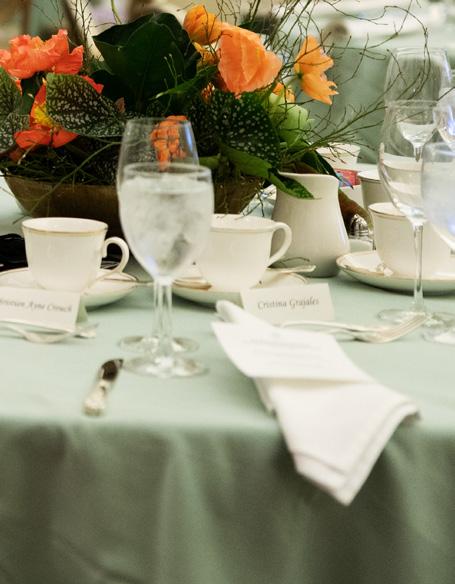
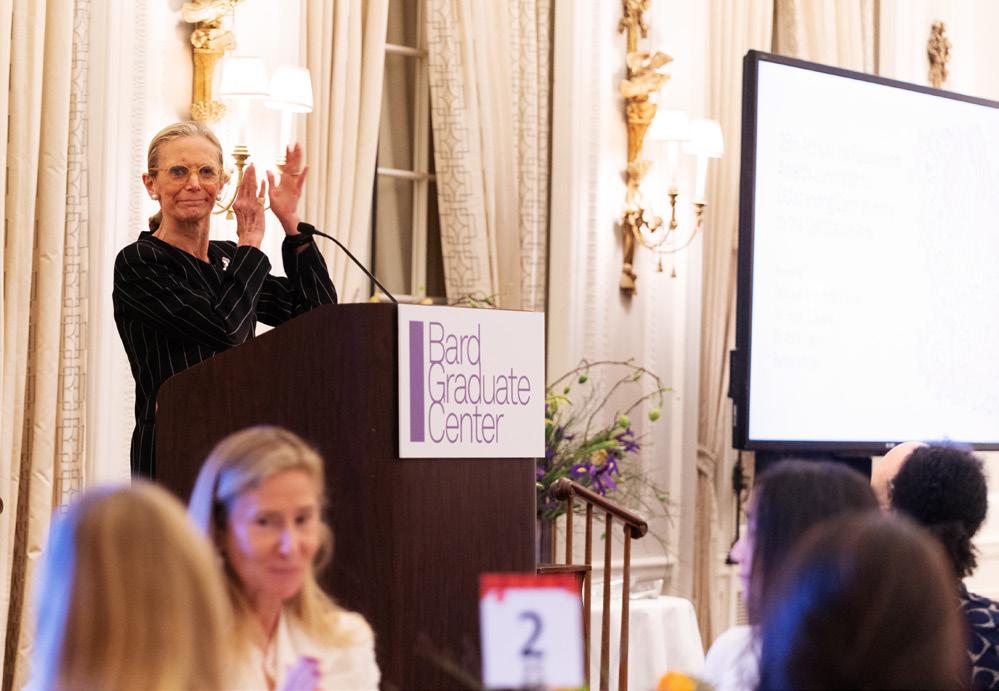

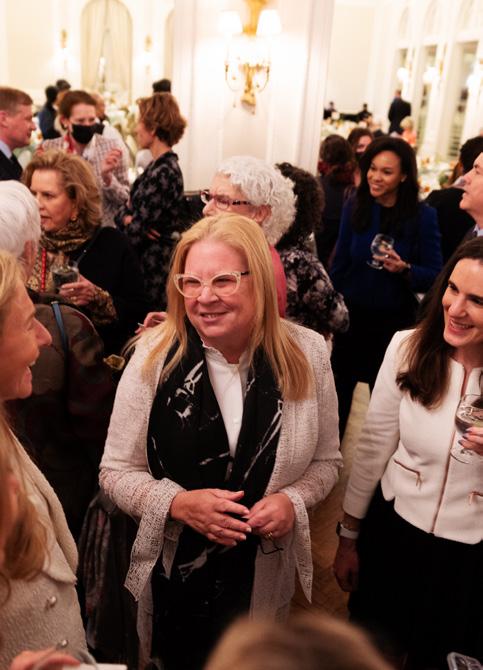


Deborah and Philip English have been devoted to supporting the arts for many years through philanthropy and the development of significant collections. The Englishes’ impact is felt most strongly in their hometown of Baltimore, where they have each served on the boards of major cultural institutions, including the Walters Art Museum, the Baltimore Symphony Orchestra, and Baltimore Ballet. As an extension of their passion for majolica, both are also active on the board of the Majolica International Society, and Deborah has established the Marilyn Karmason Majolica Library, which houses an images database holding nearly sixteen thousand entries featuring Victorian majolica and related materials. Recently, the couple made a $2.5 million gift to establish the Deborah and Philip English Curator of Decorative Arts, Design, and Material Culture and committed to donating more than five hundred objects of majolica to the Walters Art Museum. They have played a significant role as sponsors, lenders, and promoters of the Majolica Mania exhibition organized by Bard Graduate Center and the Walters Art Museum.
Dr. Helen C. Evans recently retired from the Metropolitan Museum of Art, where she served as Mary and Michael Jaharis Curator of Byzantine Art. Her exhibitions include The Glory of Byzantium; Byzantium: Faith and Power (named best exhibition of the year by the College Art Association); Byzantium and Islam: Age of Transition (its catalogue was named best new book in Islamic
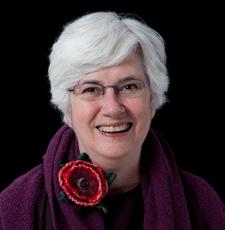
studies by Iran’s Ministry of Culture); and Armenia! She also conceived the installation of the Sacristy Museum at the Monastery of St. Catherine at Sinai, Egypt, and organized Philippe de Montebello Years: Curators Celebrate Three Decades of Collecting. Evans is a fellow of the Medieval Academy of America and serves on the boards of the Mary and Michael Jaharis Center for Byzantine Art and Culture (chair), the American Associates of the St. Catherine Foundation, and Images: A Journal of Jewish Art and Culture. In 2020, the Armenian General Benevolent Union established a scholarship in her honor for students of Armenian art, art history, and the early church. She holds a PhD from the Institute of Fine Arts, NYU, and a BA with honors from Tulane University.
Dr. Anne Lafont is a professor at the École des hautes études en sciences sociales in Paris. A specialist in eighteenth- and nineteenth-century art and visual culture in the transatlantic world, her interests include early modern art and the material culture of France and its colonial empire, as well as contemporary art, Blackness, and diasporic Africa. She has published extensively on art and knowledge in imperial contexts, artistic historiography, and gender issues. Now she is researching the invention and making of African art in the early modern period. Lafont’s books include L’artiste savant à la conquête du monde moderne; 1740, un abrégé du monde—Savoirs et collections autour de Dezallier d’Argenville; and L’art et la race: L’Africain (tout) contre l’œil des Lumières, which received the Prix Littéraire Fetkann Maryse Condé and Prix Vitale et Arnold Blokh. She recently received a fellowship from Villa Albertine (Cultural Services of the French Embassy in the United States), and she currently serves as Robert Sterling Clark Visiting Professor at Williams College.
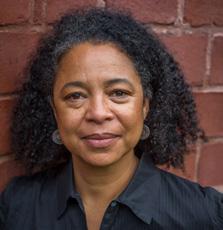
In 1985, a serendipitous visit to an estate sale and subsequent purchase of forty garden statues led Barbara Israel to found Barbara Israel Garden Antiques. After thirty-six years in business, she is recognized as an authority on the subject. Her exhaustively researched book, Antique Garden Ornament: Two Centuries of American Taste, is the definitive work in the field. Israel is also the author of A Guide to Buying Antique Garden Ornament, a userfriendly handbook packed with tips on conservation, identification, and more. She has served as a consultant to the Metropolitan Museum of Art and the Smithsonian Institution for their collections of nineteenth-century cast iron, and she has sold pieces to the Winterthur Museum, Smithsonian Institution, and Baltimore Museum of Art, as well as to many important private collectors. As an active board member of the Untermyer Gardens Conservancy, Barbara is devoted to preserving historic gardens and their antique garden ornament.

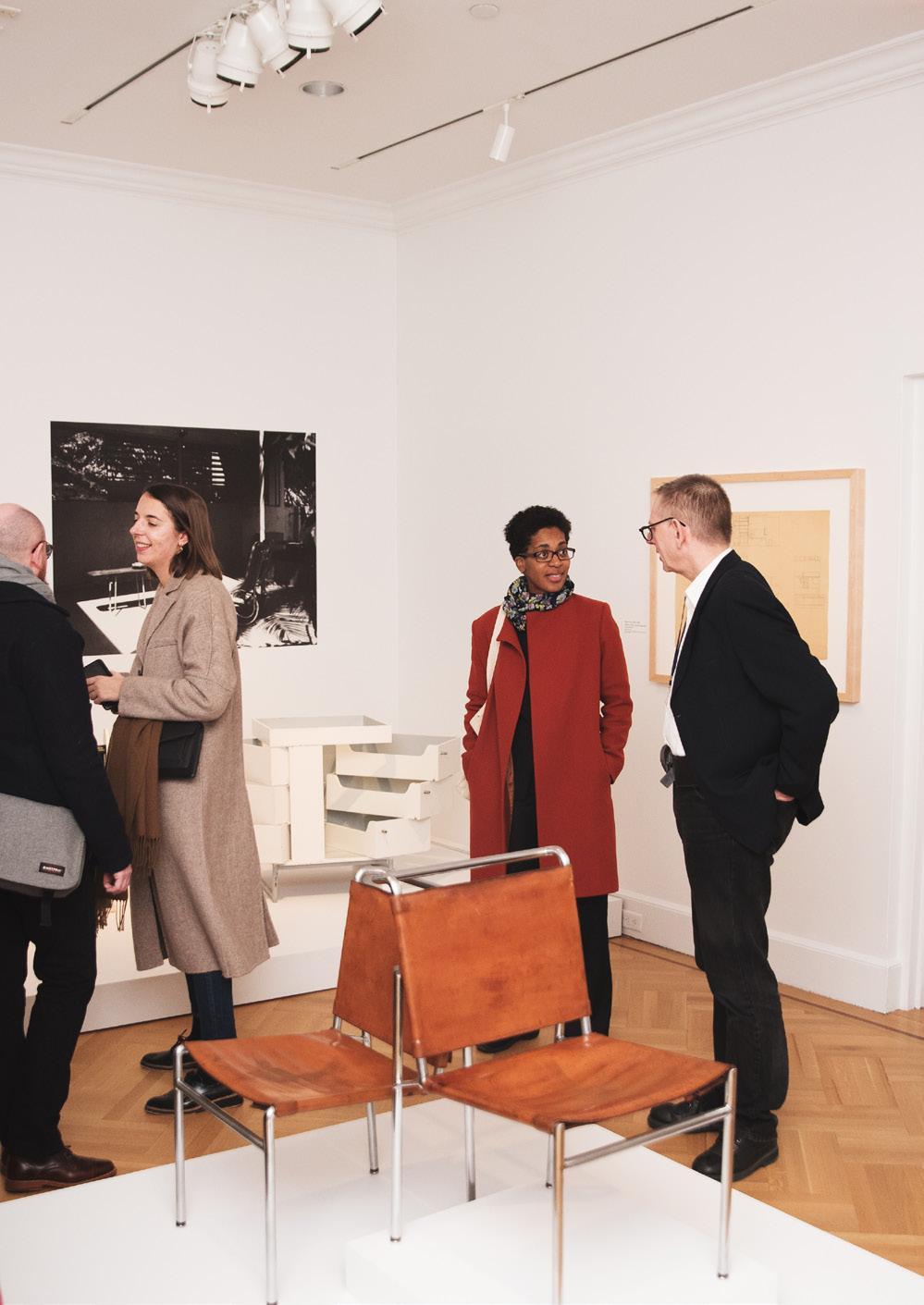
We deeply appreciate the generosity of the donors who have helped to sustain Bard Graduate Center’s core programs during the past year. Contributions and grants support financial aid to our MA and PhD candidates, exhibitions, publications, and a wide range of programs for the academic and general public. Thank you!
American Members of CINOA Award Sybil Brenner Bernstein Scholarship Bonnie Cashin Fund for Study Abroad Mr. and Mrs. Raymond J. Horowitz Foundation Institute for the Arts of the Americas Paul and Irene Hollister Lectures on Glass Iris Foundation Eugenie Prendergast Fund Françoise and Georges Selz Lectures on Eighteenthand Nineteenth-Century French Decorative Arts and Culture Peter Jay Sharp Scholarship Marilyn M. Simpson Scholarship Trehan Fund for Islamic Art and Material Culture English Professional Development Award Philip Hewat-Jaboor Memorial Award
$50,000 and Above Anonymous American Council of Learned Societies Coby Foundation, Ltd. The David Berg Foundation Deborah and Philip D. English Iris Foundation Lee B. Anderson Memorial Foundation Leon Levy Foundation The Ruddock Foundation for the Arts
The Selz Foundation
Windgate Foundation Deborah Miller Zabel $10,000–$49,000
The Abra & Jim Wilkin Fund Andrew J. Bernstein Foundation Michele Beiny Harkins The Bachmann-Strauss Family Fund, Inc. Bernard and Irene Schwartz Foundation Cowles Charitable Trust David Kordansky Gallery Dr. Lee MacCormick Edwards Charitable Foundation The Dana Foundation Nancy Druckman Frank D. Brown Charitable Trust The Gladys Krieble Delmas Foundation Agnes Gund Ingleside Investors Stephanie and Timothy Ingrassia Mary Jaharis
The John D. and Catherine T. MacArthur Foundation Trudy C. Kramer Samuel H. Kress Foundation Lenore G. Tawney Foundation Malcolm Hewitt Wiener Foundation, Inc. David Mann and Fritz Karch Vera Mayer
MR Architecture + Decor The National Endowment for the Humanities Barbara Nessim and Jules Demchick Pace Gallery Peco Foundation Pinkerton Foundation Joseph S. Piropato Ann Pyne (MA ‘07)
The Scully Peretsman Foundation Selz Foundation Judy Steinhardt Switzerland Tourism Barbara Tober Shelby White Hon. Kimba Wood and Frank E. Richardson, III Deedee and Barrie Wigmore Wyeth Foundation for American Art Philip L. Yang, Jr. $1,000–$9,999 Anonymous (4) 1stdibs
Jan and Warren Adelson Alison Jacques, London Sara M. Ansari (MA ‘10) Vivian Haime Barg Mr. and Mrs. Thomas C. Barry Kathleen and Jeffrey Baum Karen Bedrosian-Richardson Candace and Frederick W. Beinecke Jill Brienza
Dr. Elizabeth A.R. Brown* The Cafaro Foundation
Jay E. Cantor Constance Caplan Edward Lee Cave Ellen Chesler and Matthew J. Mallow Michele Cohen Elissa and Edgar Cullman, Jr. Susan Cullman Lucy and Mike Danziger Danziger Family Fund at The Chicago Community Foundation Dr. Arnold J. Davis Gus N. Davis Demisch Danant, New York Barbara and Eric Dobkin Drake/Anderson LLC
Carmen Dubroc and Lewis I. Haber Patricia Farman-Farmaian Finger Lakes Lace Guild Tobias Forster Forster Rohner AG Elizabeth (MA ‘01) and David Frankel Peter Freeman and Lluïsa Sàrries Zgonc Catherine FreudenbergTraykovski* G.C. Plumbing & Heating, Inc. Gabrellian Family Foundation Galleria Massimo Minini, Brescia galerie frank elbaz, Paris Nellie G. Gipson Golden Family Foundation Cristina Grajales and Isabelle Kirshner Carol Grossman Audrey Gruss Holly Hotchner Elise Jaffe + Jeffrey Brown Sikkema Jenkins Nancy Ann and Samuel Karetsky Fernanda M. Kellogg Wolfram Koeppe Benjamin Krevolin Dr. Minna Lee Martin and Patricia Levy Michael Likierman* Helen R. Litt Anne Mann Cynthia Manocherian Reeva Ezra Mager May and Samuel Rudin Family Foundation, Inc. Jeffrey Munger Nancy Olnick and Giorgio Spanu Laura Oskowitz Ana Horta Osório Melinda Florian Papp Anne Pastemak Liliane A. Peck* Thomas Phifer Phillips Lisa Beth Podos Rena and Sheldon Rice The Richardson Foundation Constance and Theodore Roosevelt IV
Linda H. Roth Dennis and Regina Santella Ann Scharffenberger and John Allen* Dr. Stephen K. and Janie Woo Scher Daria Shkurpela Constantine SidamonEristoff (MA ‘21) Susan T. Rodriguez Architecture • Design Ellen C. Stein
Dr. Wendy A. Stein Ellen and William S. Taubman* Seran and Ravi Trehan Lise Vogel* Cynthia Volk (MA ‘21) George Weeks Widgeon Point Charitable Foundation Mitchell Wolfson, Jr. Zubatkin Owner Representation
Additional Donors Anonymous (2) Georgette F. Balance Helena and Peter Bienstock Catherine C. Brawer Richard and Karen M. Brean Amy M. Coes (MA ‘00) Lucy Commoner and Richard Berry Brandy Culp (MA ‘04) Design Miami Benoist F. Drut Tim Ettenheim Elizabeth and Jean Eveillard Kirk P. and Robert H. M. Ferguson* Martha J. Fleischman* Edward Flower Marilyn Friedland* John Friedman and Jane Furse Robert Froelich Barbara Gottlieb Amy C. Griffin Titi Halle and Peter Felske Dr. Evelyn J. Harden James Harkess and Carol Harkess Susan Hilty
David Kesselman
Ronald T. Labaco (MA ‘02)
Madame Phyllis B. Lambert
Maryanne H. Leckie
Dr. Arnold L. Lehman
Miranda Leigh (MA ‘03)
Les Ateliers Courbet
Dr. Sarah A. Lichtman* (PhD ‘03)
Helen R. Litt
Malcolm N. MacNeil* (MA ‘97)
Brenda Martin*
Joyce F. Menschel Oliver Meslay Rebecca Mir* (MA ‘12)
Vickie Morris Heidi Nitze Judith Pineiro
Jennifer K. Pitman (MA ‘00)
Julie A. Pollitz
Jeffrey Quilter
Resnicow and Associates Inc
Irwin and M. Susan Richman* Robin and Andrew Schirrmeister Stephanie Stokes Regina and Dennis Santella Dr. Debra Schmidt-Bach (PhD ‘15)
Laura Schoen
Molly F. Stockley (MA’96)* Catherine E. Sweeney Singer Dr. Leslie Bussis Tait Mary Anne Talotta
Devon M. Thein
William M. Voelkle* Joan Canter Weber Robin J. Weber Madeline Weinrib Patricia G. Ross Weis
Dr. Catherine Whalen Steven Worthy
James M. Zemaitis
Armin Allen
Dr. Jere L. Bacharach Frances and Edward L. Barlow
Cecily Bastedo* Caroline Baumann
Richard Benenson* Dr. Rhoda L. and Dr. Roger M. Berkowitz
Marilyn Braiterman* Julia M. Brennan*
Carole V. Burga
Dr. Lisa De Zoete (MA ‘06)
Leah Decker
Jane Derickson
Rachel Epstein
Dr. Ruth Epstein
Fidelity Foundation Joy Frelinghuysen Brian D. Gallagher (MA ‘99) Gabriel Garber Sharon W. Gibson (MA ‘00)
Rae Gilson
Dr. John Stuart Gordon (MA ‘04)
Hedy Hartman* Jeannie Ingram (MA ‘01) Emily Isakson (MA ‘21) Neil Isakson
Claire S. Kedeshian Rosemary Kelty Perry S. Klepner Janet Koplos
Jessa J. Krick (MA ‘03) Roberta Krueger Rob Krulak
Sally Kuhn Karen Lawrence Charles LeDray and Matthew Wehland* Will Leland* Melissa Cohn Lindbeck* (MA’ 03) Maureen and Patrick McManus Jodi Moise Shannon Moriarity* Jerry B. Moss*
Dr. Jeanne-Marie Musto (MA ‘96) Jimmy Newcomer* Caroline O’Connell (MA ‘16) Amy Parsons and Paul Bird Shax Riegler (MA ‘07)
Trudi and Peter Richardson* Terry Rosen and Alan Hochman Enid K. Rubin
Phillip Sarrel Catherine Schmetter* Jane E. Sheffield* Barbara Shulman Seth Shulman* Stefanie Siegmund* Dr. Peter R. Smith Christine A. Smith* Robert H. Smith* Terrance O. Sneed* Claude A. Saucier* Virigina Seay (MA ‘14) Philip Siebert Stephanie Stern Linda Sylling Nora Tezanos Paul D. Trautman Oresti Tsonopoulos Haruko Uramatsu Donna and James Viola Patricia Vitanza* Wendy Waterman* Lisa Wassong Hadassah R. Weiner Majda Kallab Whitaker (MA ‘03) Steven Whitesell (MA ‘07) Gabriel Wiesenthal* Douglas Wingo*
Gifts were made in honor of the following: Roan Everett Conrad Nancy Druckman Daniel Mark Epstein Dr. Helen C. Evans Joan Stacke Graham Cristina Grajales Barbara Israel Martin P. Levy Peter N. Miller Daniel Ryniec Ronnie Suslow Dr. Susan Weber
Gifts were made in memory of the following:
Laurie Schneider Adams Hollis Hoelscher Barnhart Philip Hewat-Jaboor Heather Jane McCormick
Gift-in-kind contributions made to Bard Graduate Center Library and Study Collection
John B. Adams Heath Ballowe (MA ‘23) Jessamyn Conrad Leah Creatura Colin Fanning (MA ‘13, PhD candidate) French & Co. Donna Ghelerter Titi Halle Rodney Keenan Wolfram Koeppe Allan T. Kohl Martin and Patricia Levy John T. Lillis and Jeffry F. Bailey Michele Majer Earl Martin Ann Meyer Carol Mihaly Claude A. Saucier* Dr. David A. Taylor Jennifer Tobias Madeline Warner (MA ‘20) Shelby White Susan M. Yecies
108 2020–22 in Review

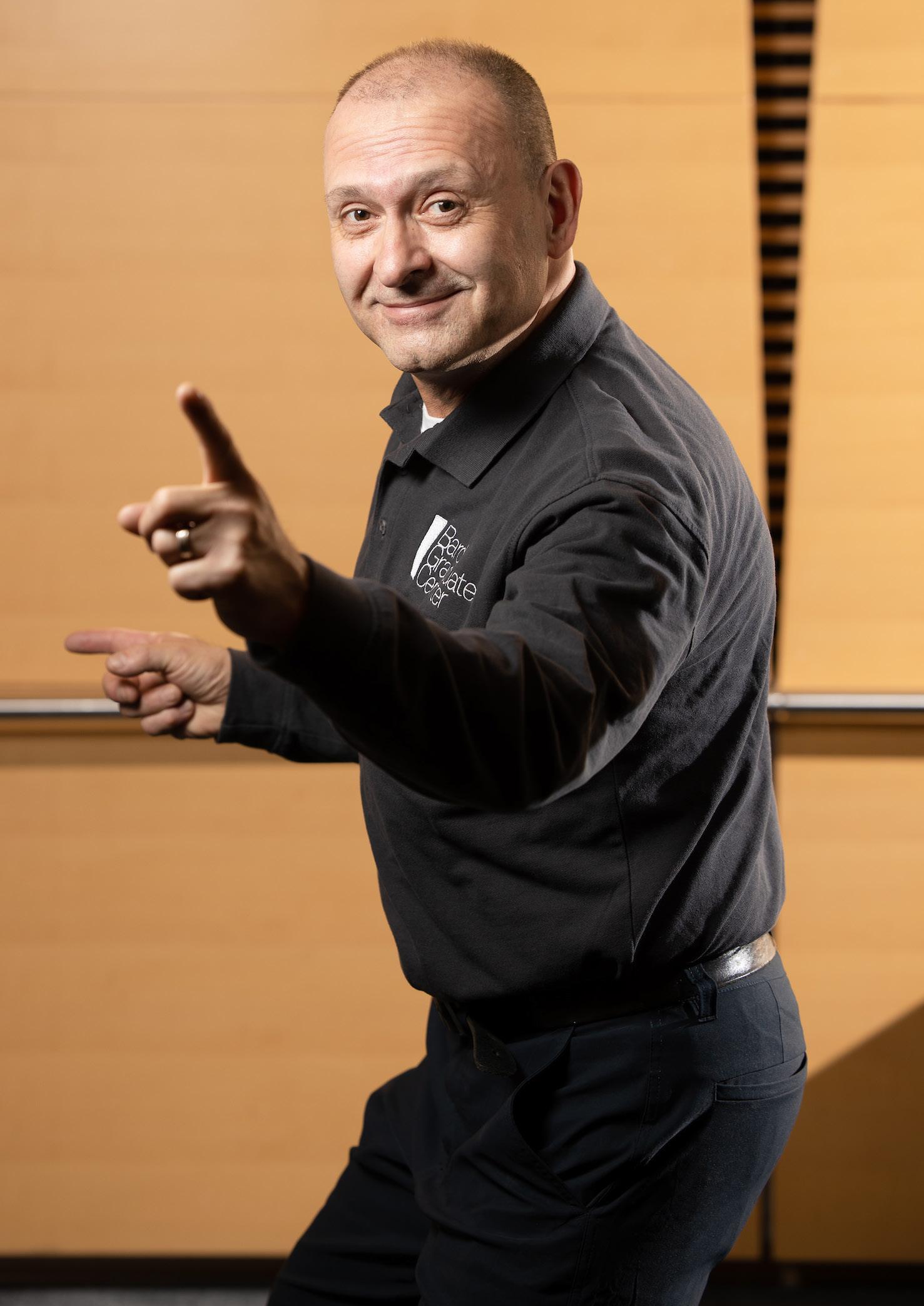
Photo credits: Front cover, clockwise from top left: Berenice Abbott. Portrait of Eileen Gray, ca. 1925. Silver gelatin print. Collection Gilles Peyroulet, Paris. Eileen Gray. Fauteuil Bibendum, ca. 1927-29. Wood, tubular steel, canvas. Collection Jacques De Vos, Paris. Photograph: Studio SLB-CH BARAJA. Jeanne Lanvin. Motorist, Paris. “The new professions for women since the war,” Excelsior, June 24, 1917. SIlver gelatin print. © Excelsior–L’Équipe / Roger-Viollet, RV-72195-58. “Feuille Morte” dress, summer 1914. Silk. © Patrimoin ae Lanvin, Paris. Photograph: Bruce White. Back cover, clockwise from top left: Camping tent, model reproduction by Matthew Ragsdale, 1993–94. Basswood and plywood. Irish Architectural Foundation, Dublin, 2006/15.8. Eileen Gray. Table à desservir de la salle à manger (Dining room serving table), 1926–29. Painted wood. Centre Pompidou, Musée national d’art moderne, Paris. Purchase, 1992, AM 1992-1-4. Jean Villemot. Smith College Relief Unit suit, 1917. Wool. Smith College Historic Clothing Collection, 1981.13.Jamison.a-e. Caricature of a man and woman in a bar wearing work overalls: “And your man, what’s he doing, meanwhile? / My man? He’s busy at home. He’s darning my silk stockings . . .” La Baionnette, October 4, 1917. Private collection. Abercrombie and Fitch.
